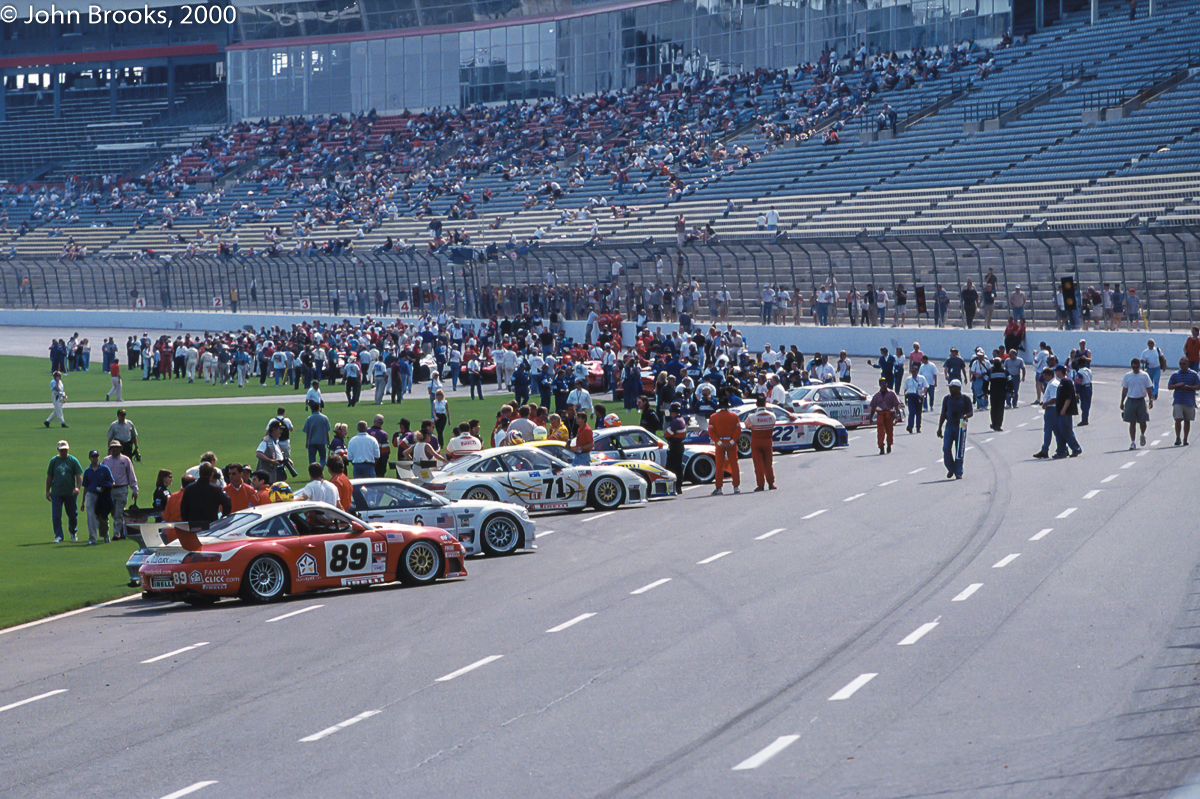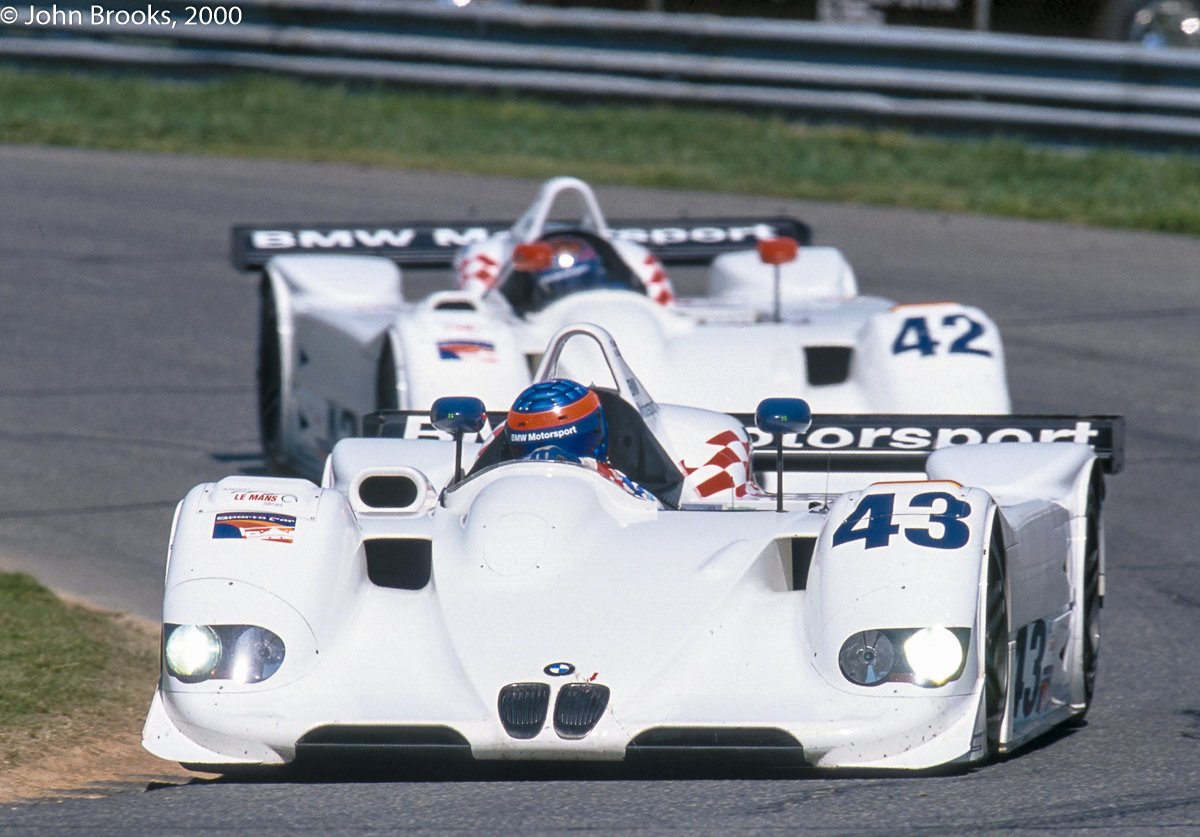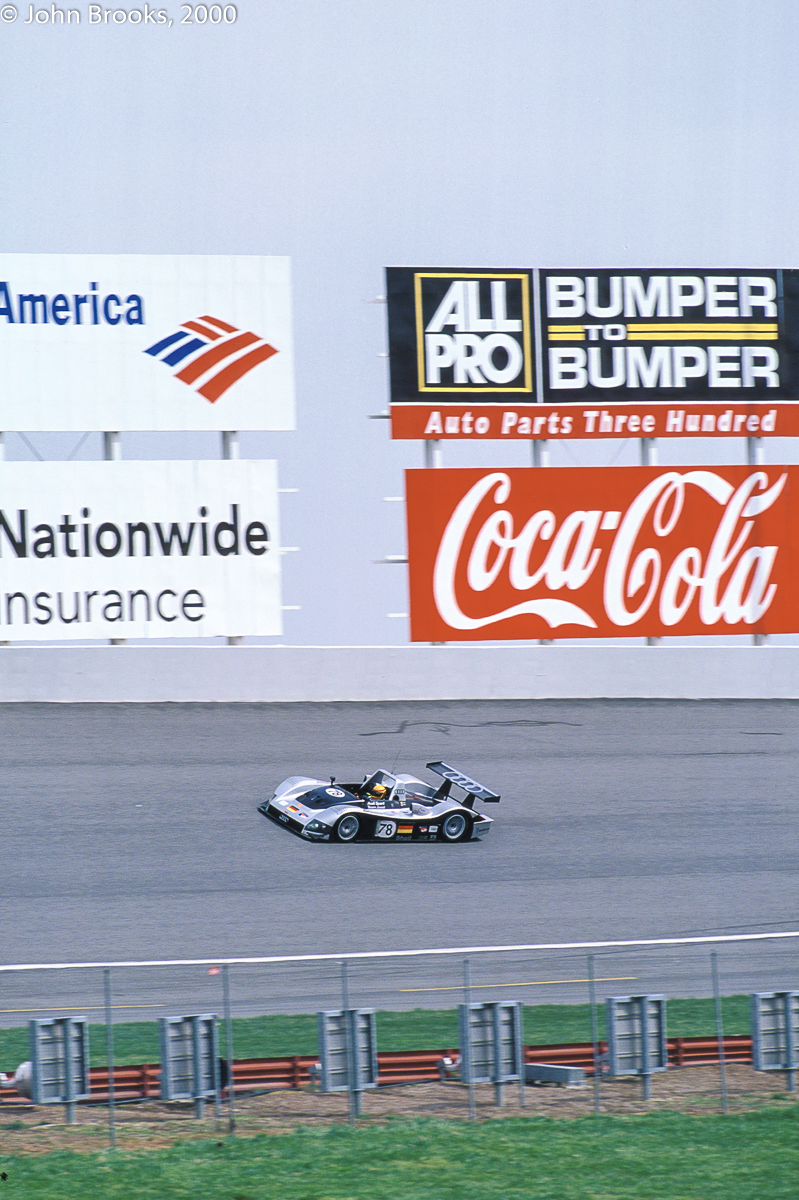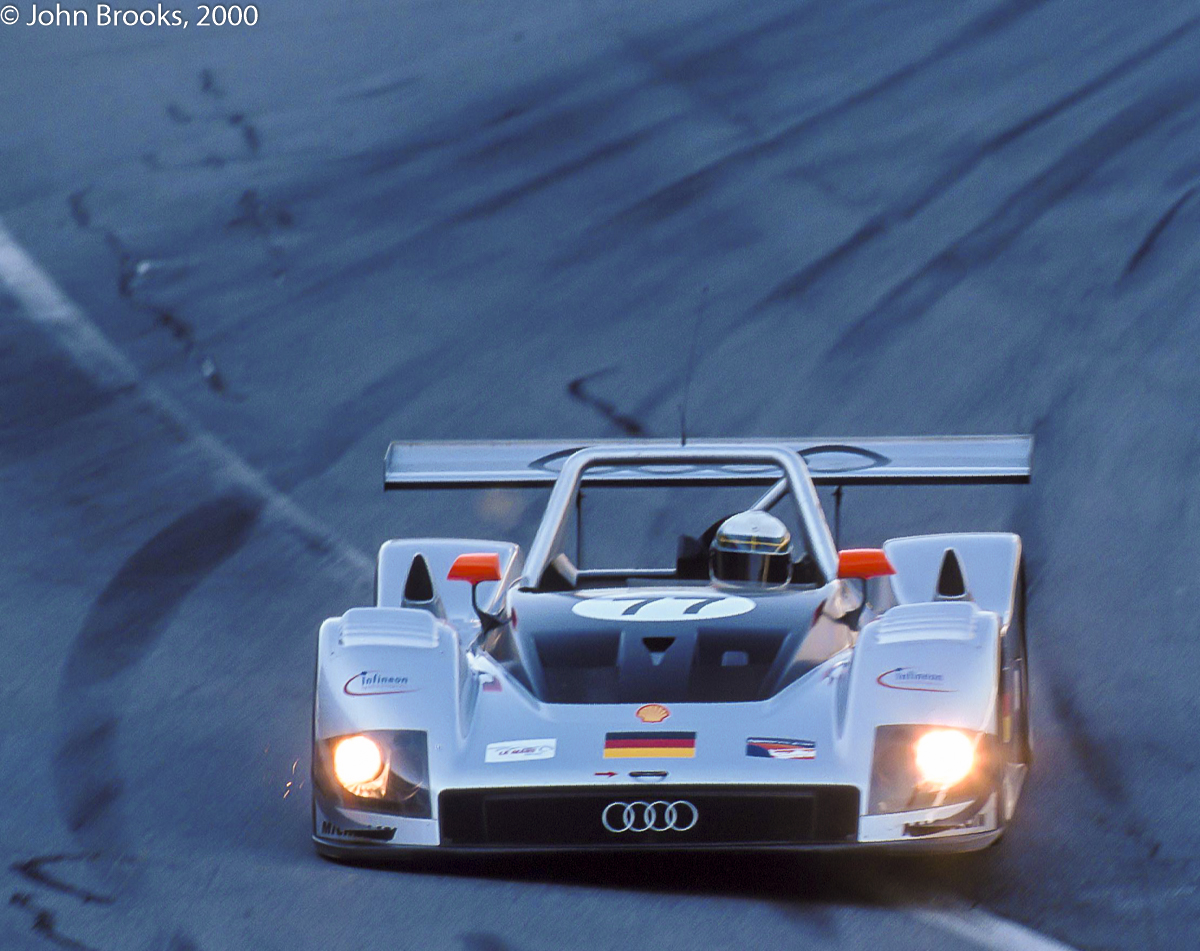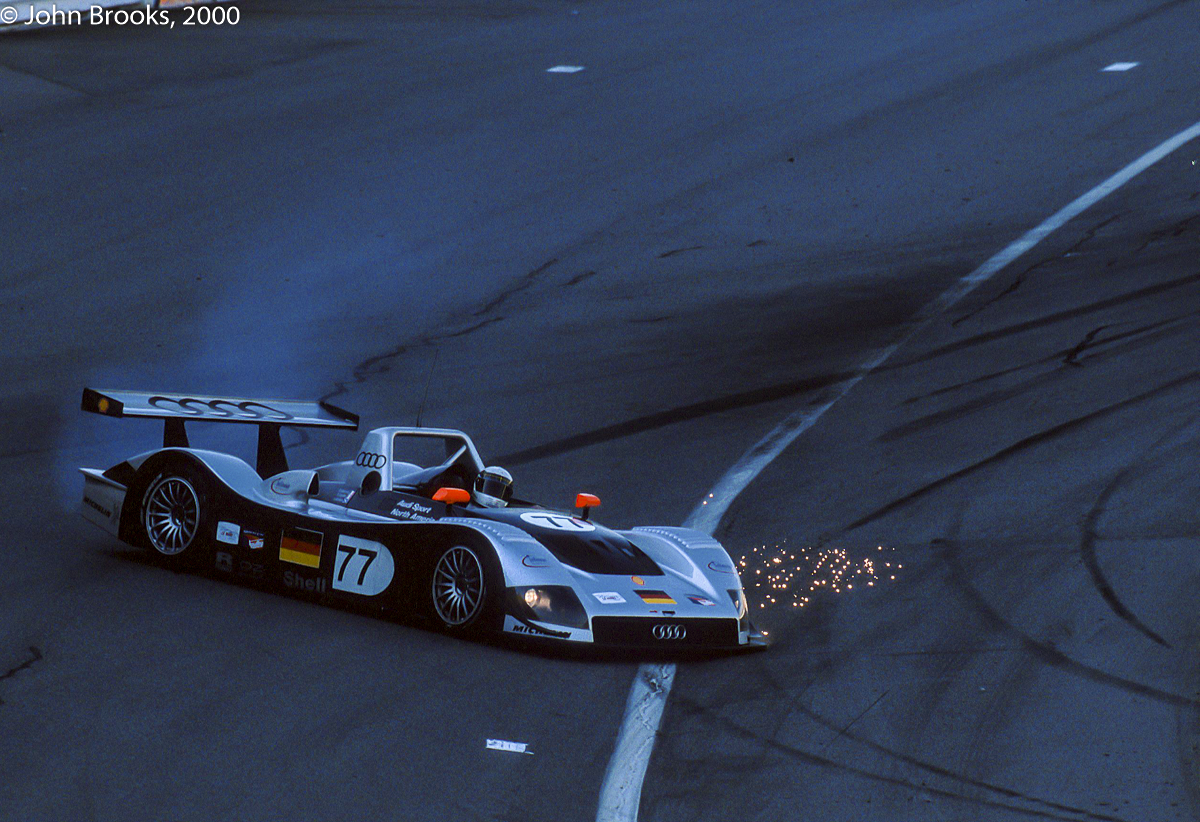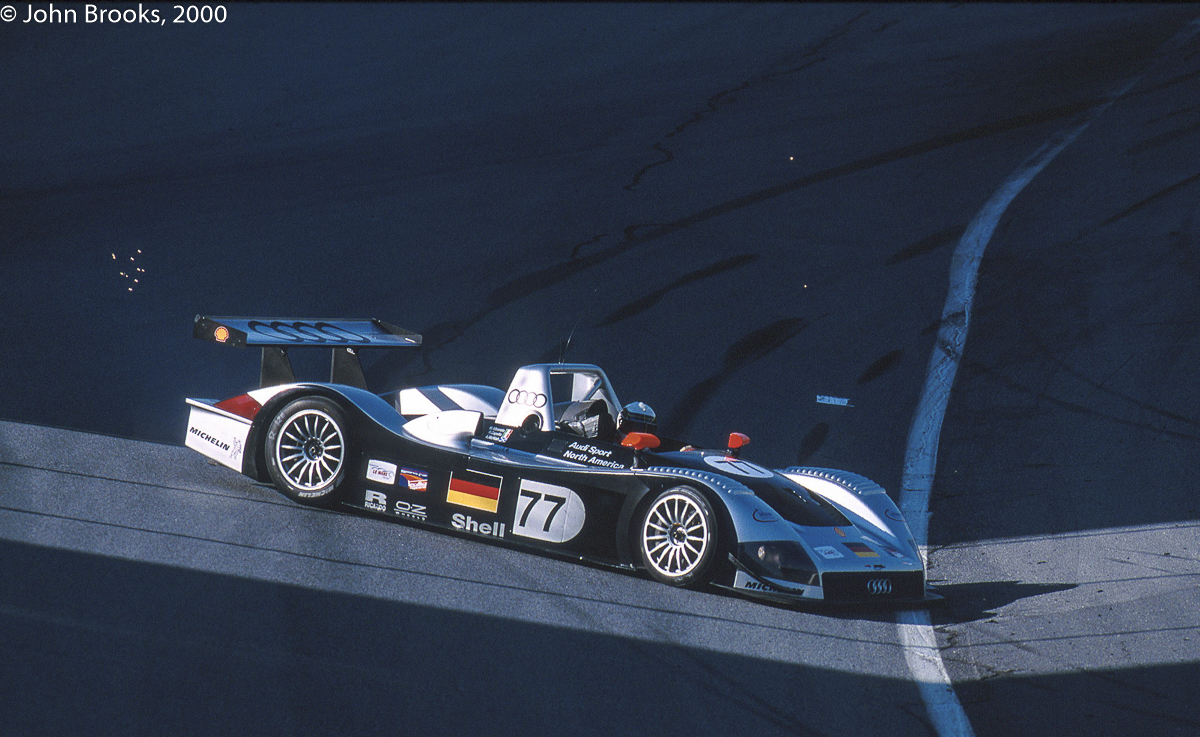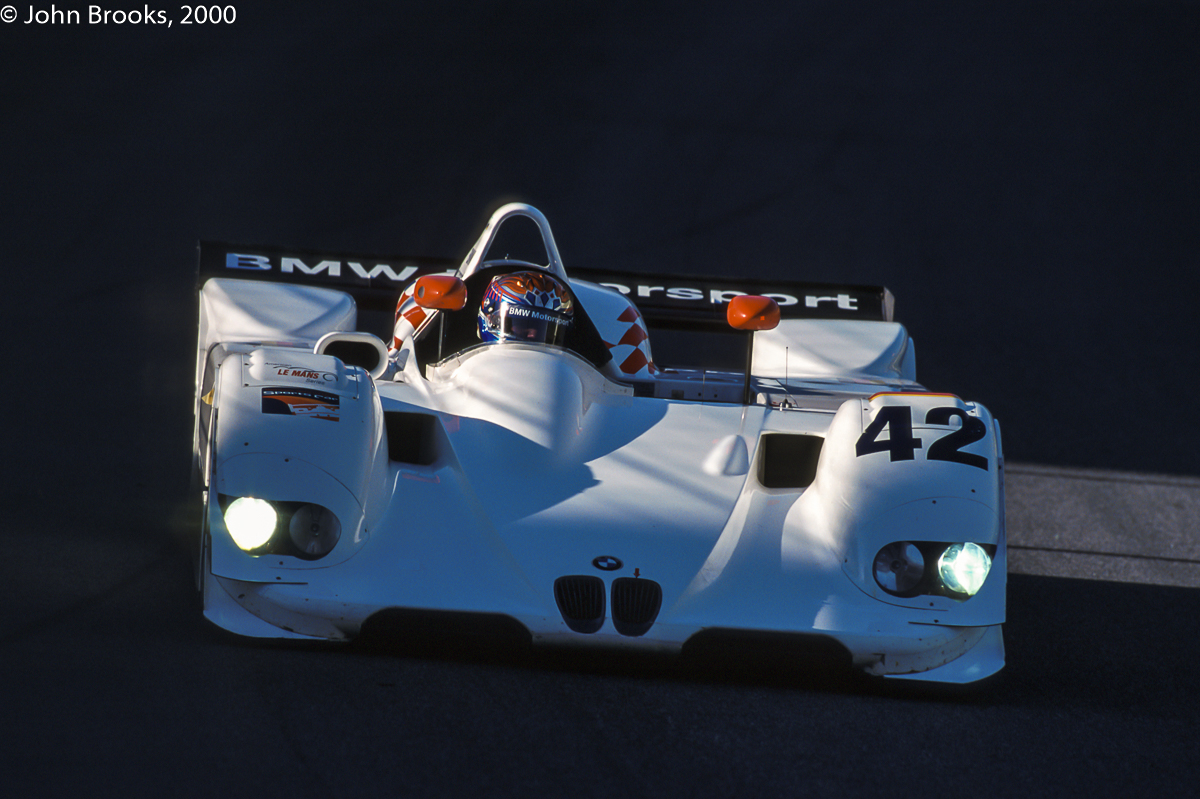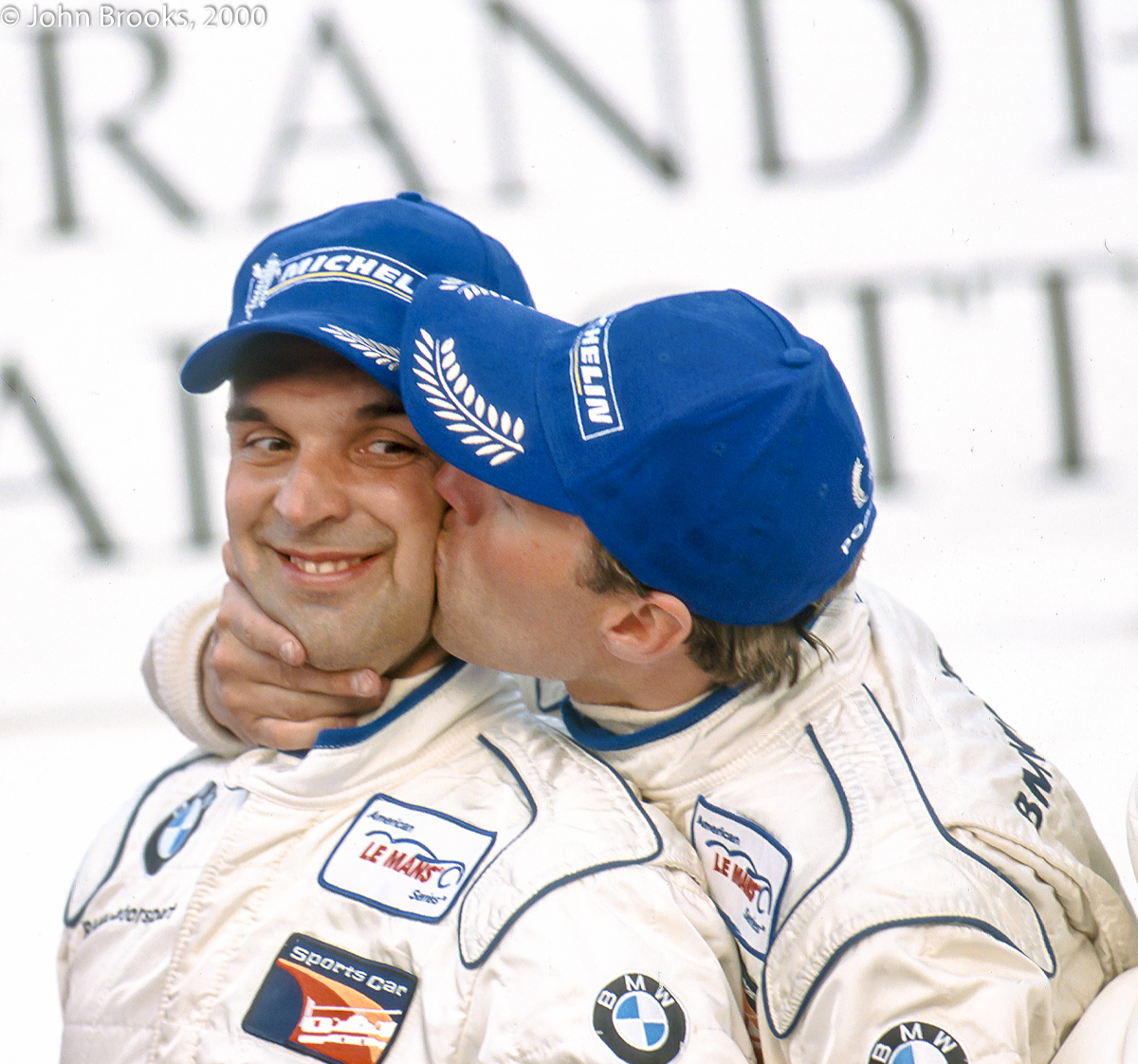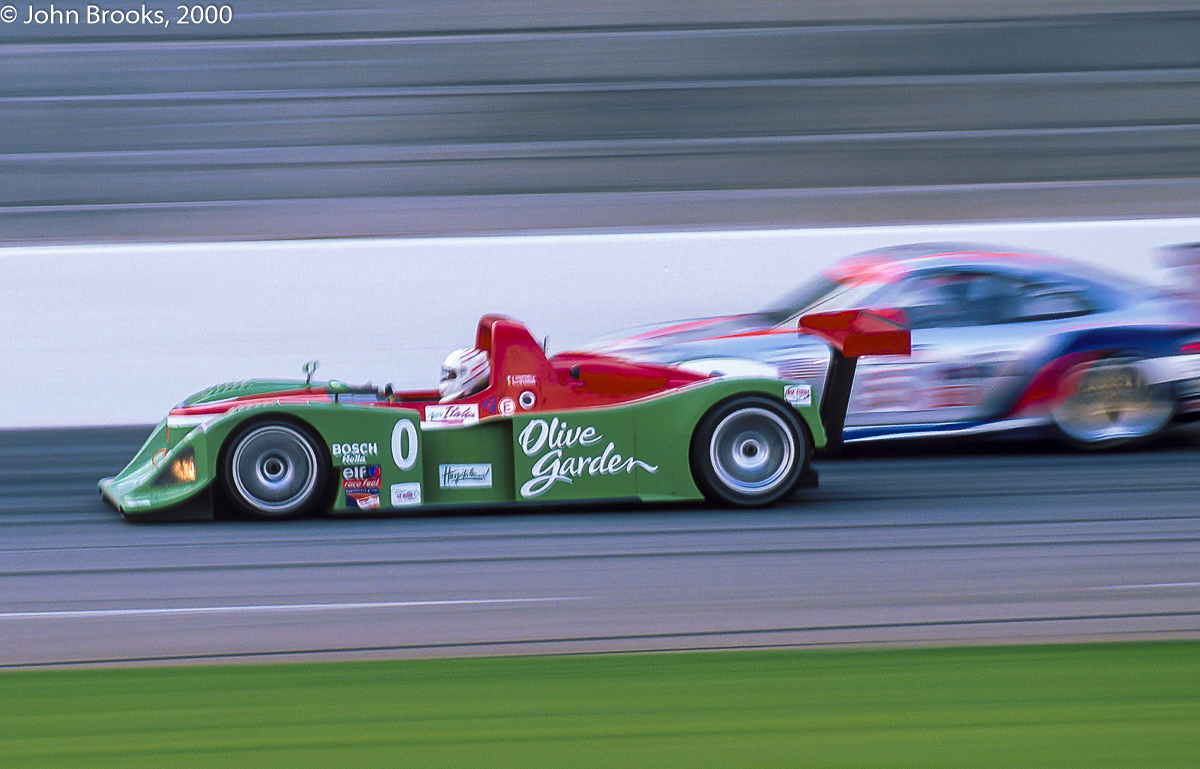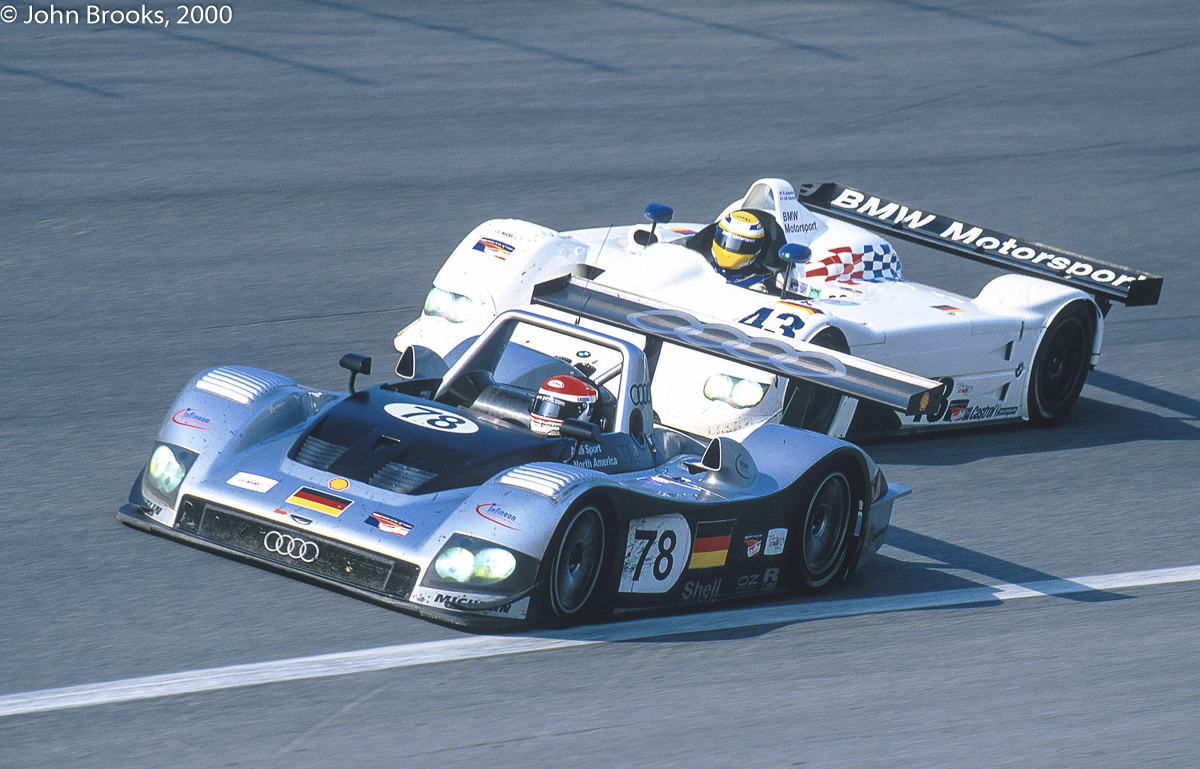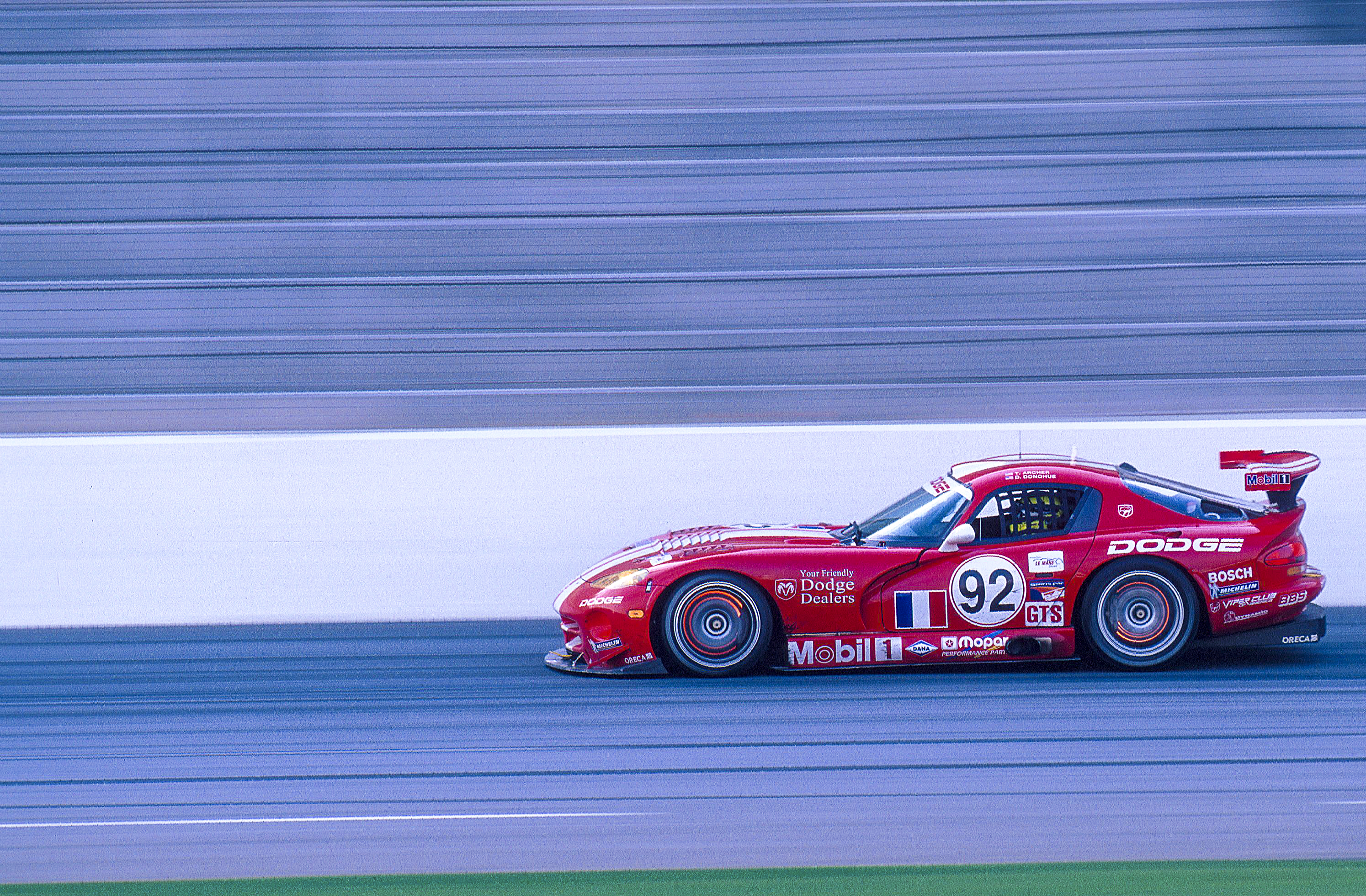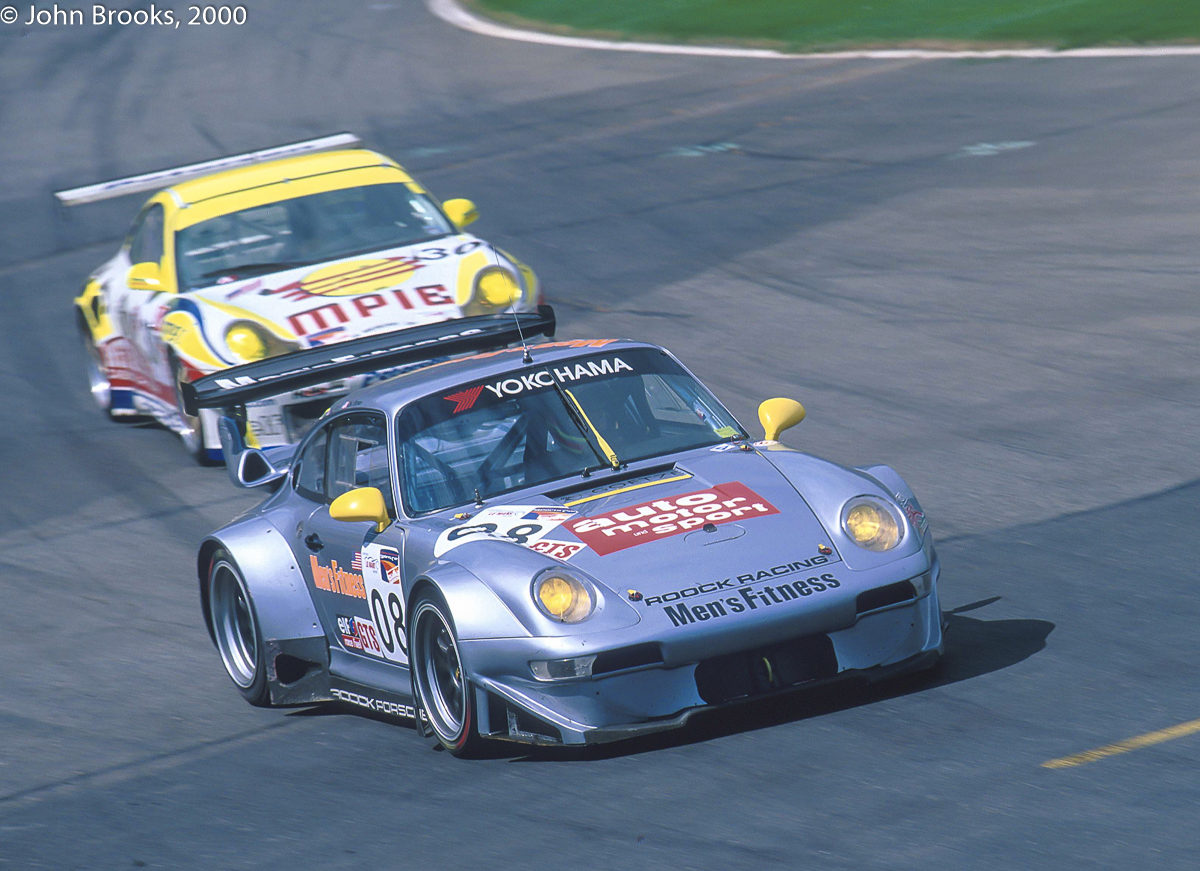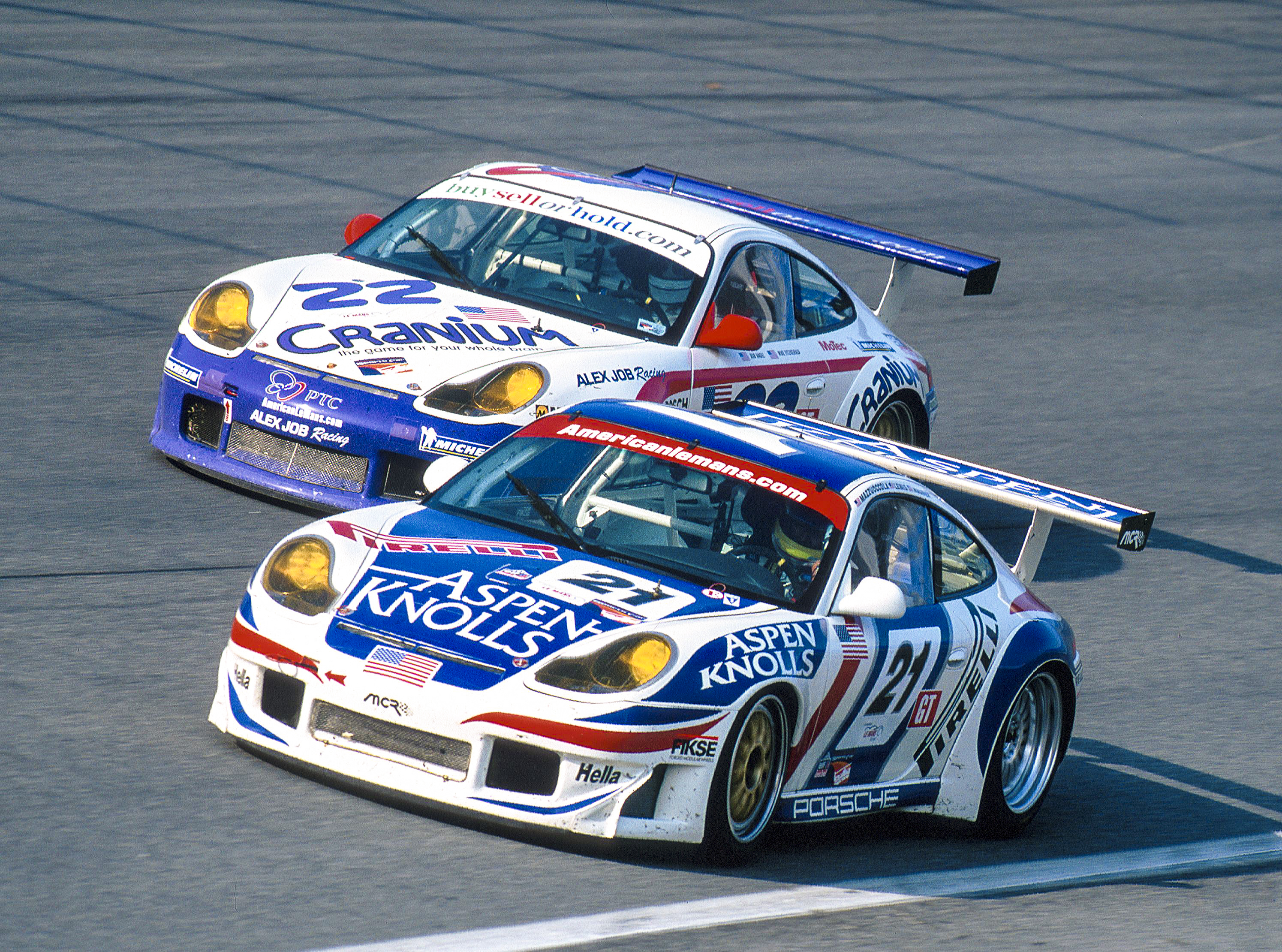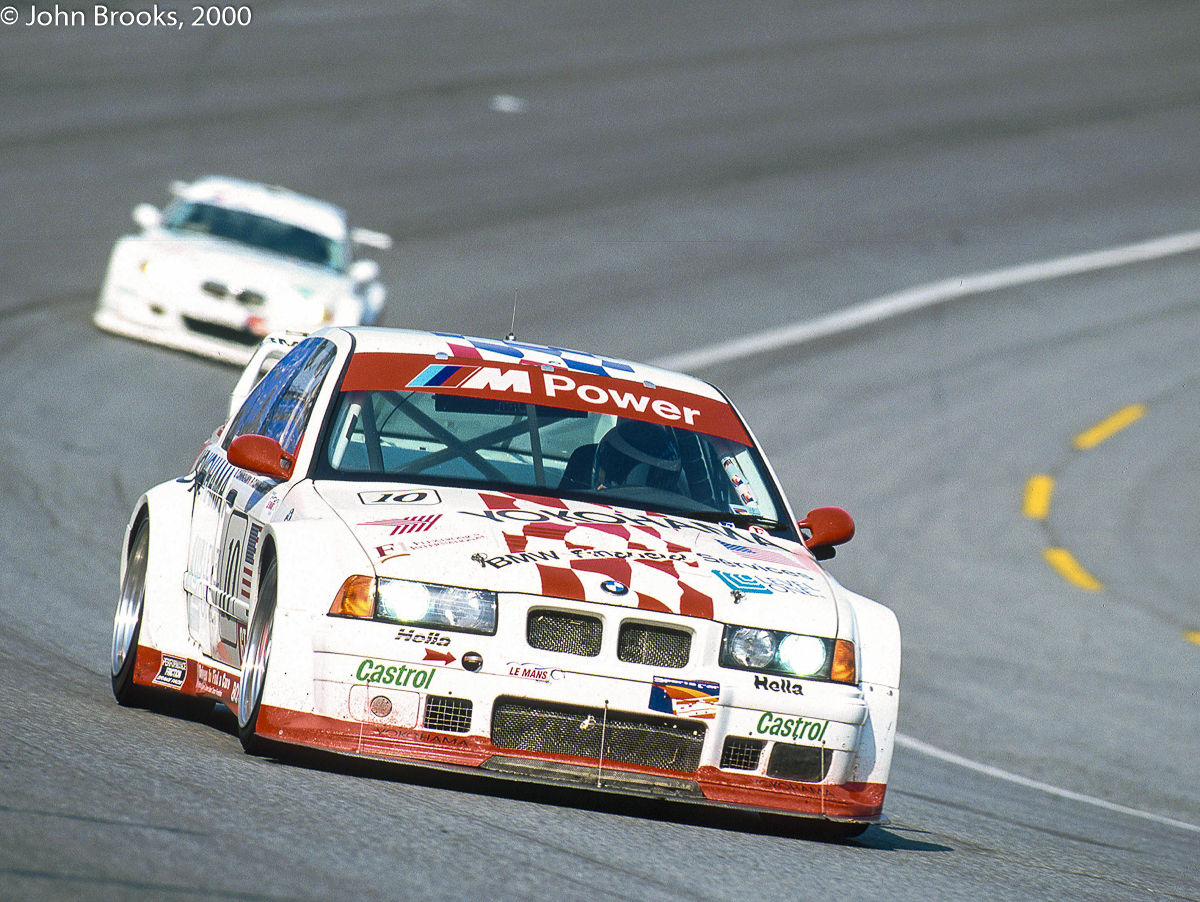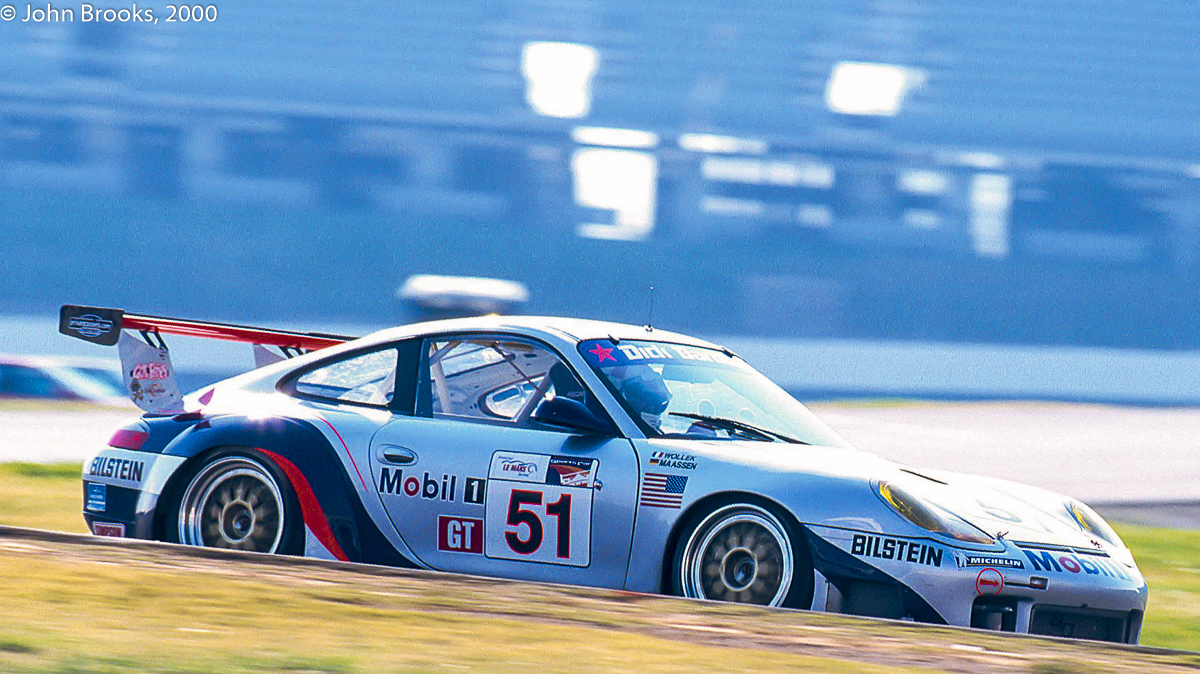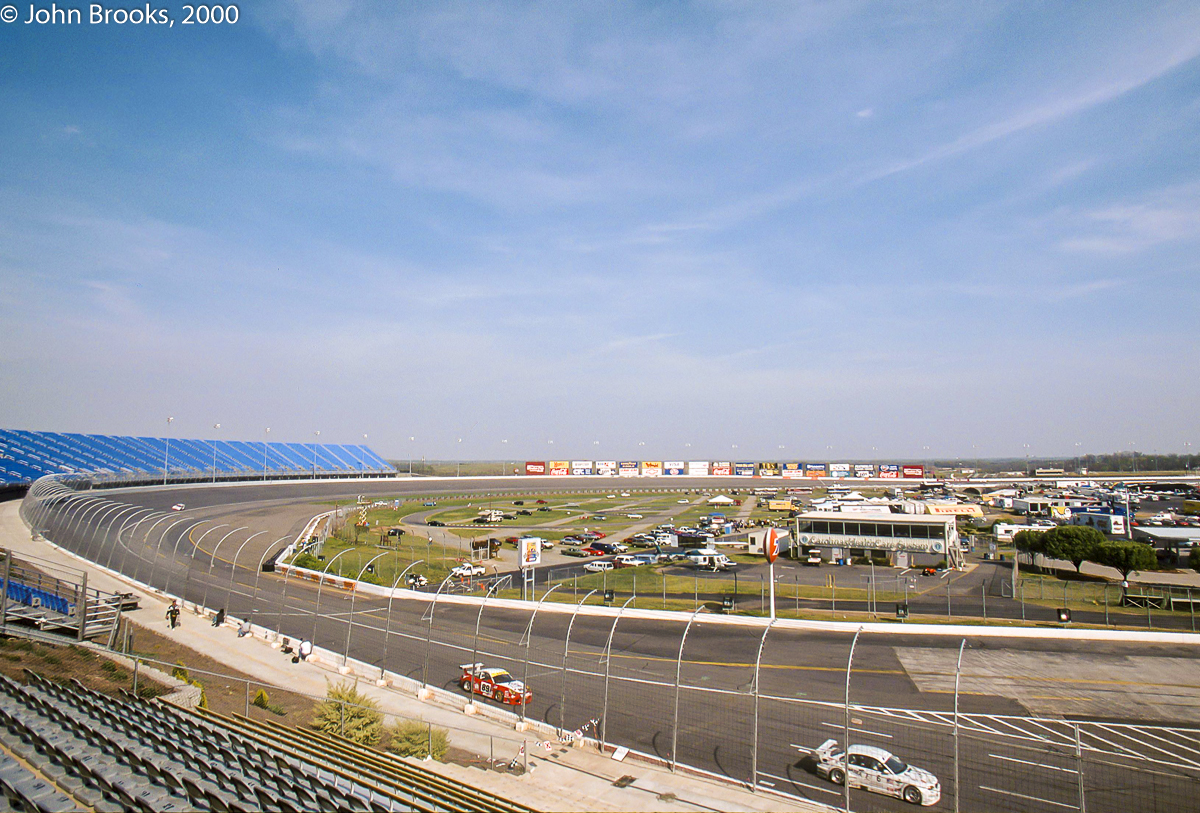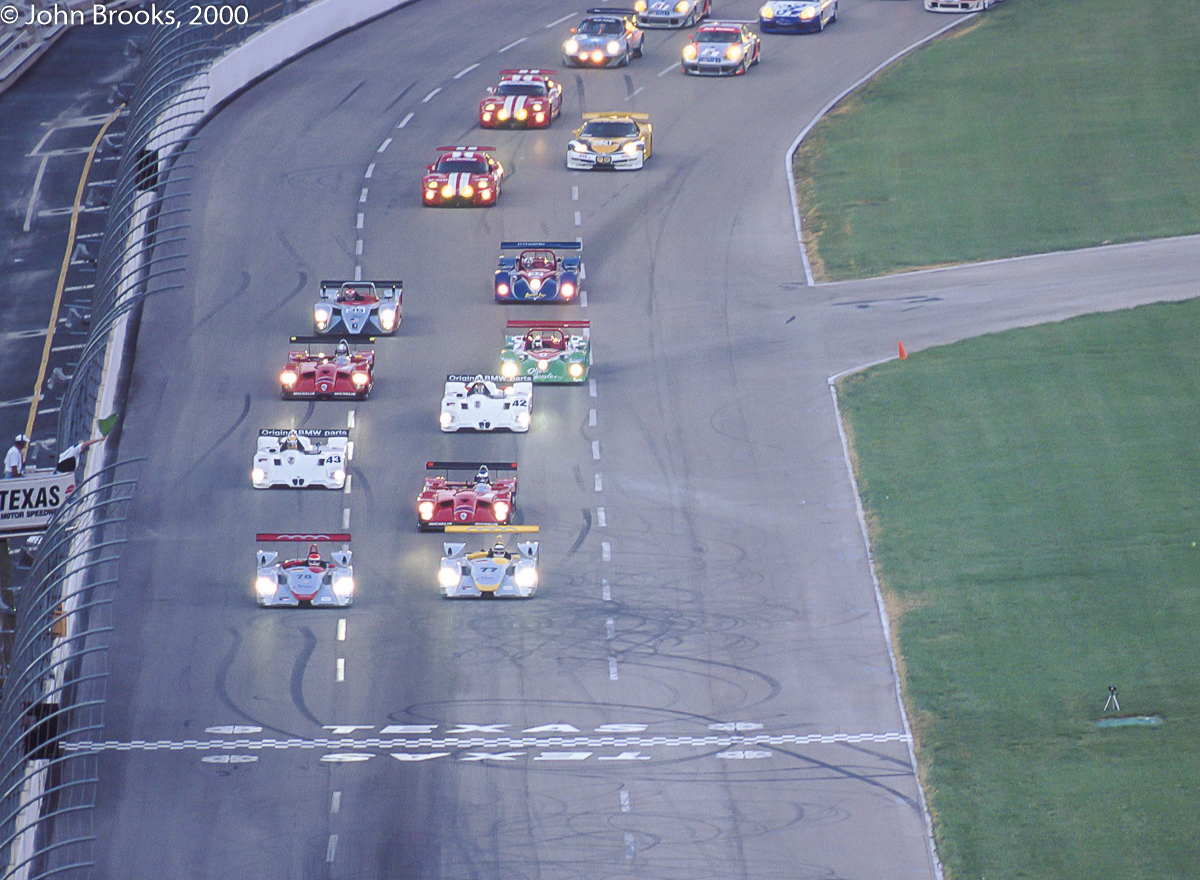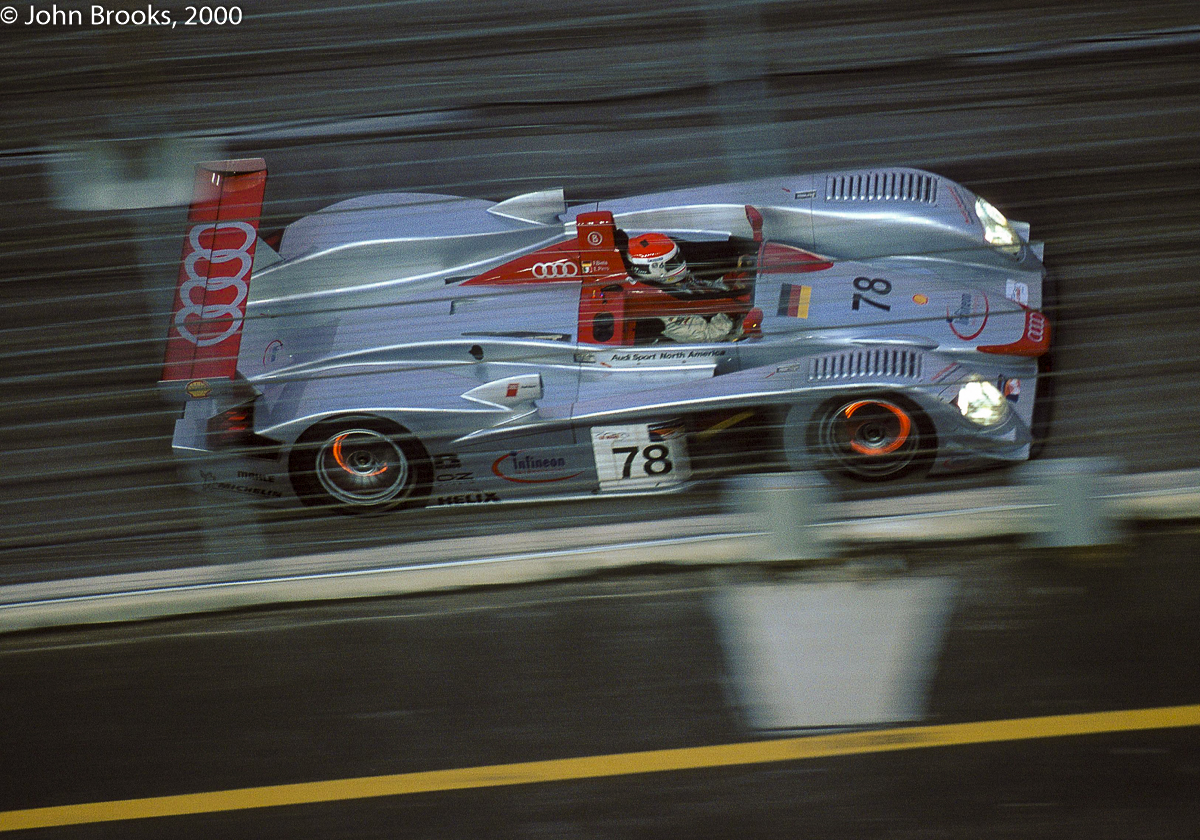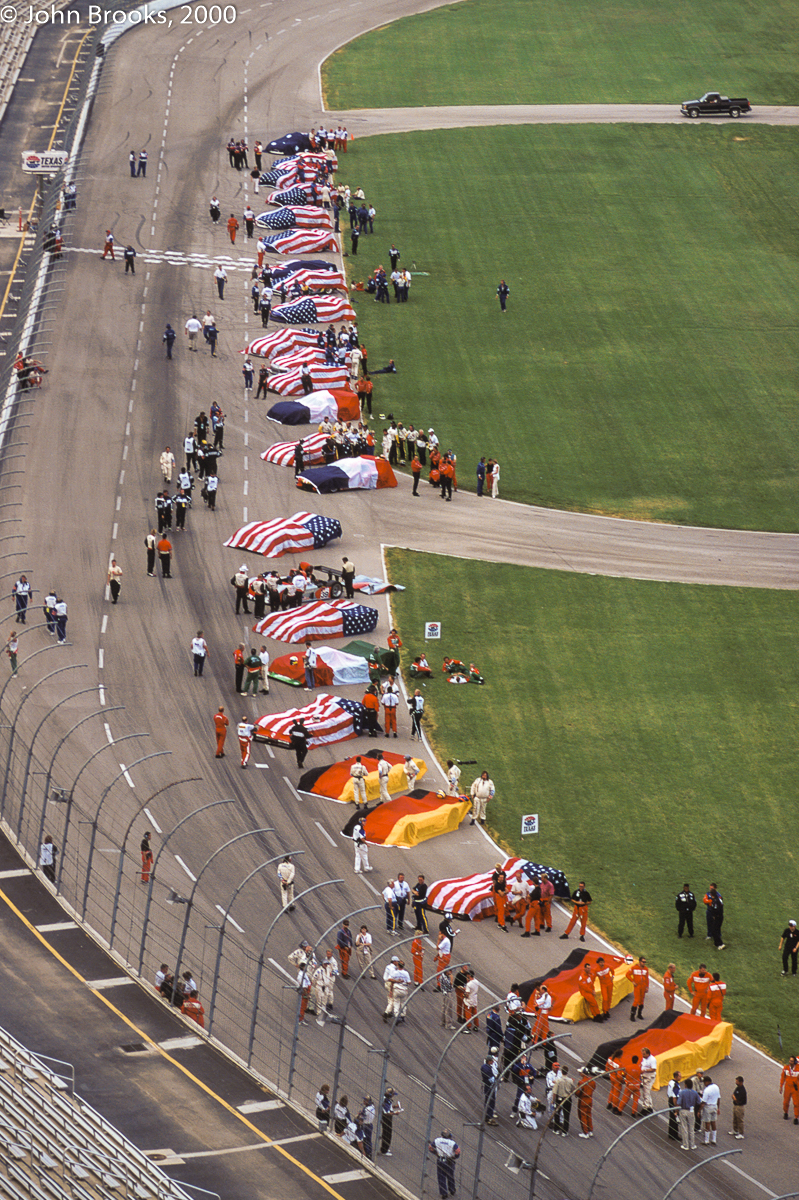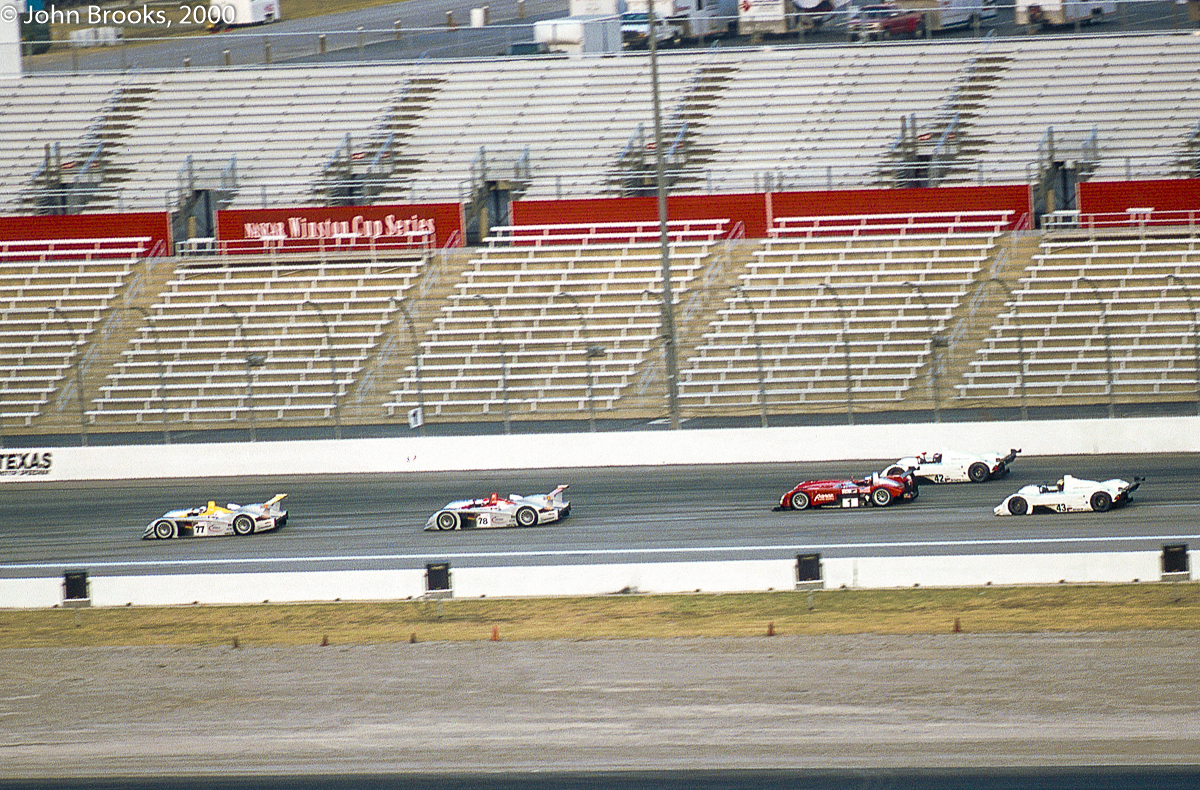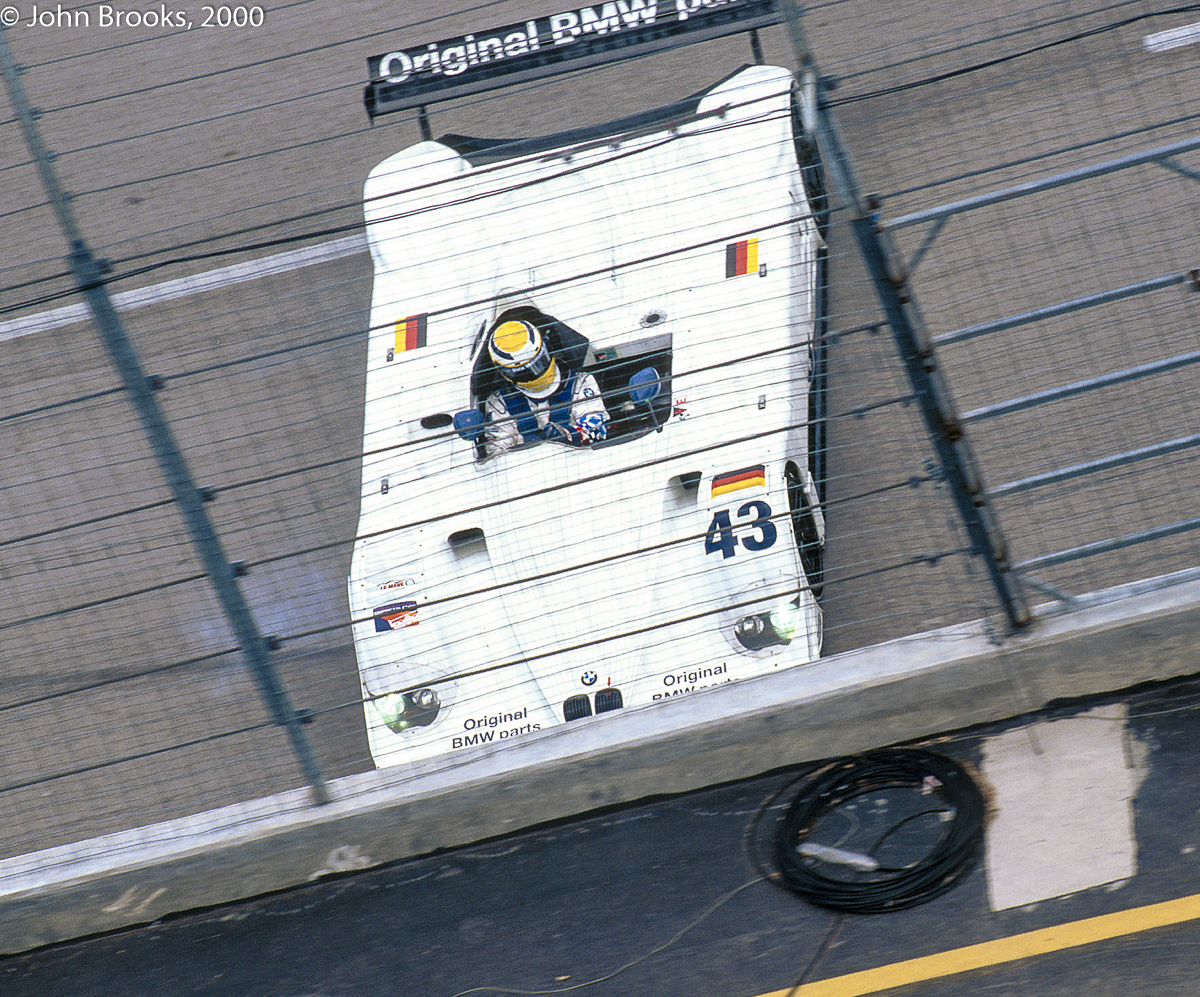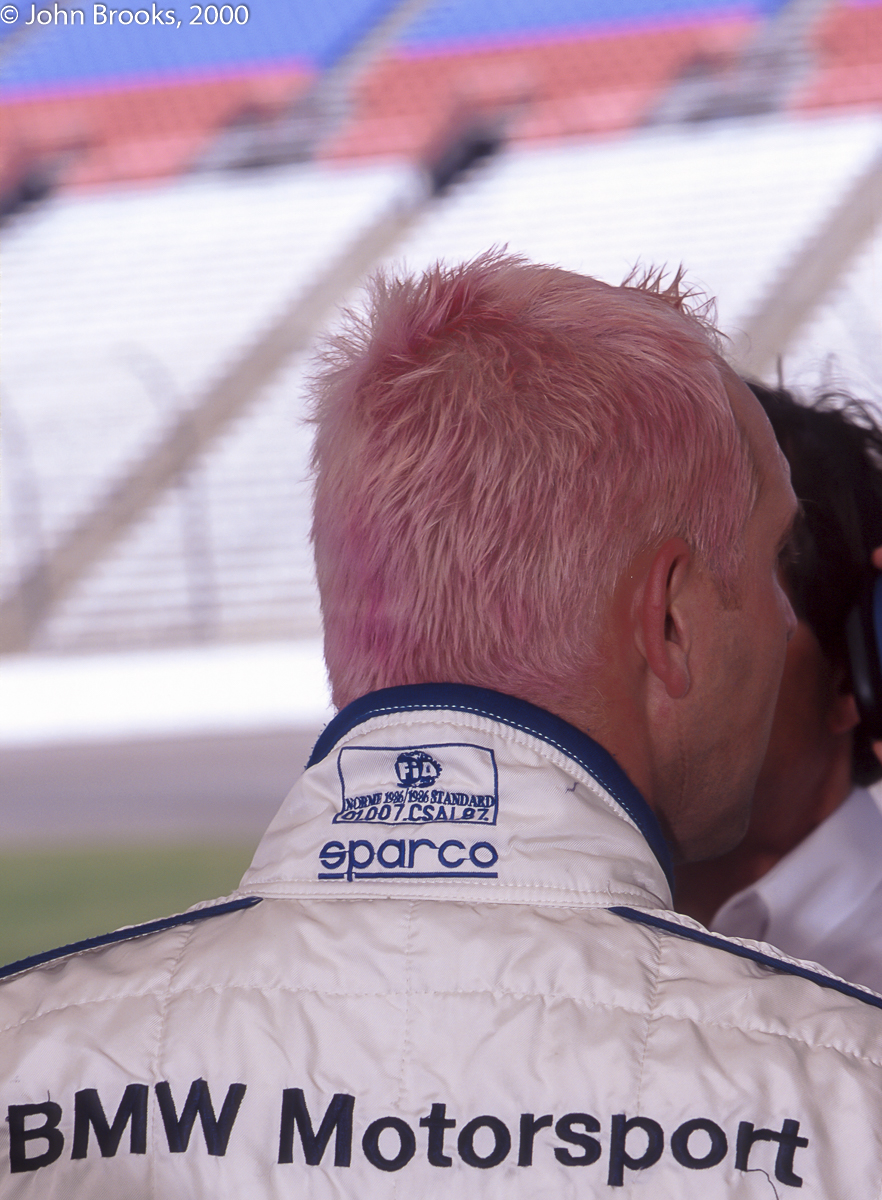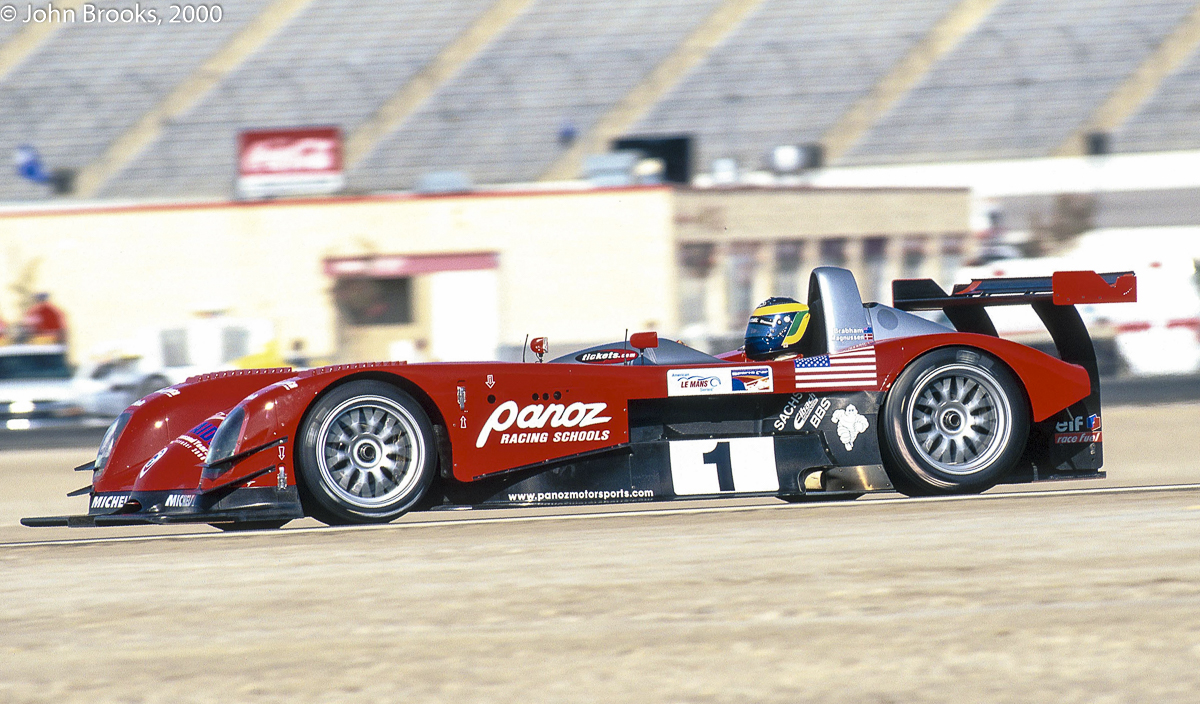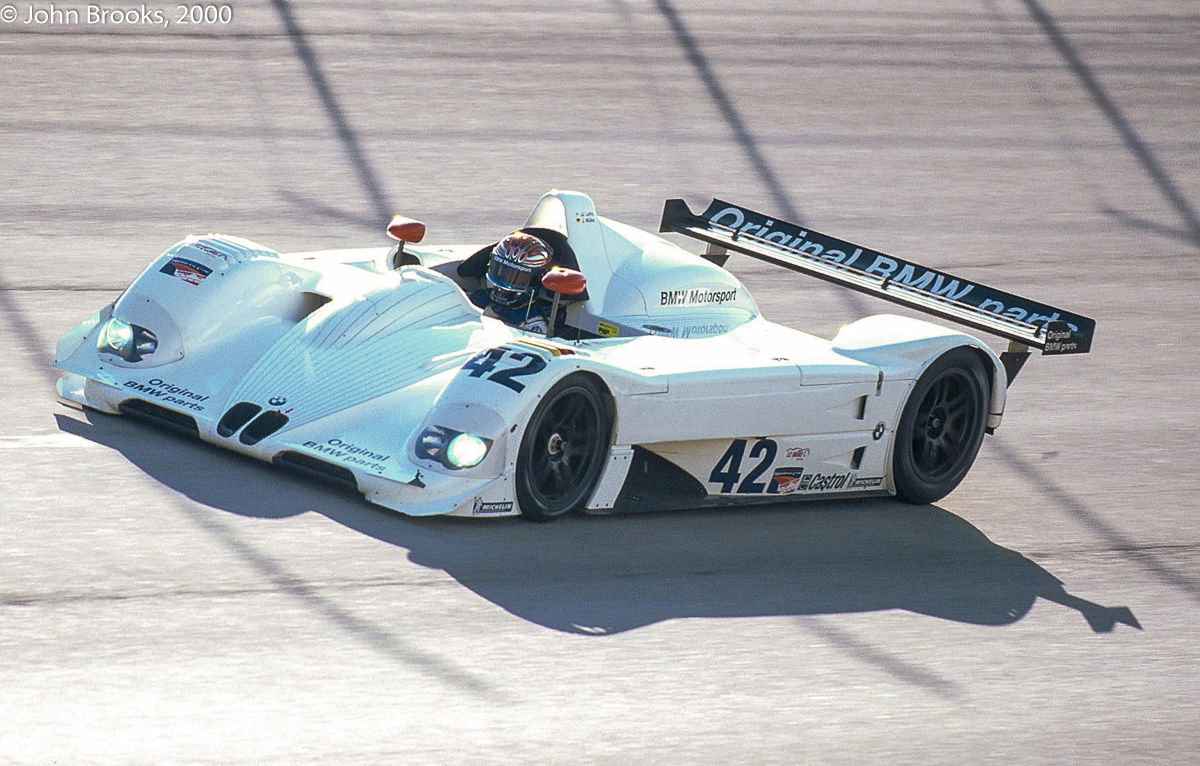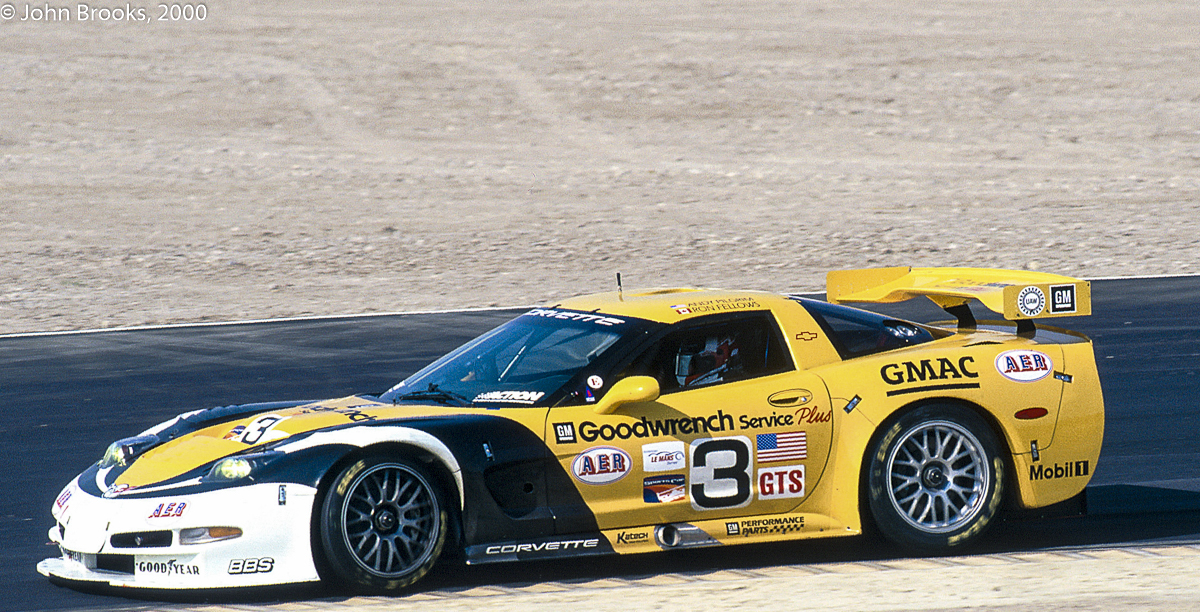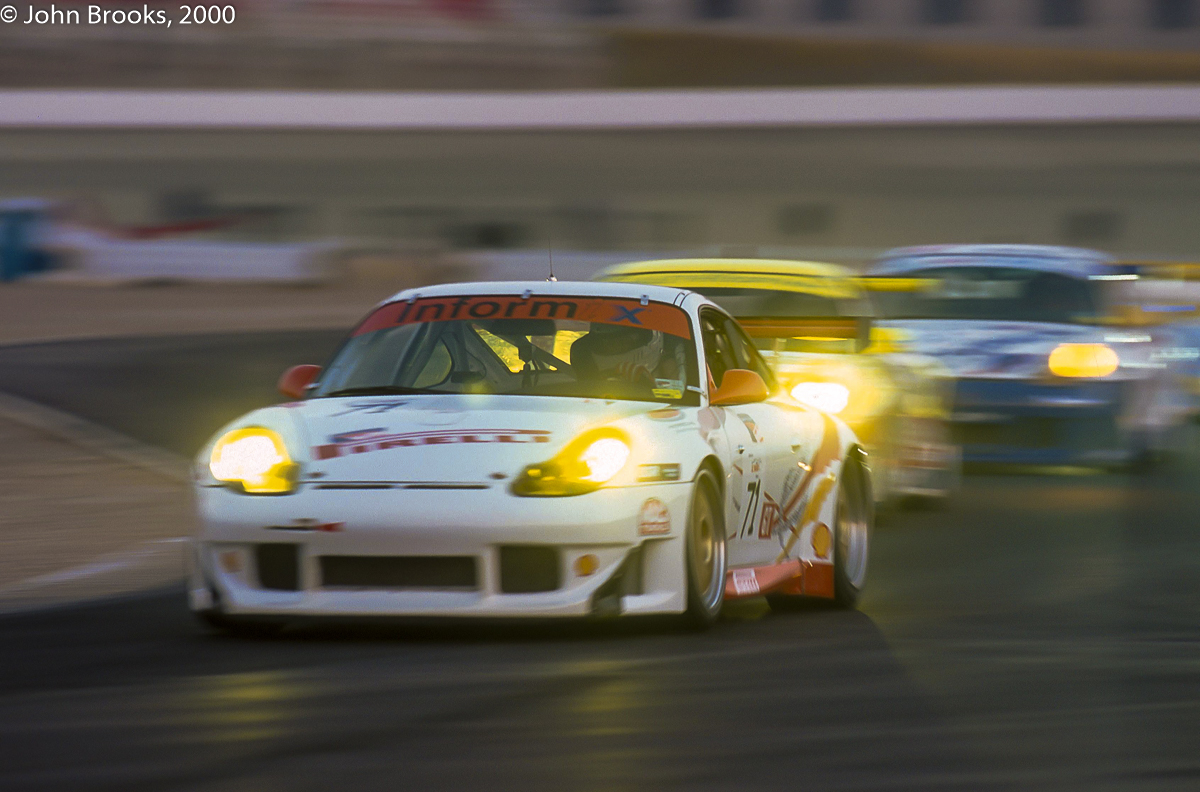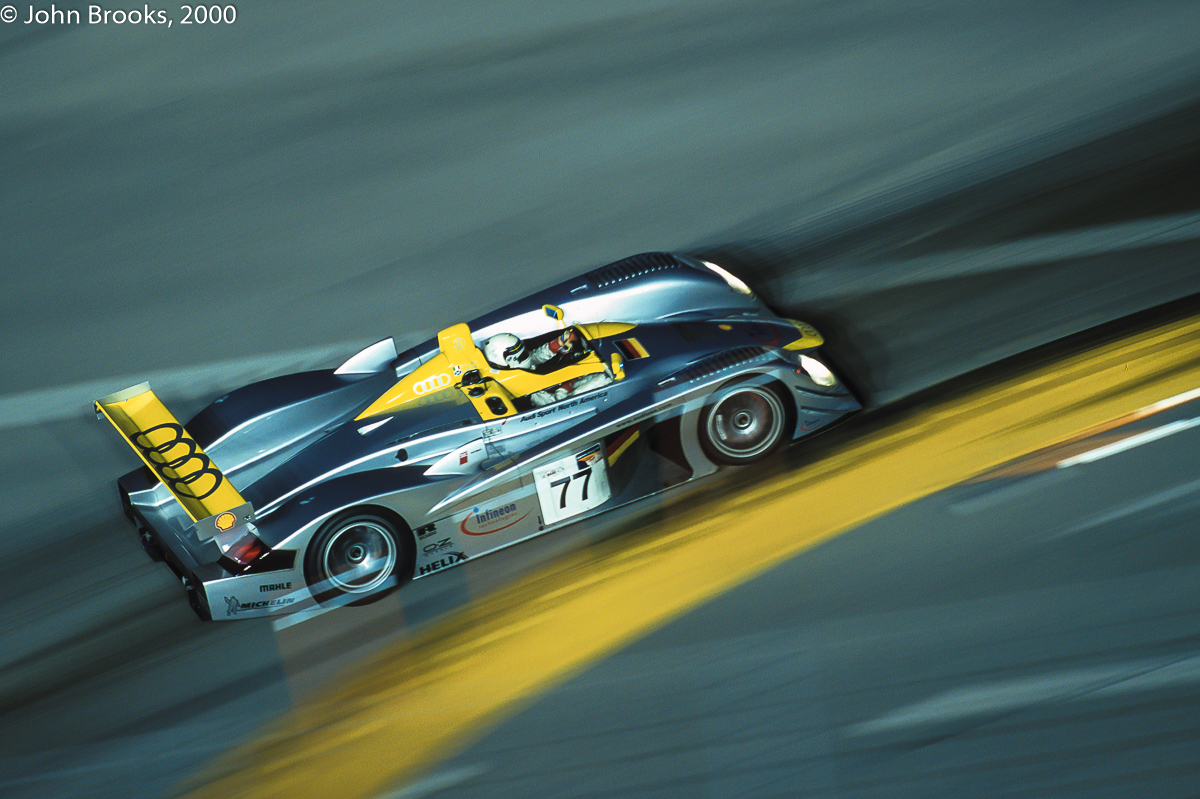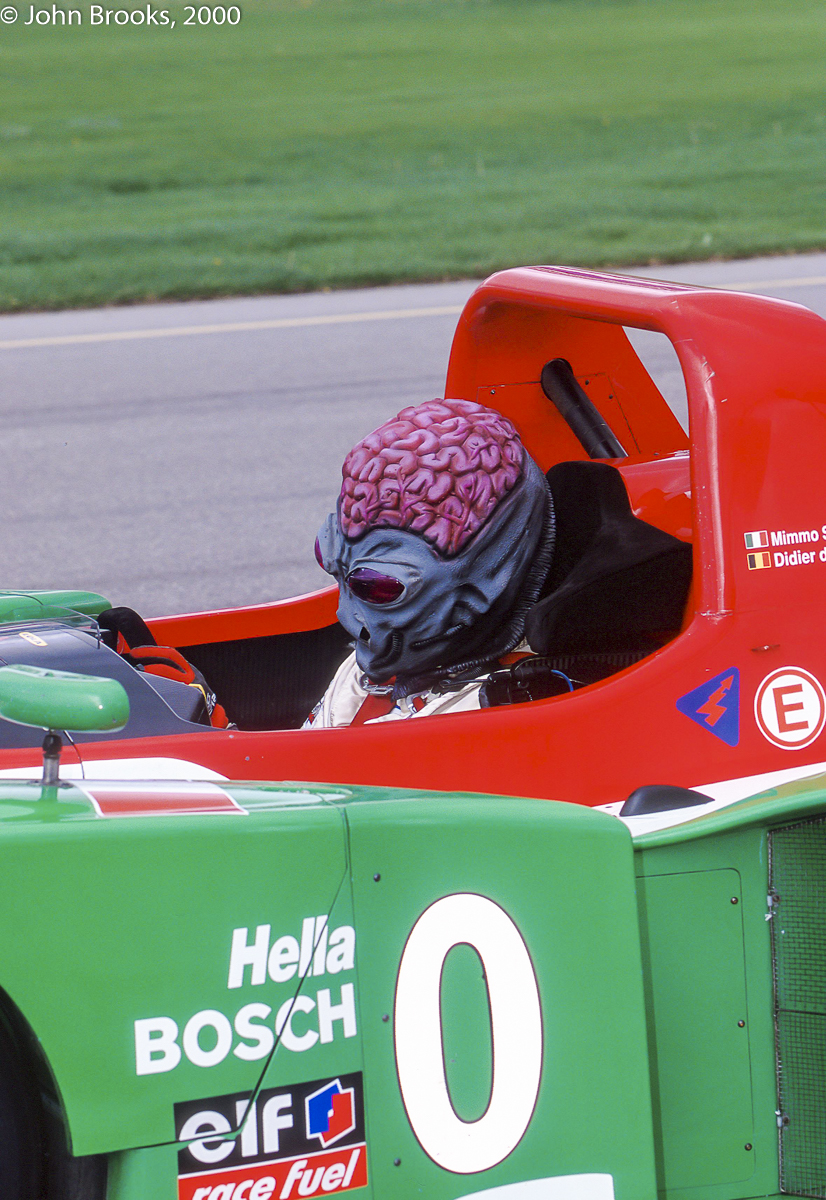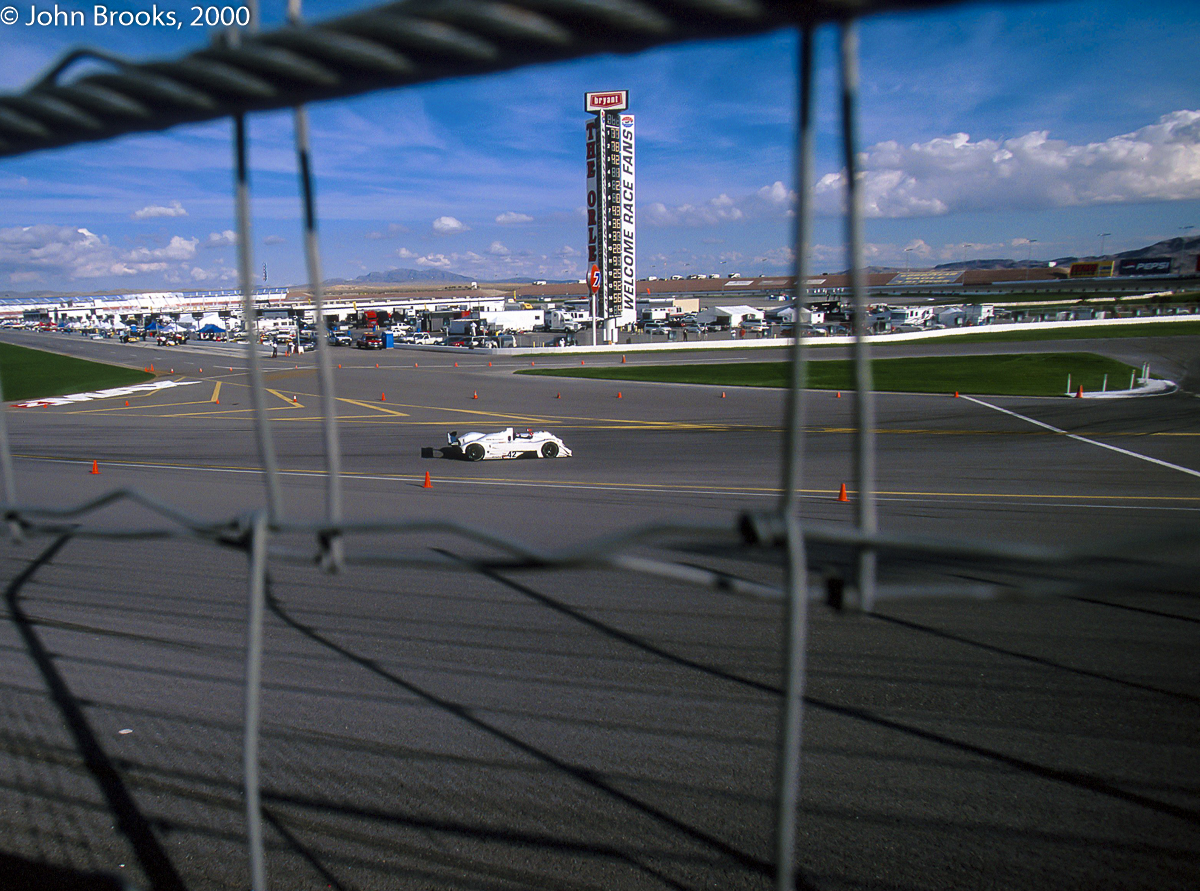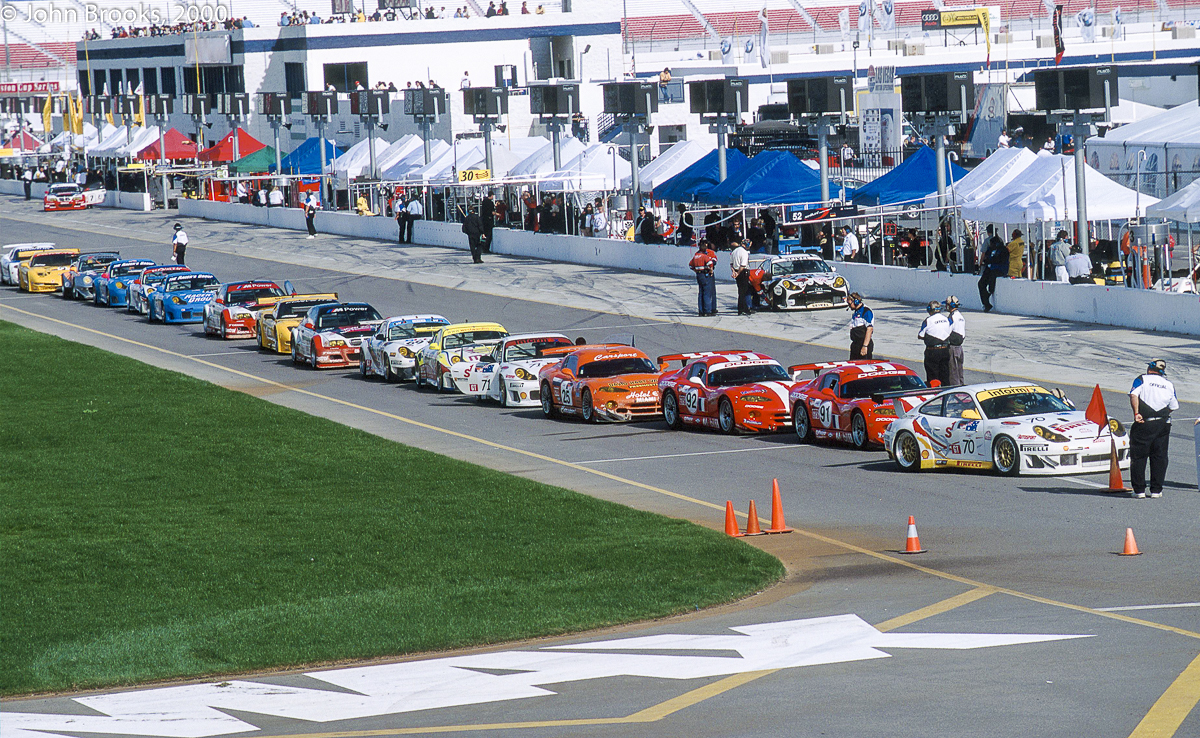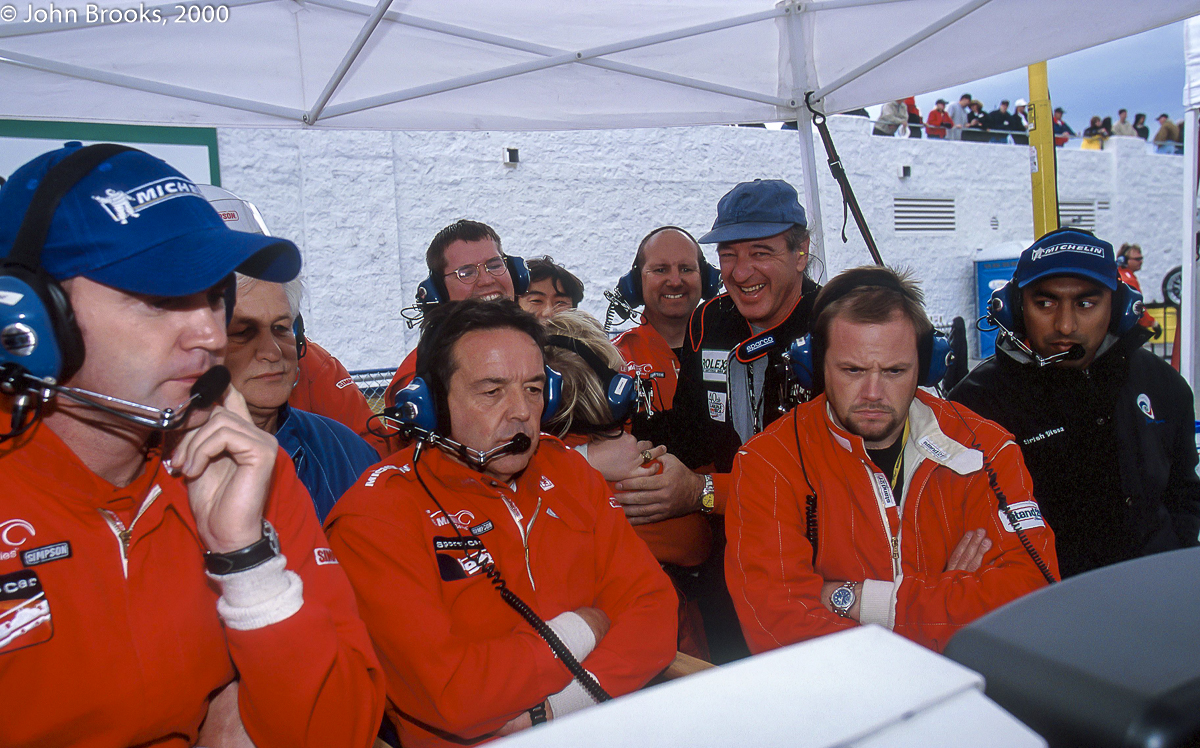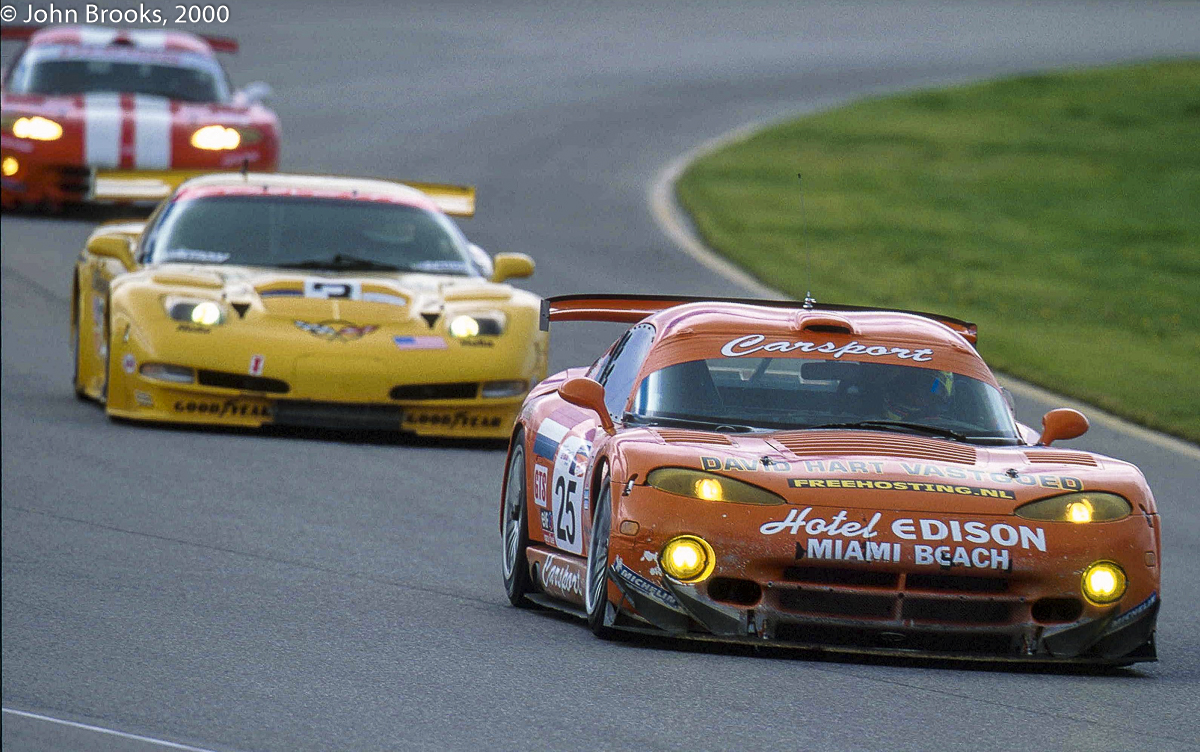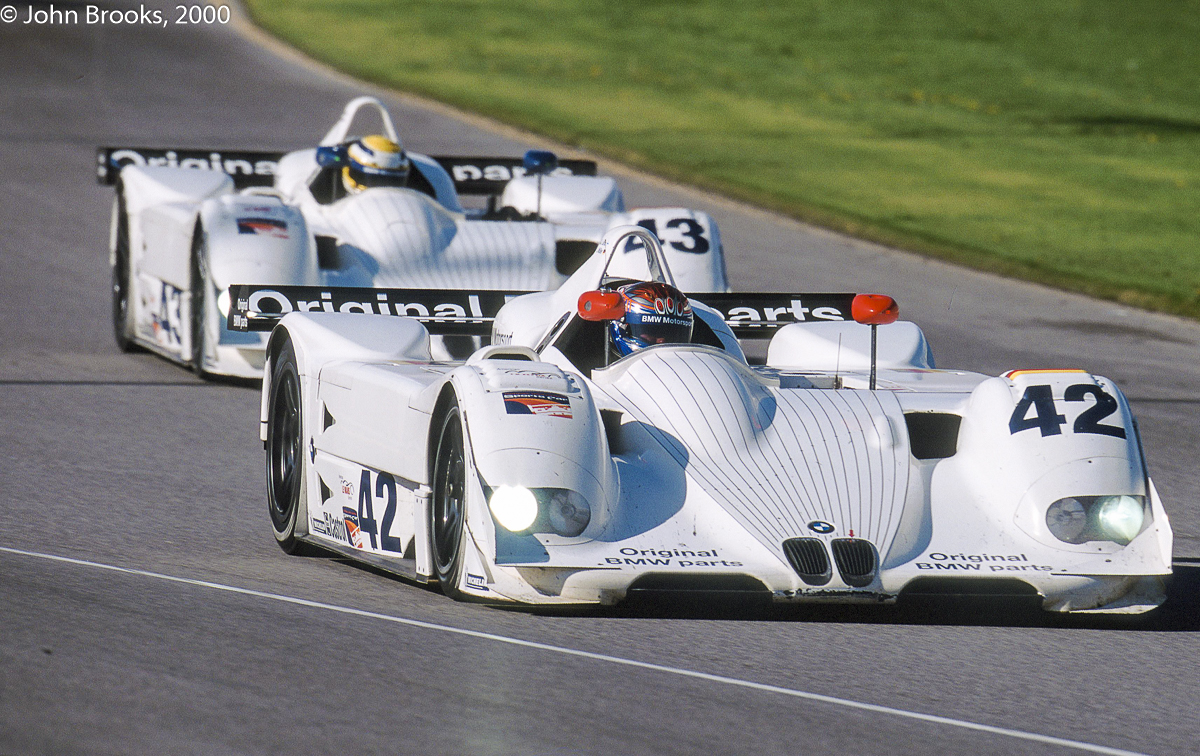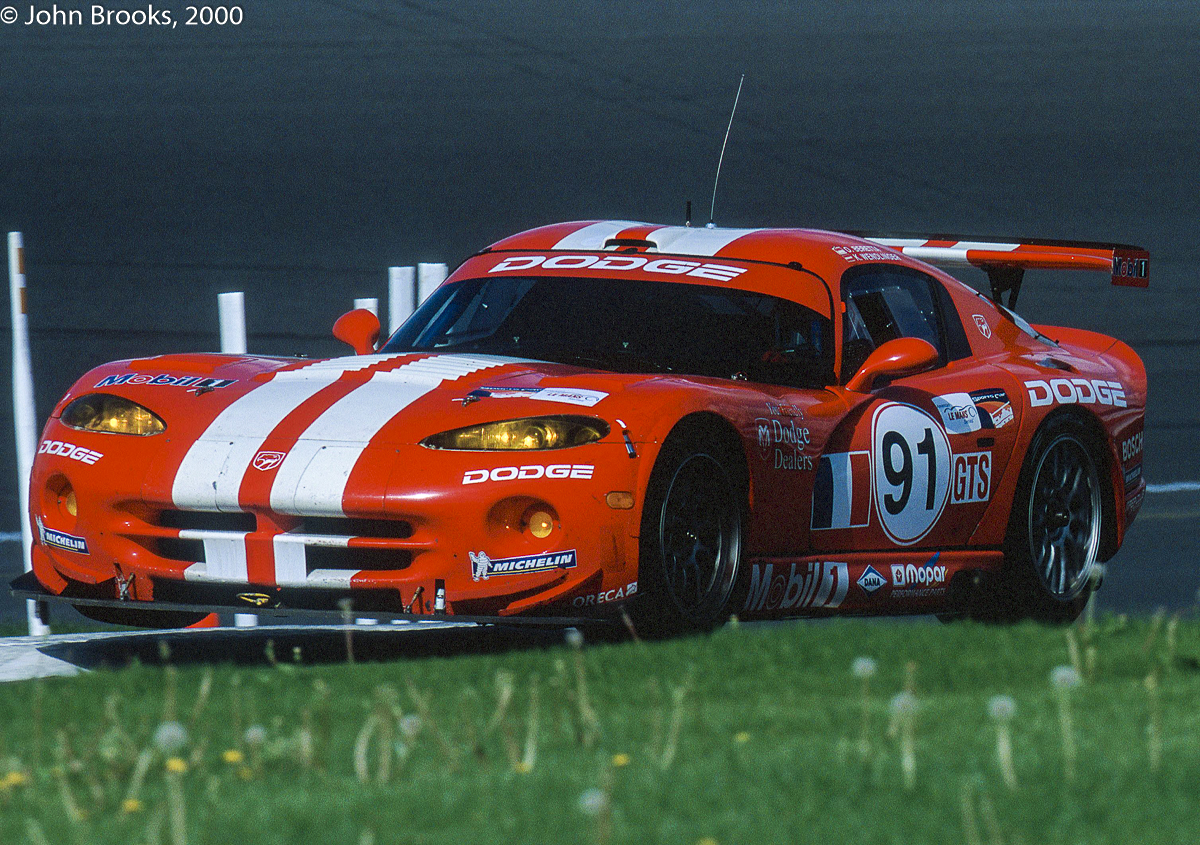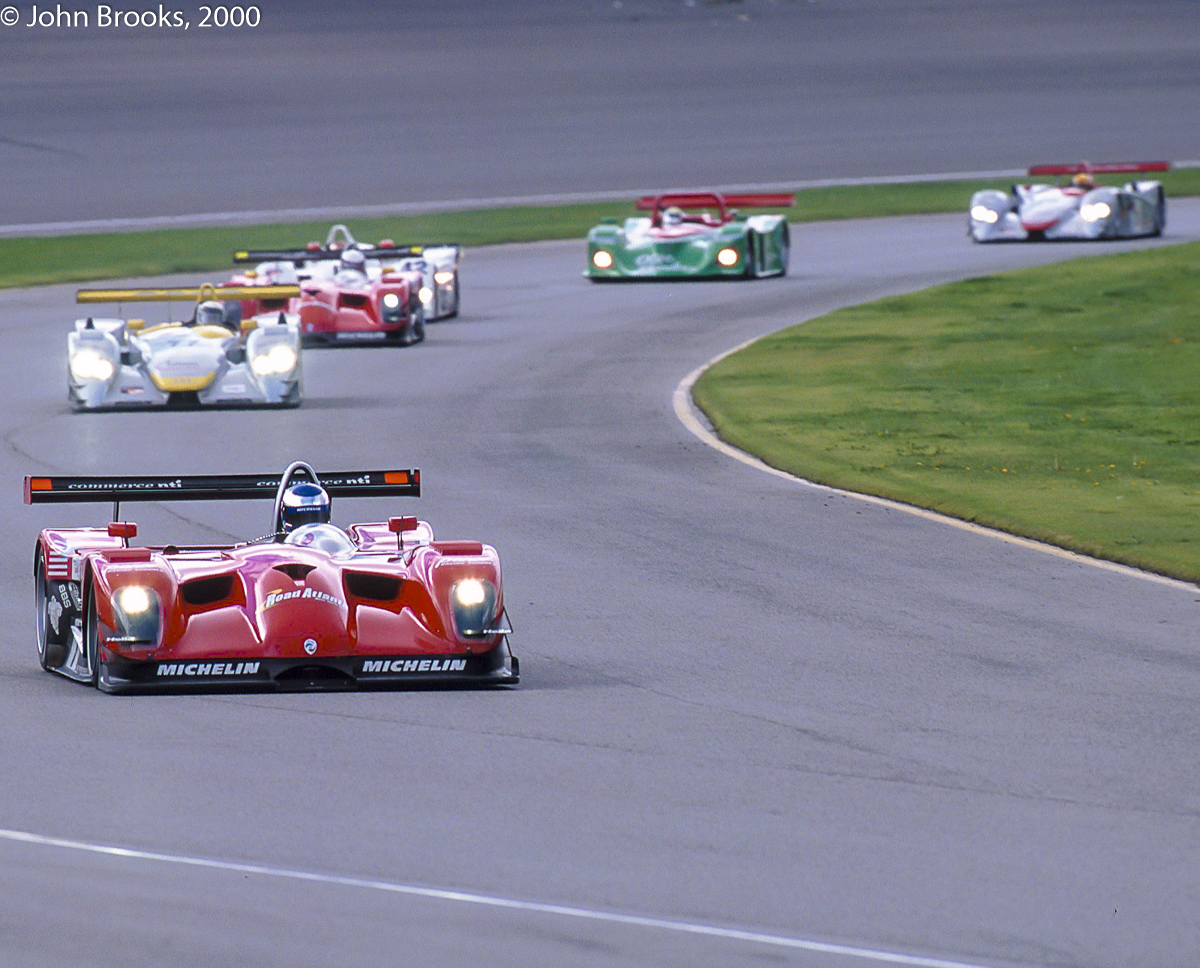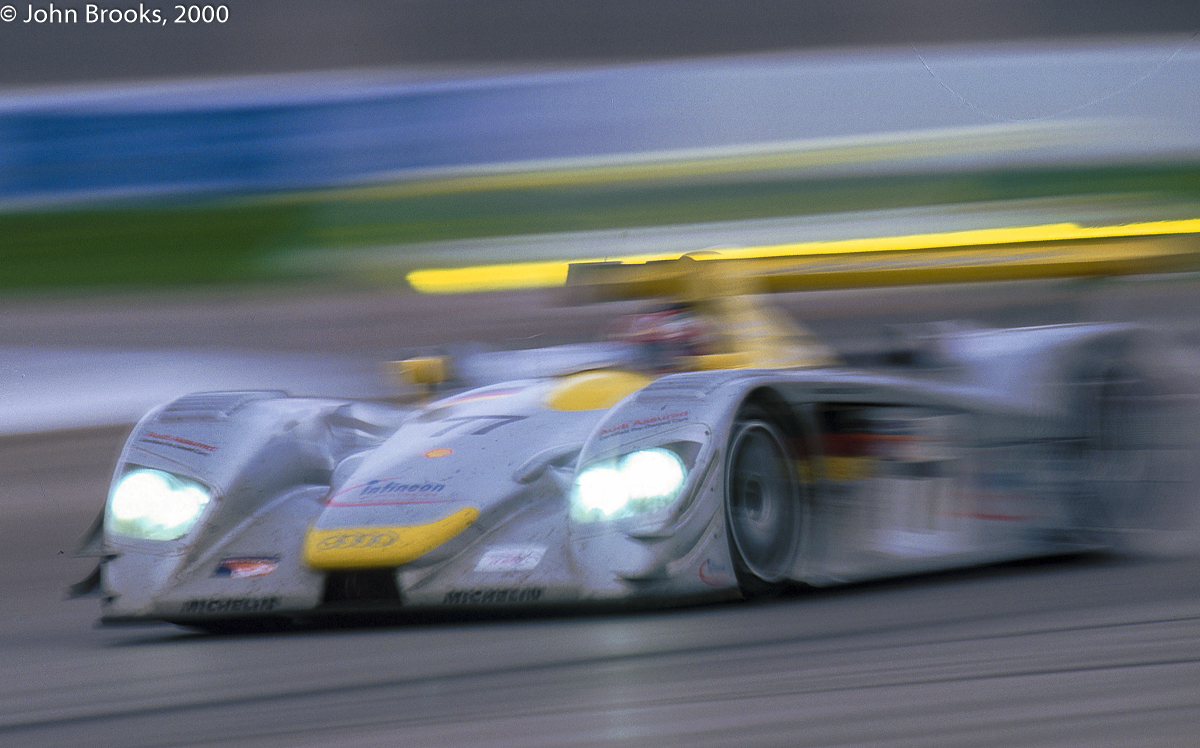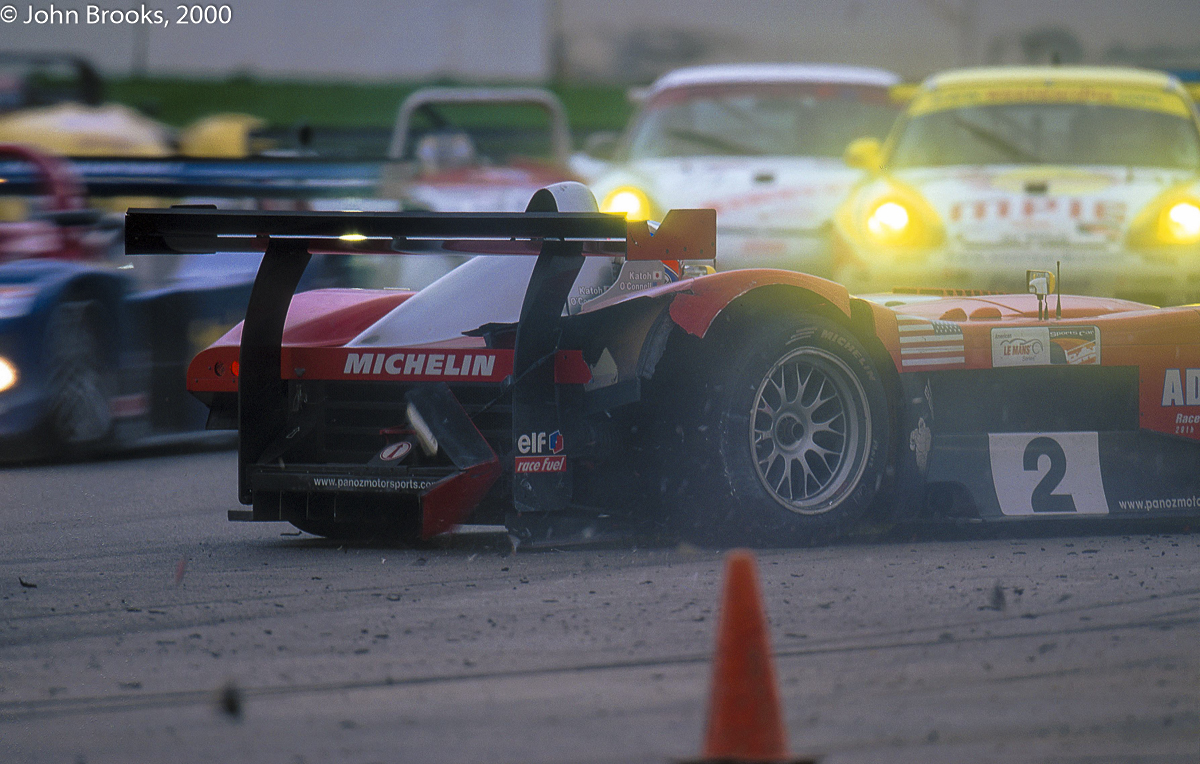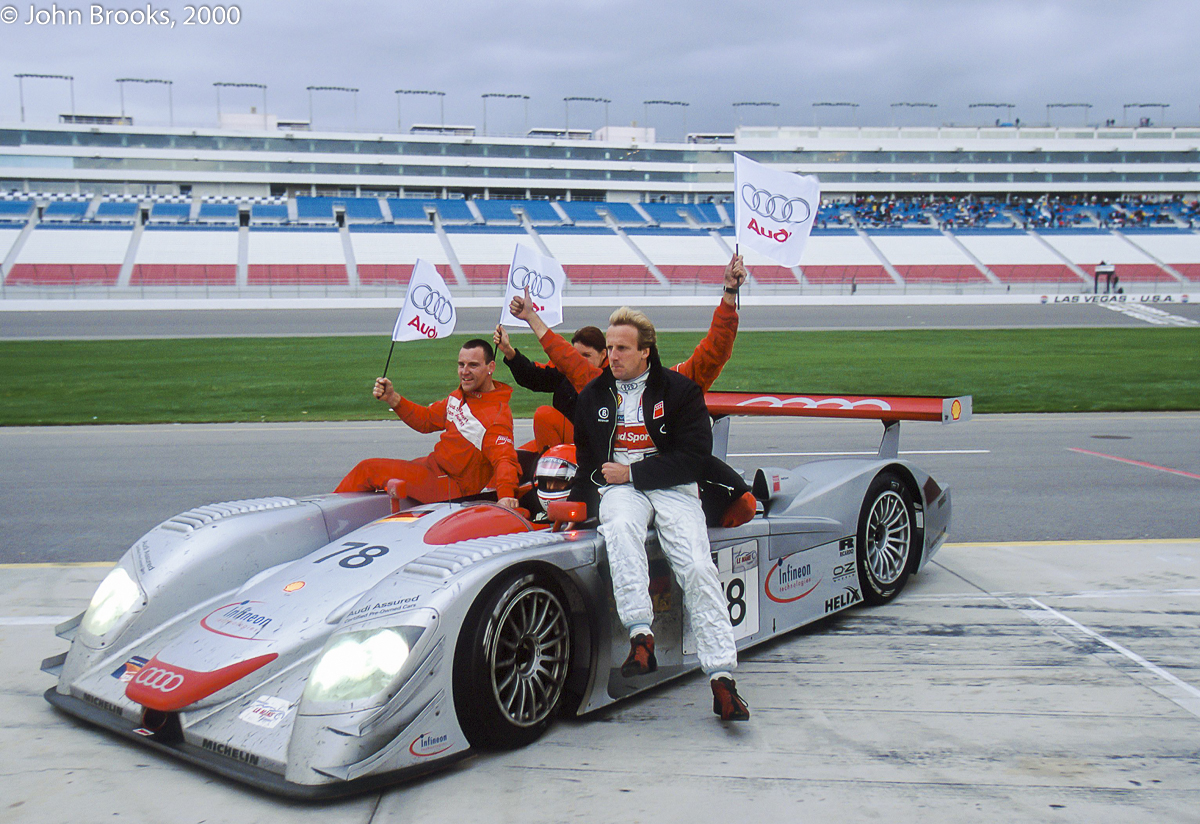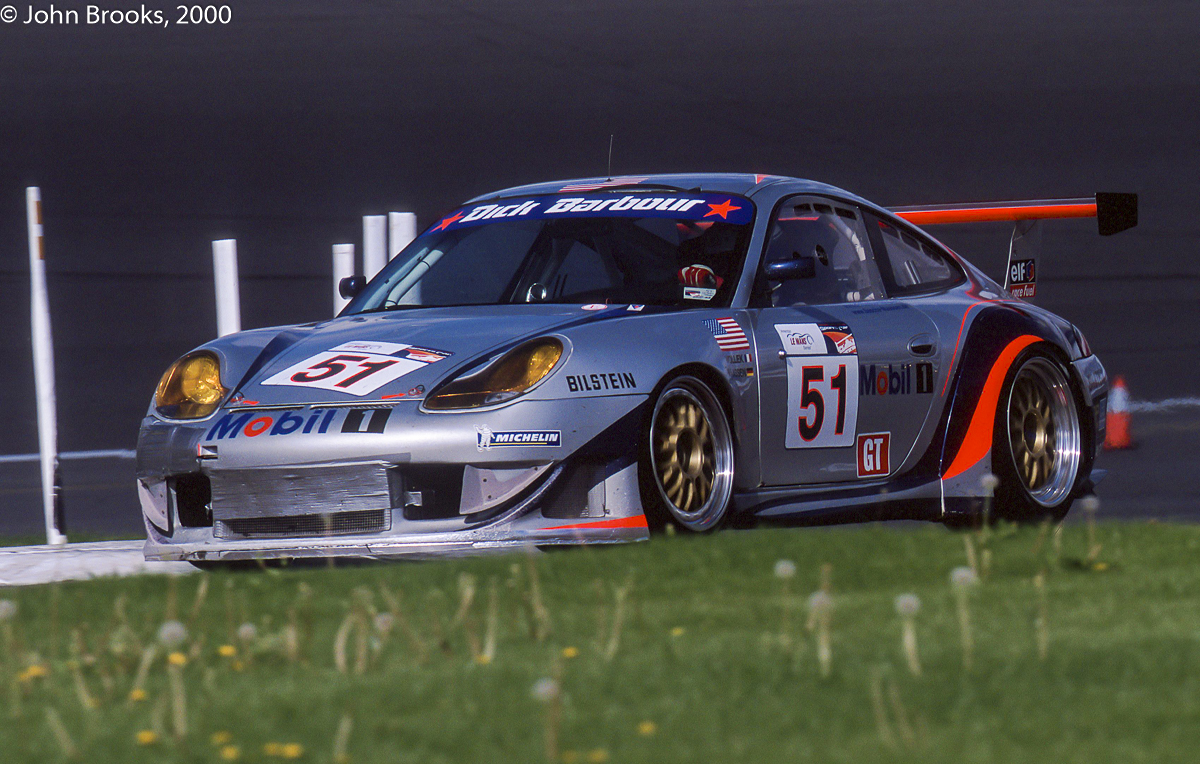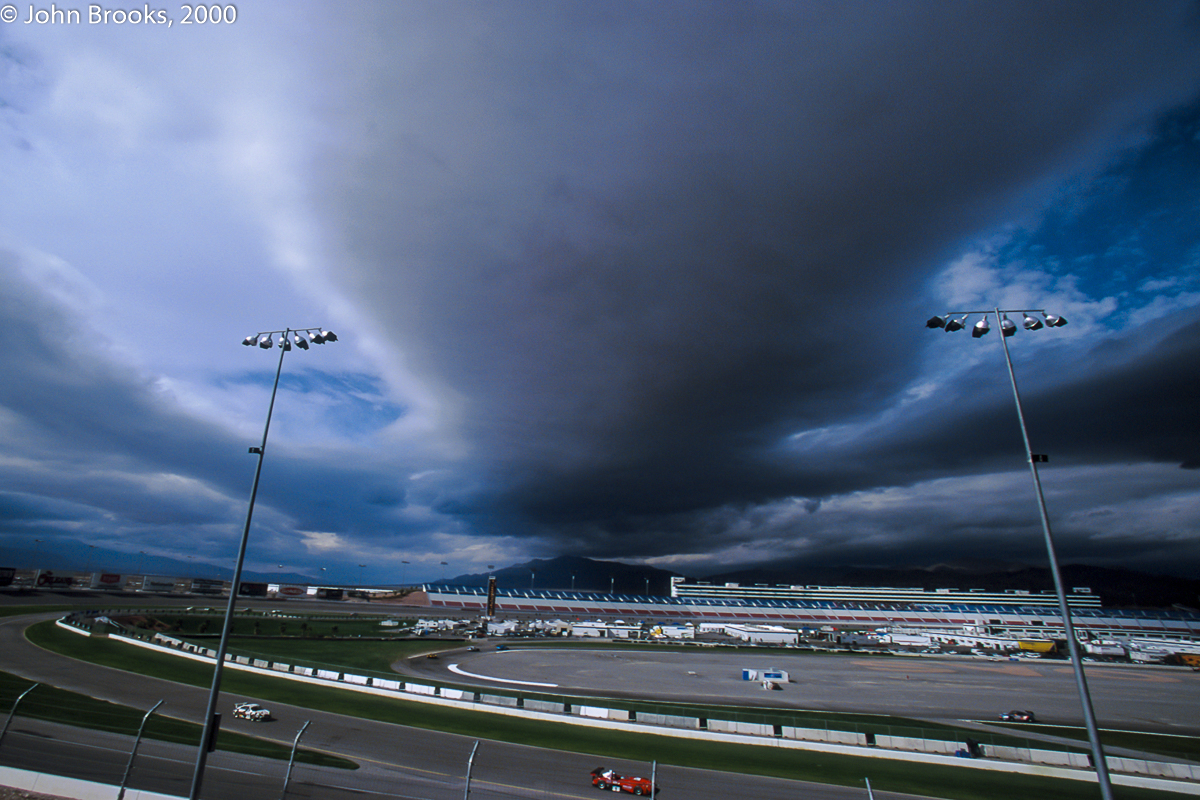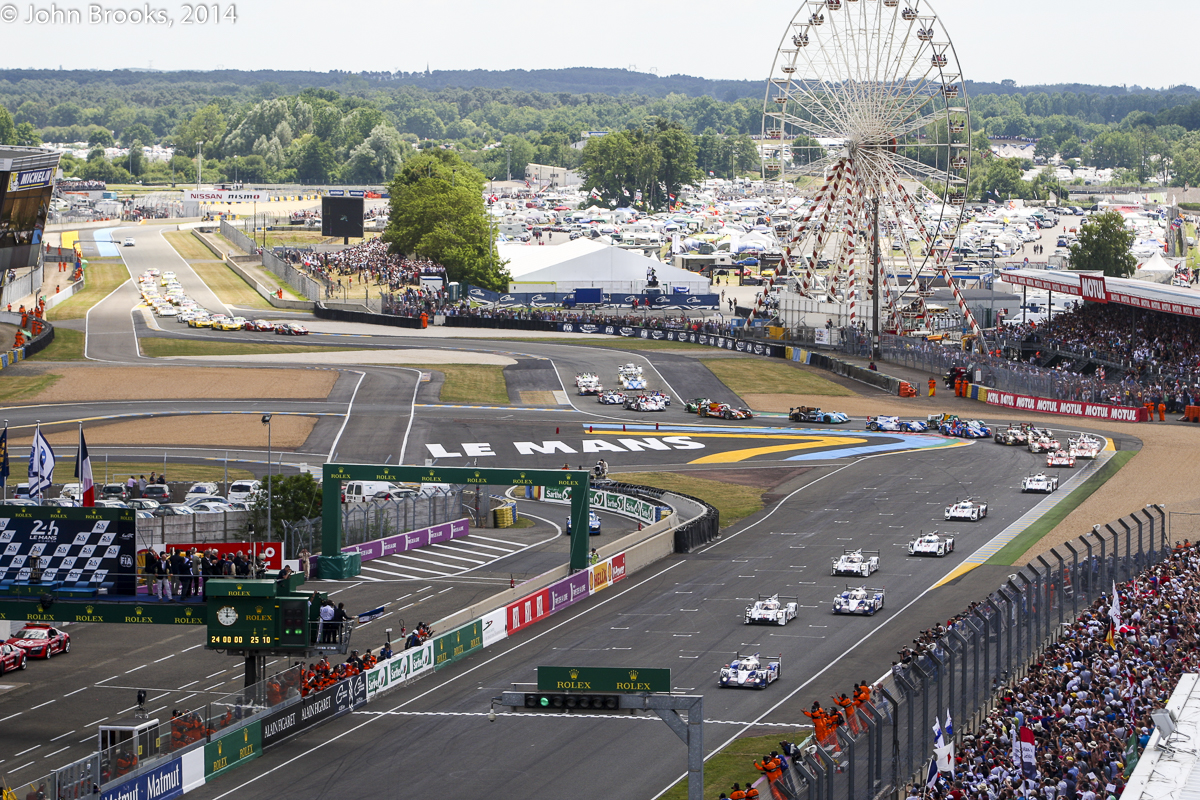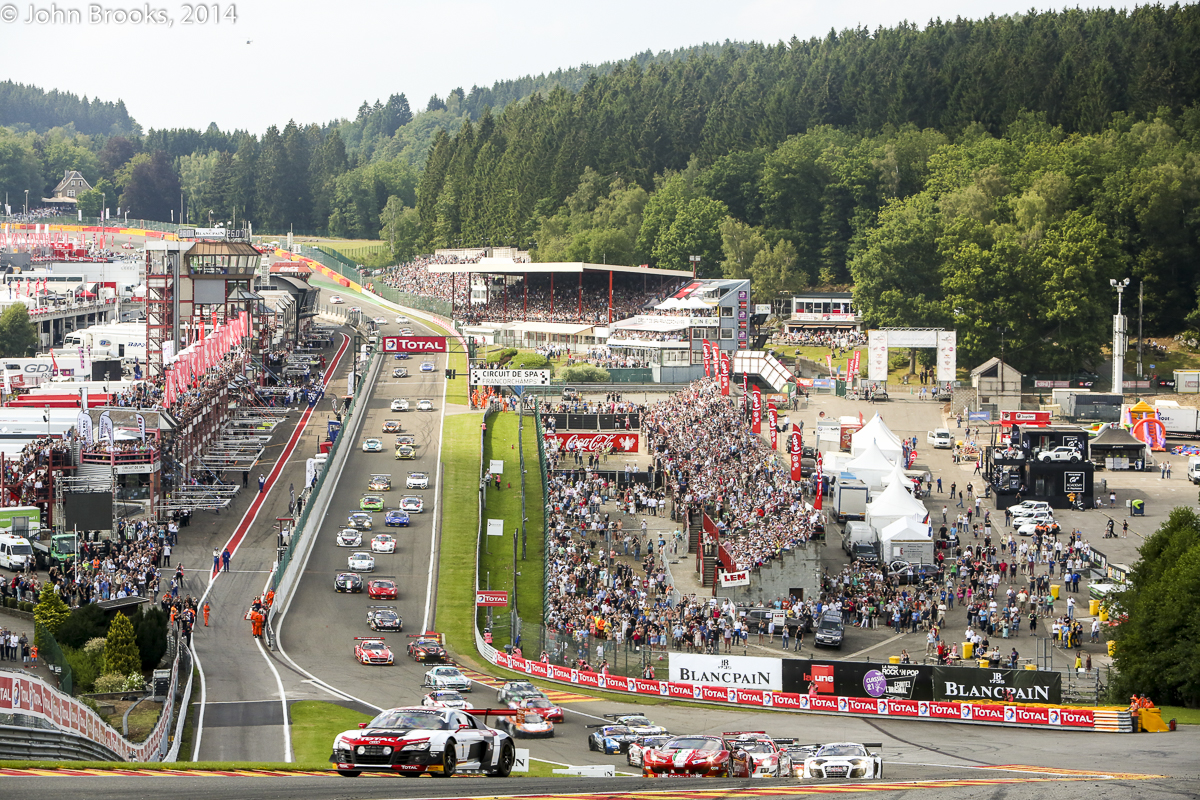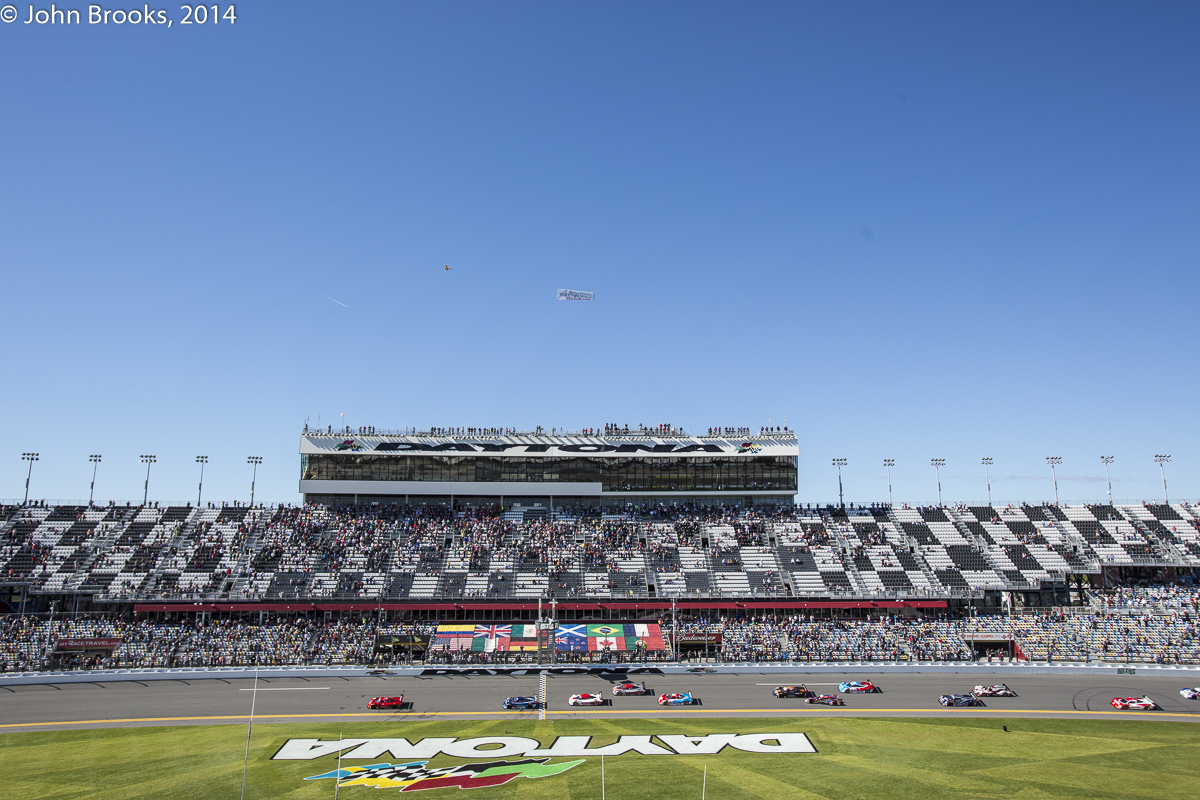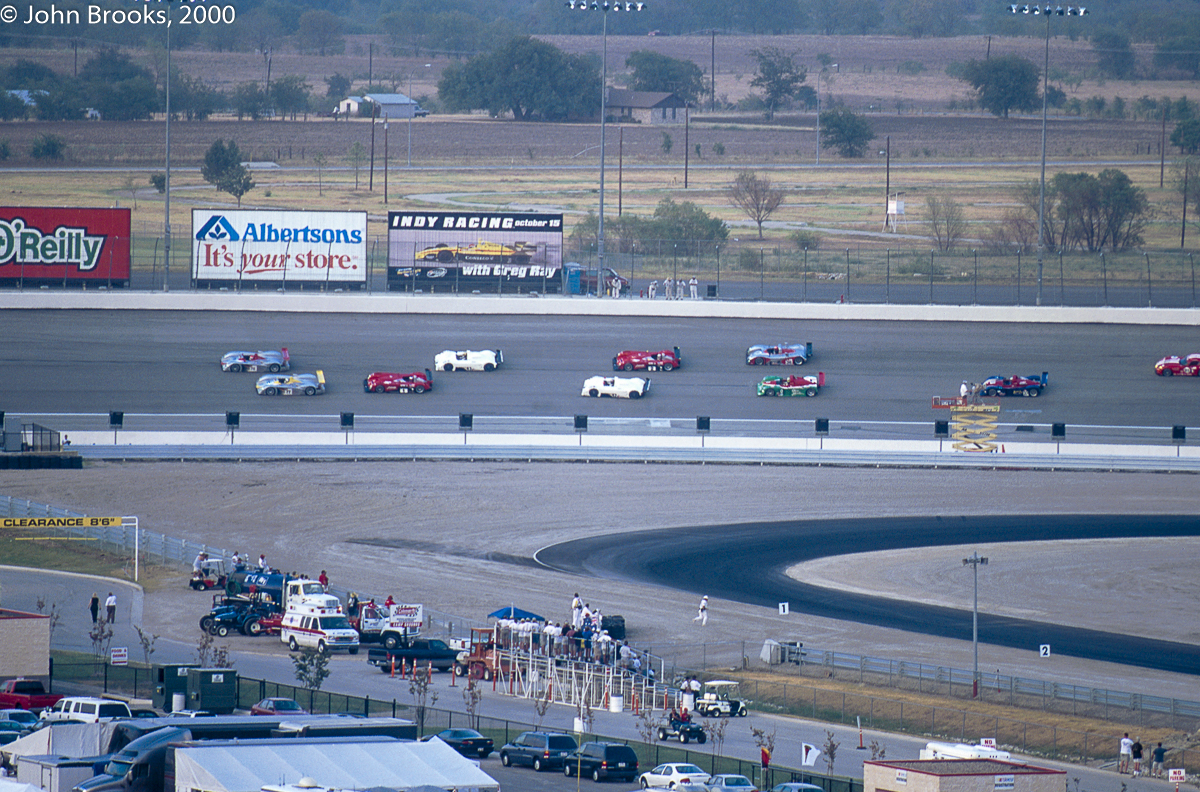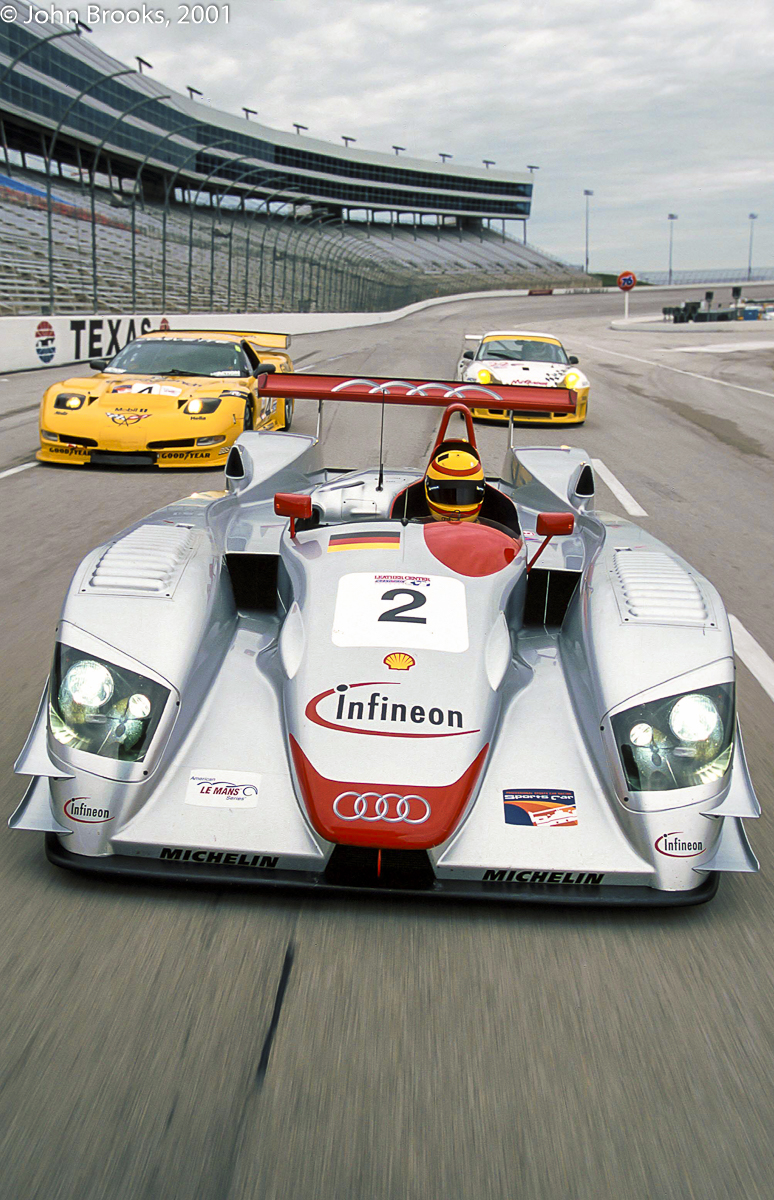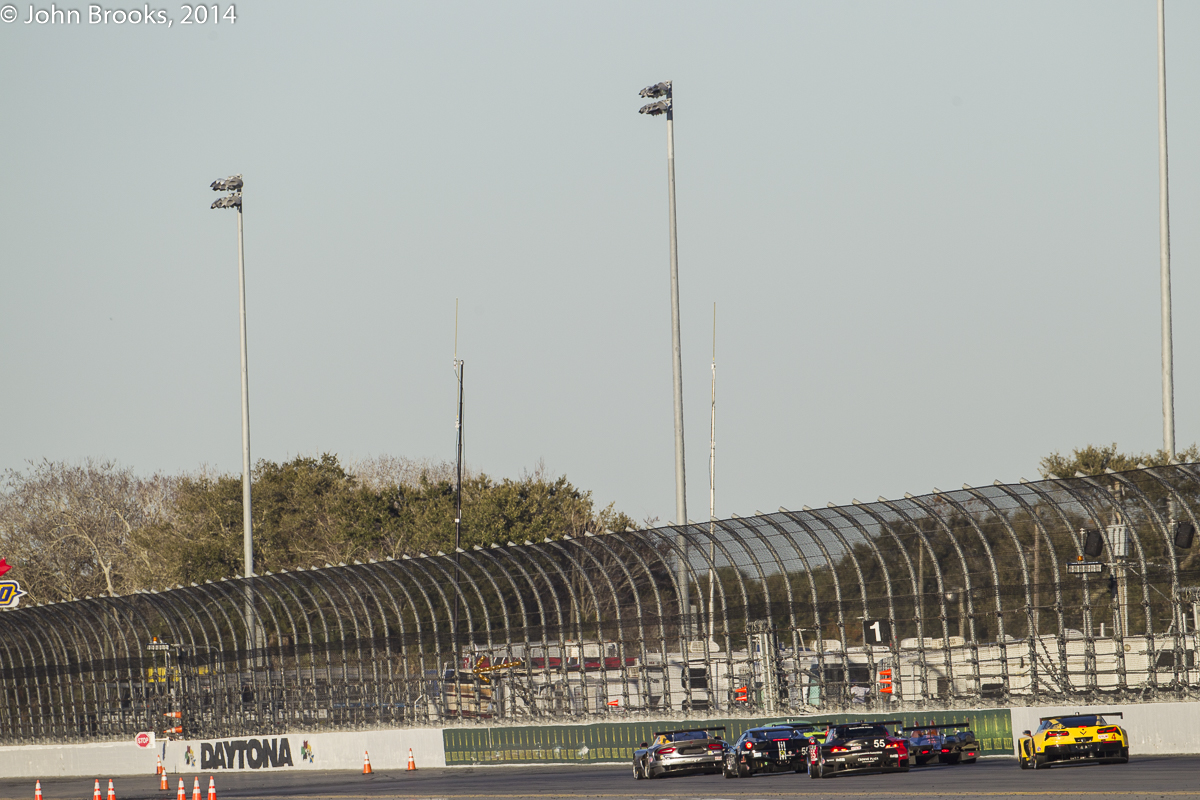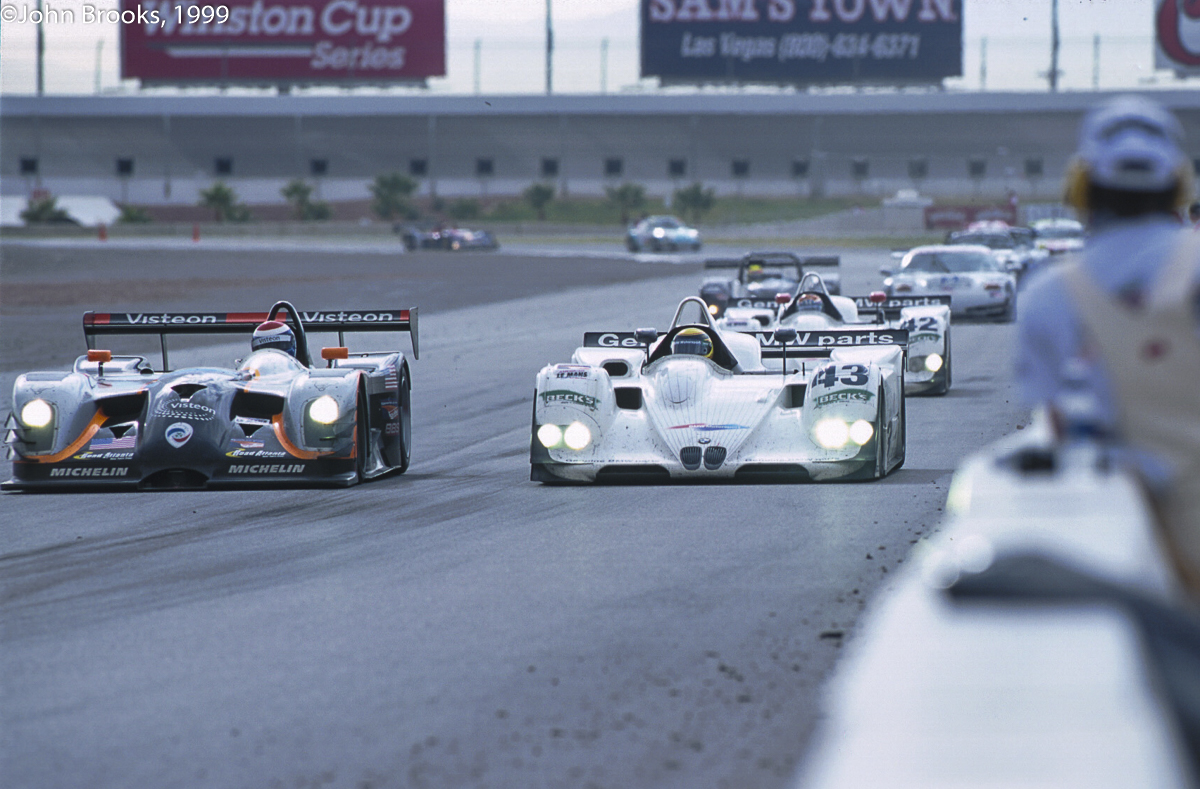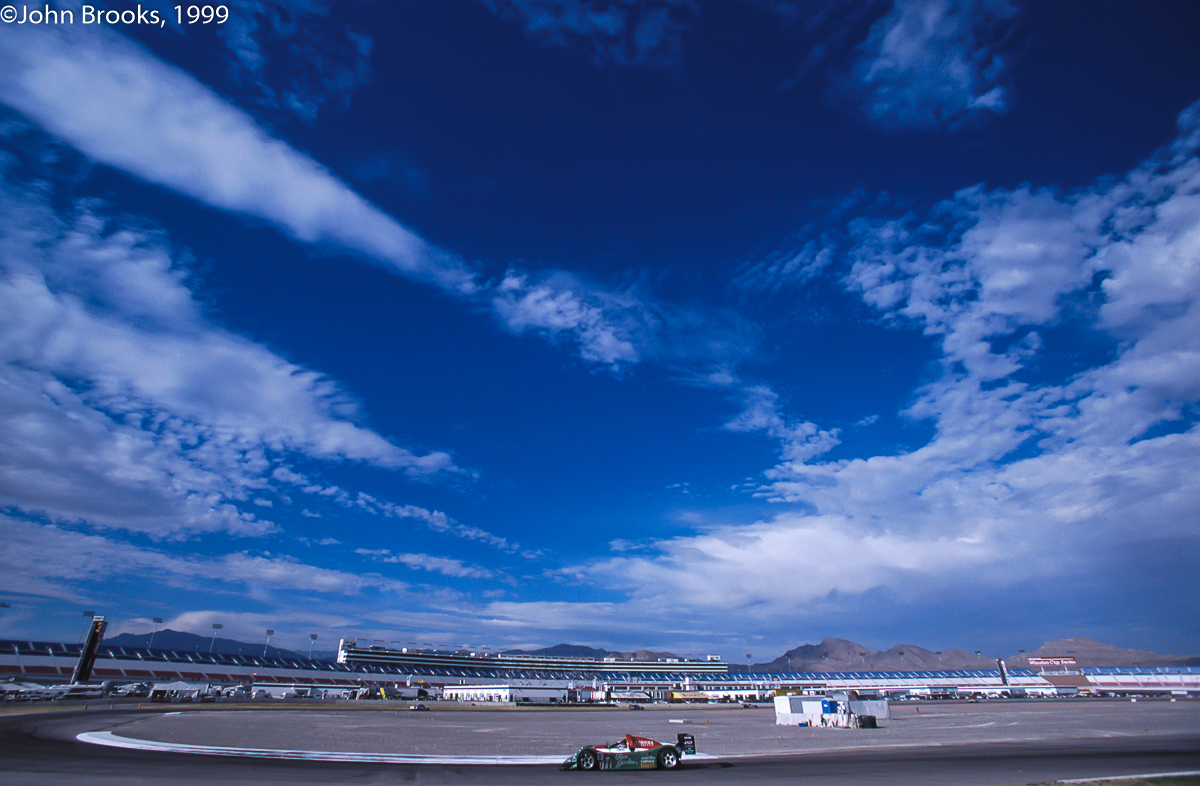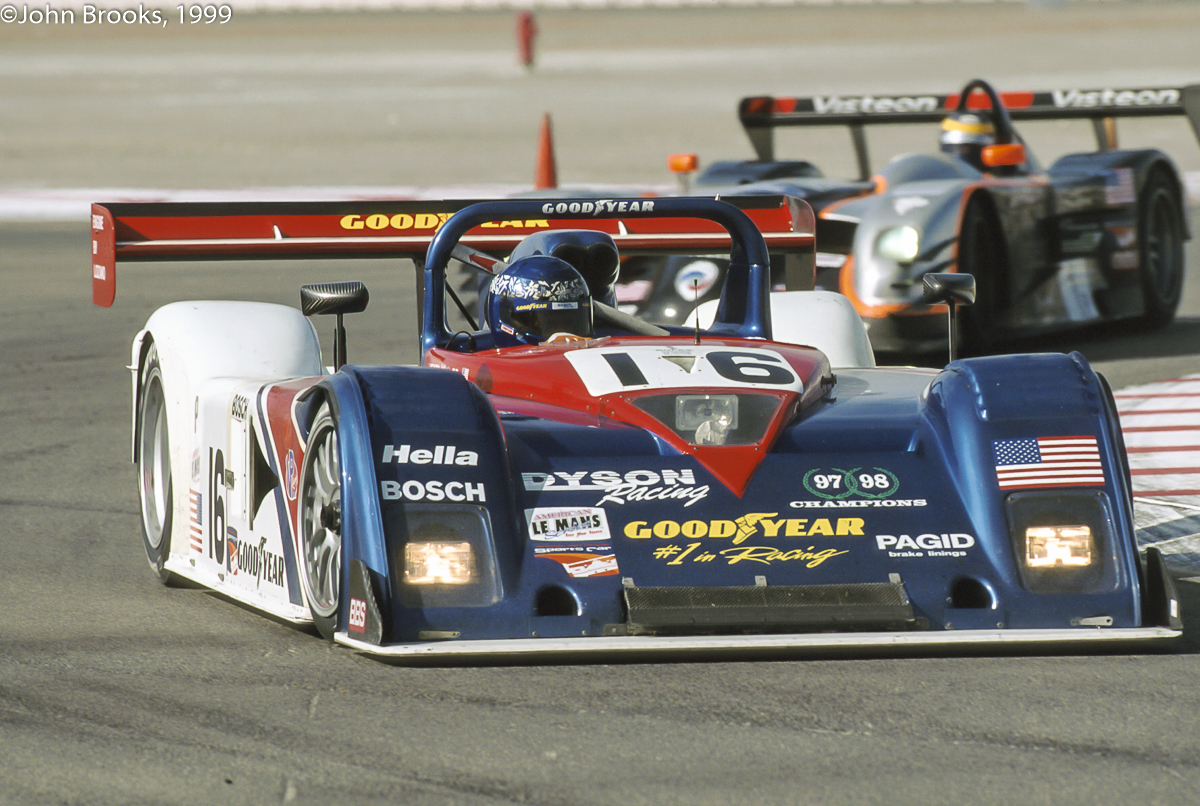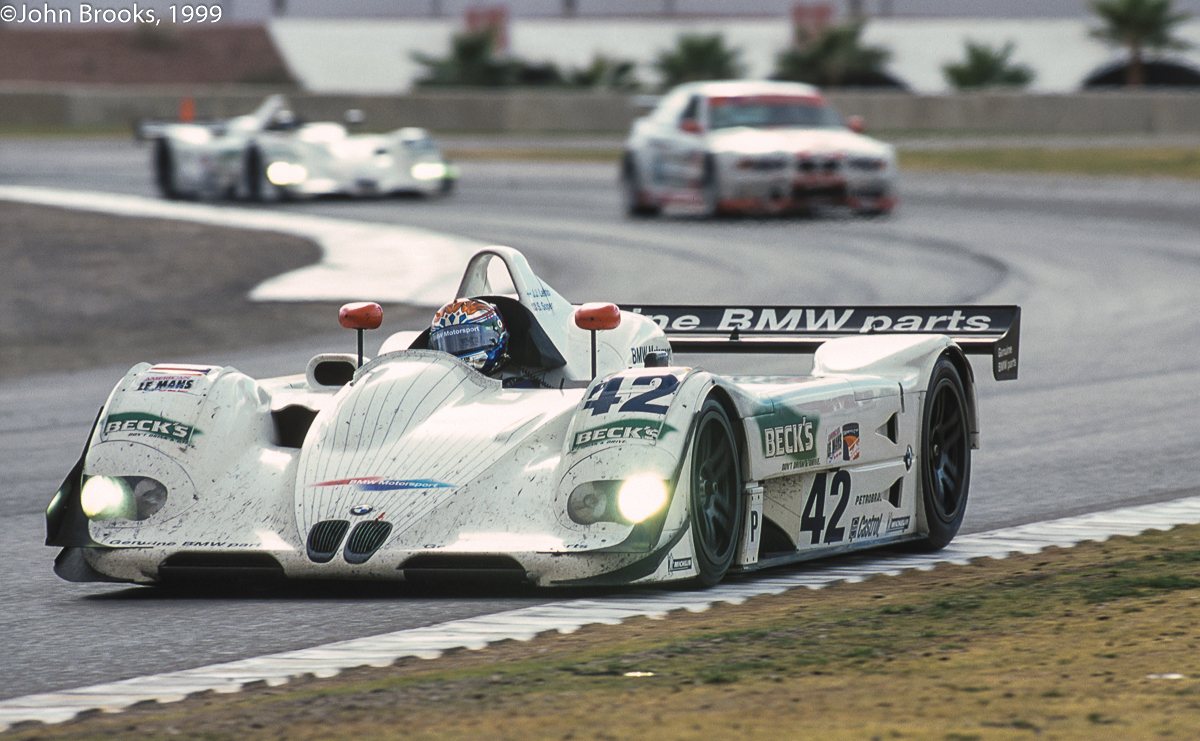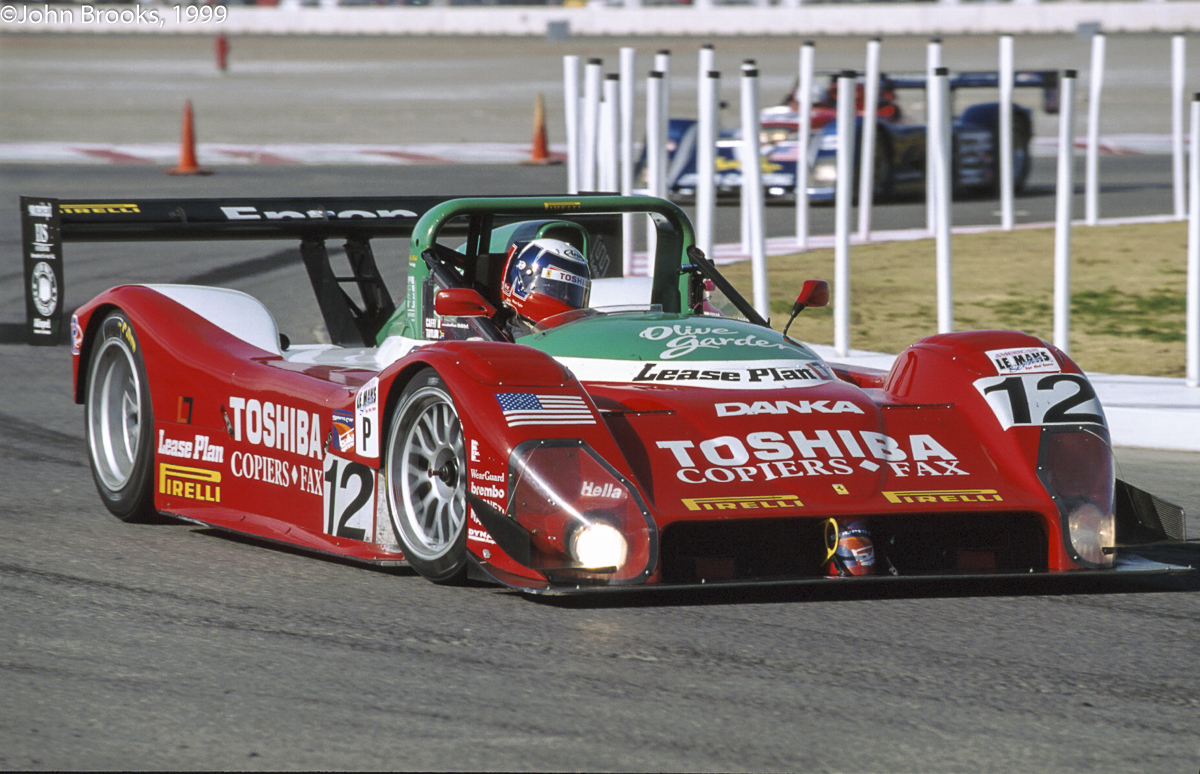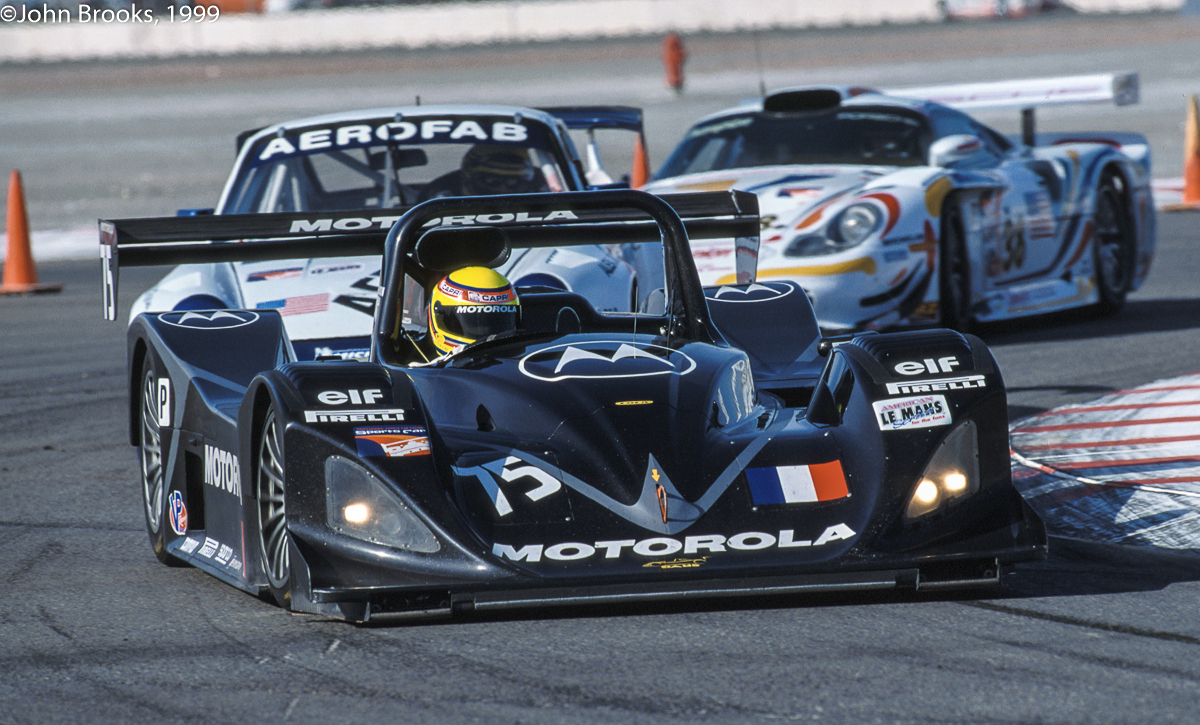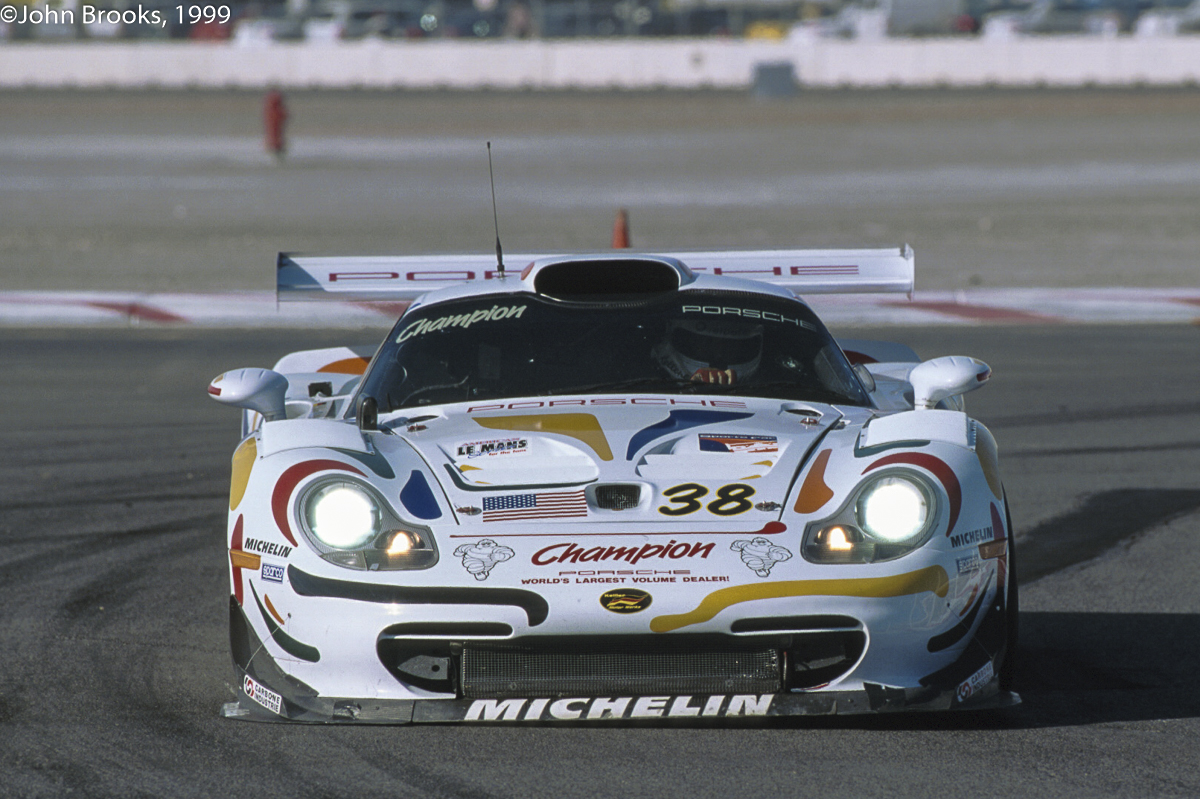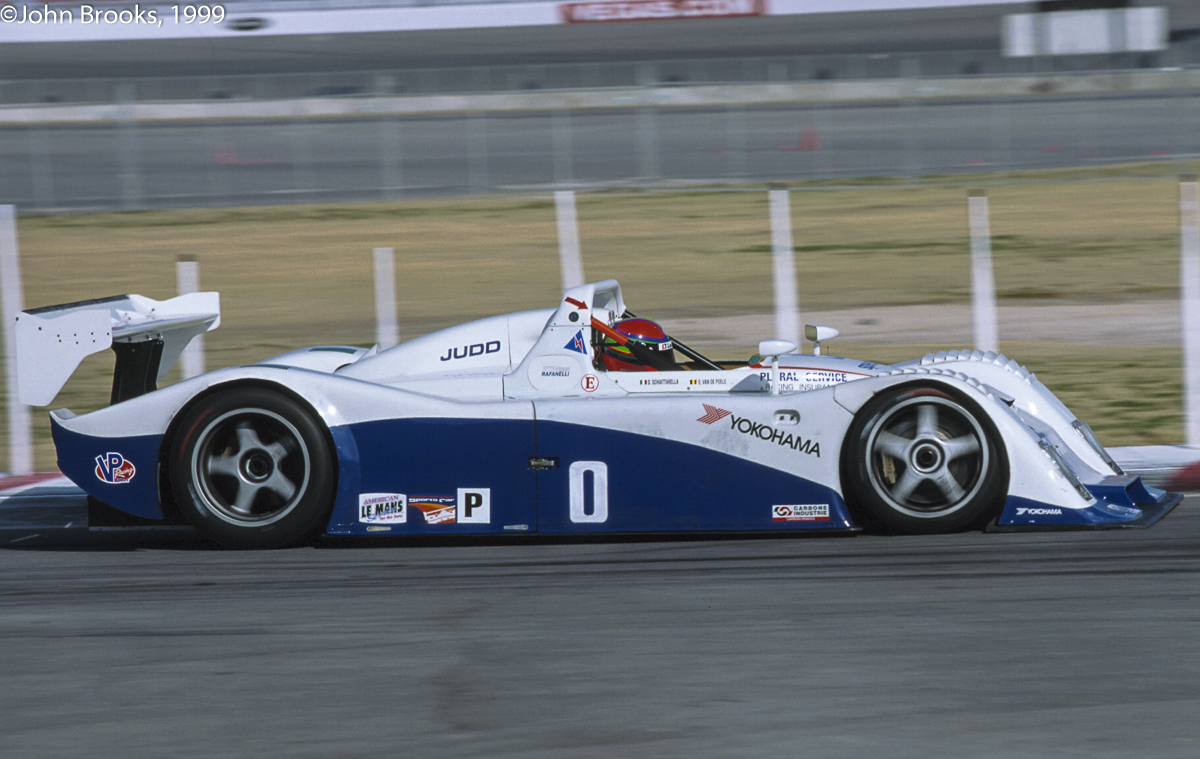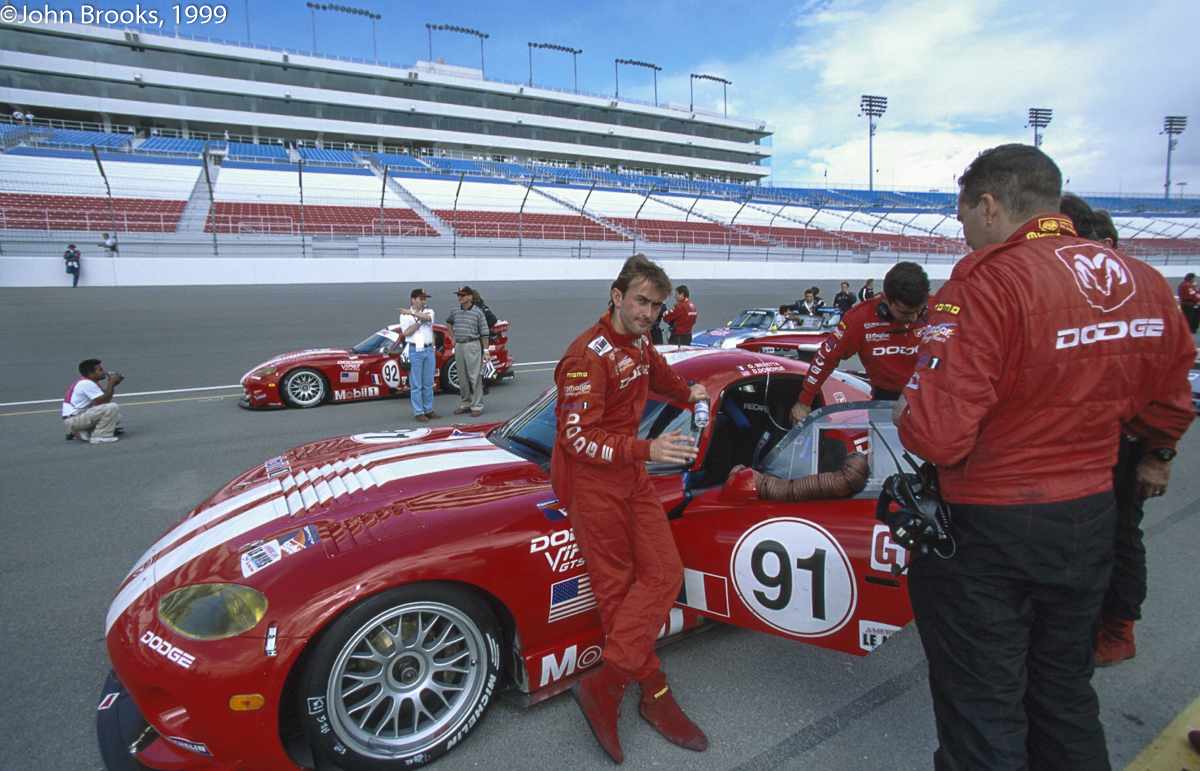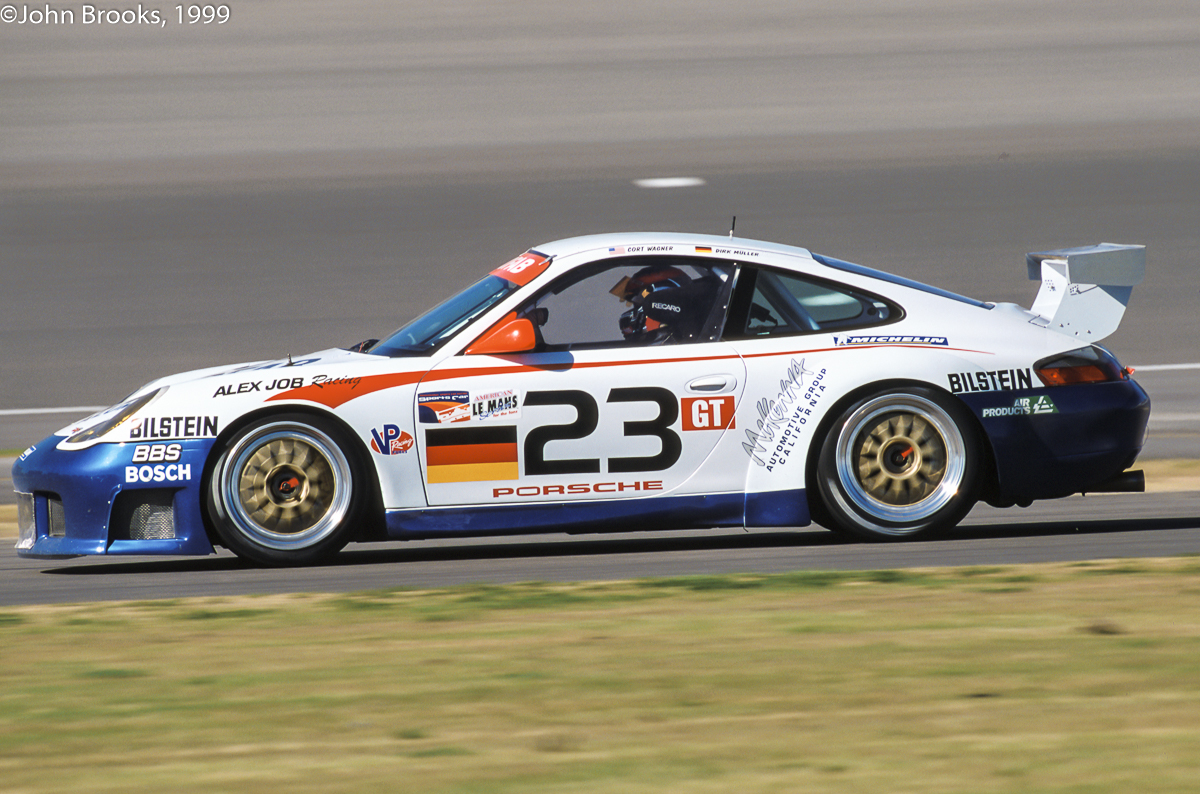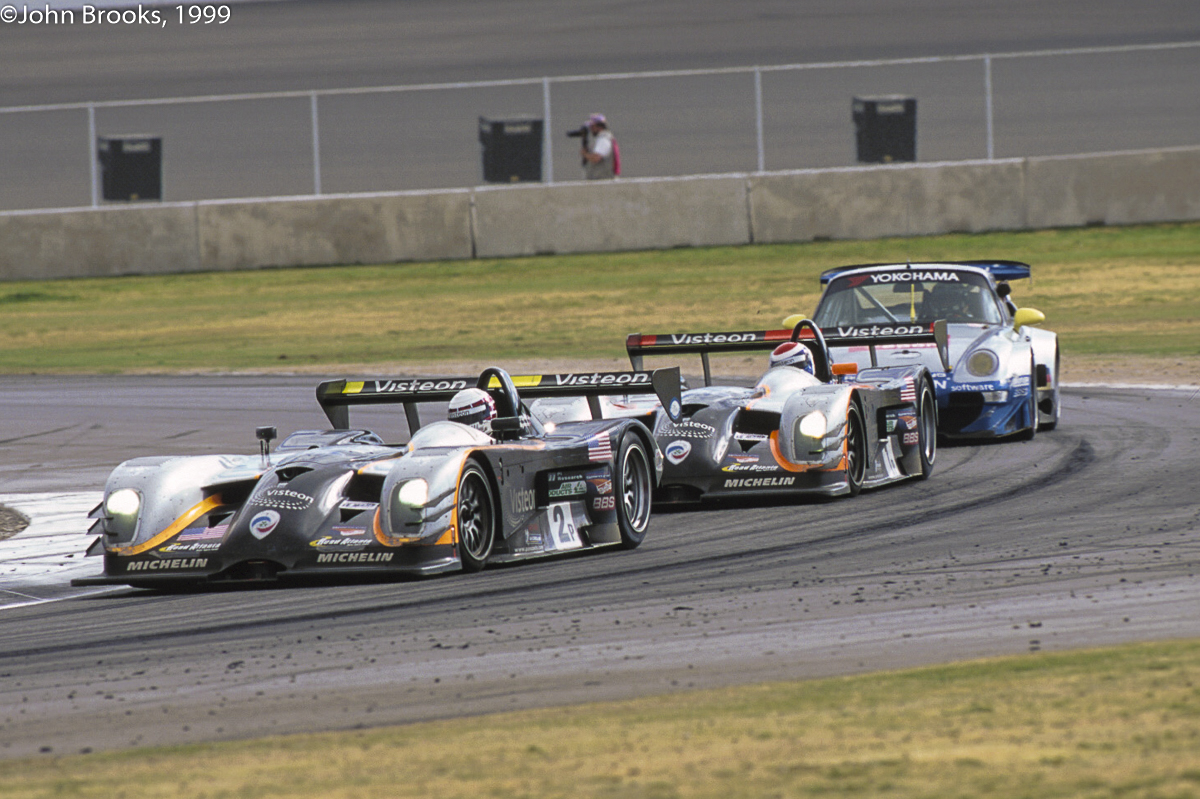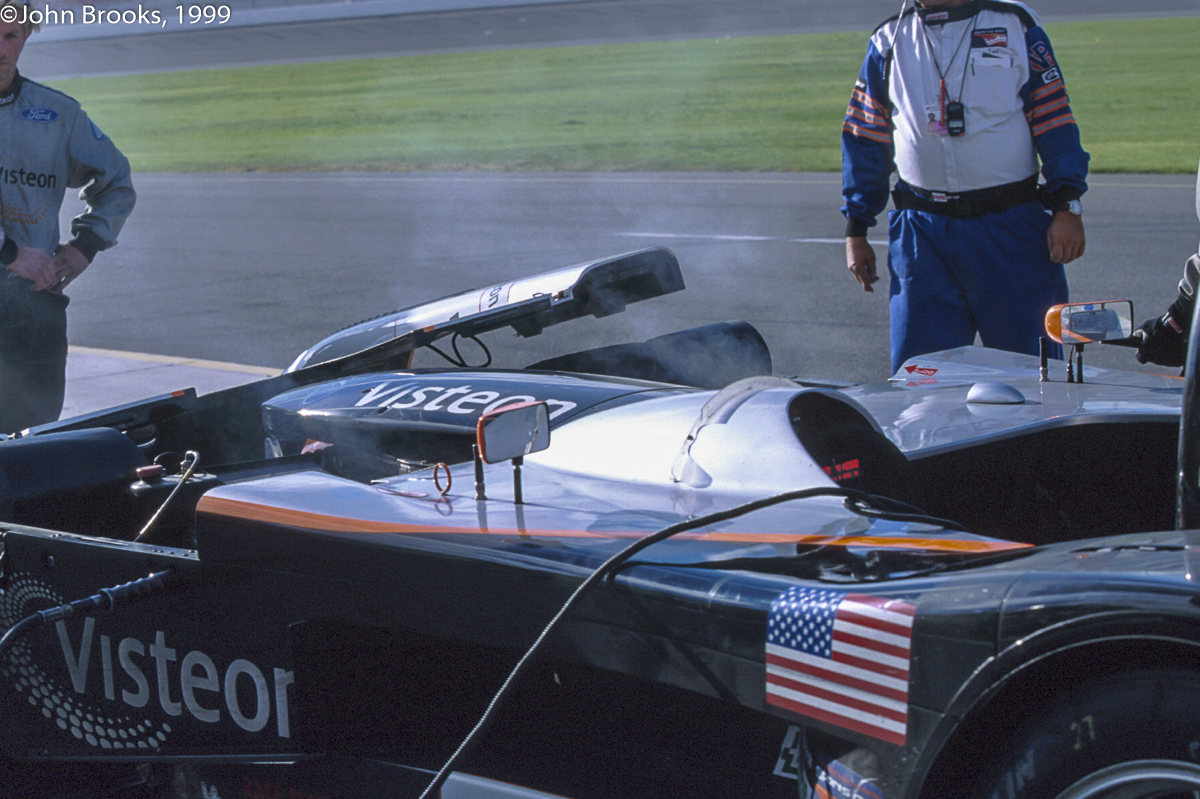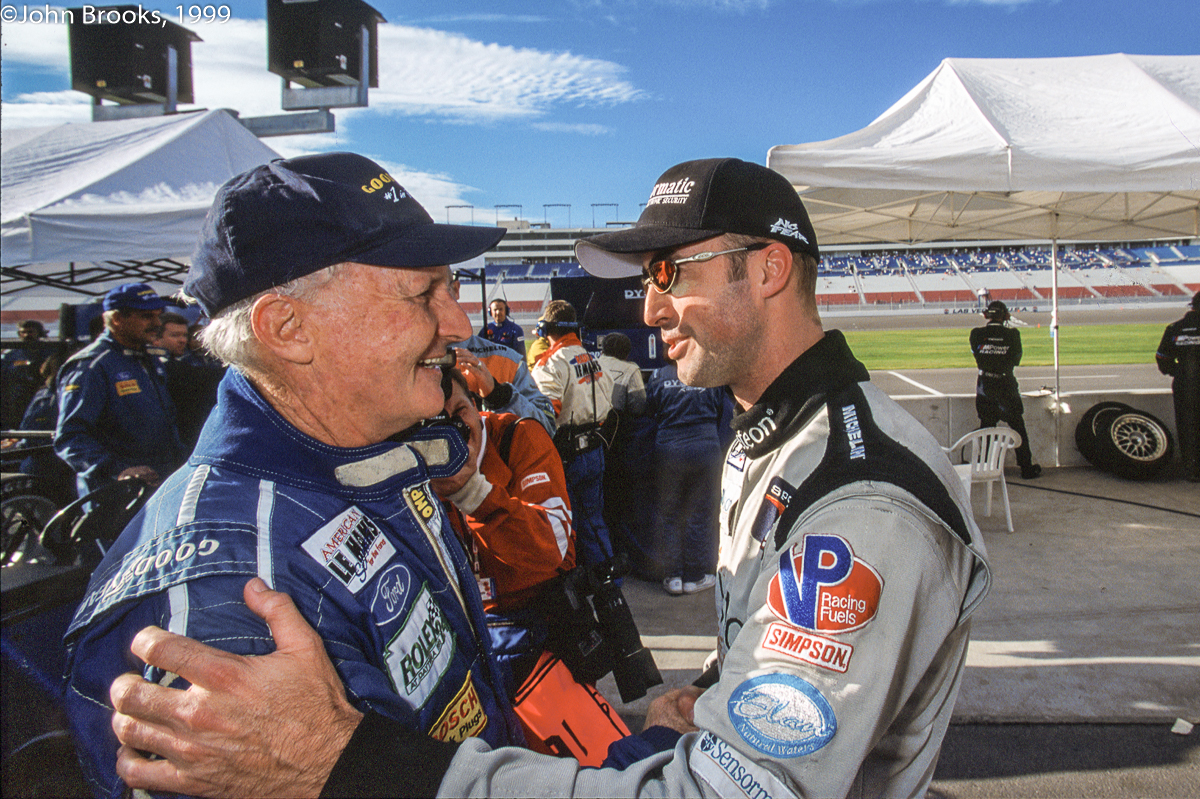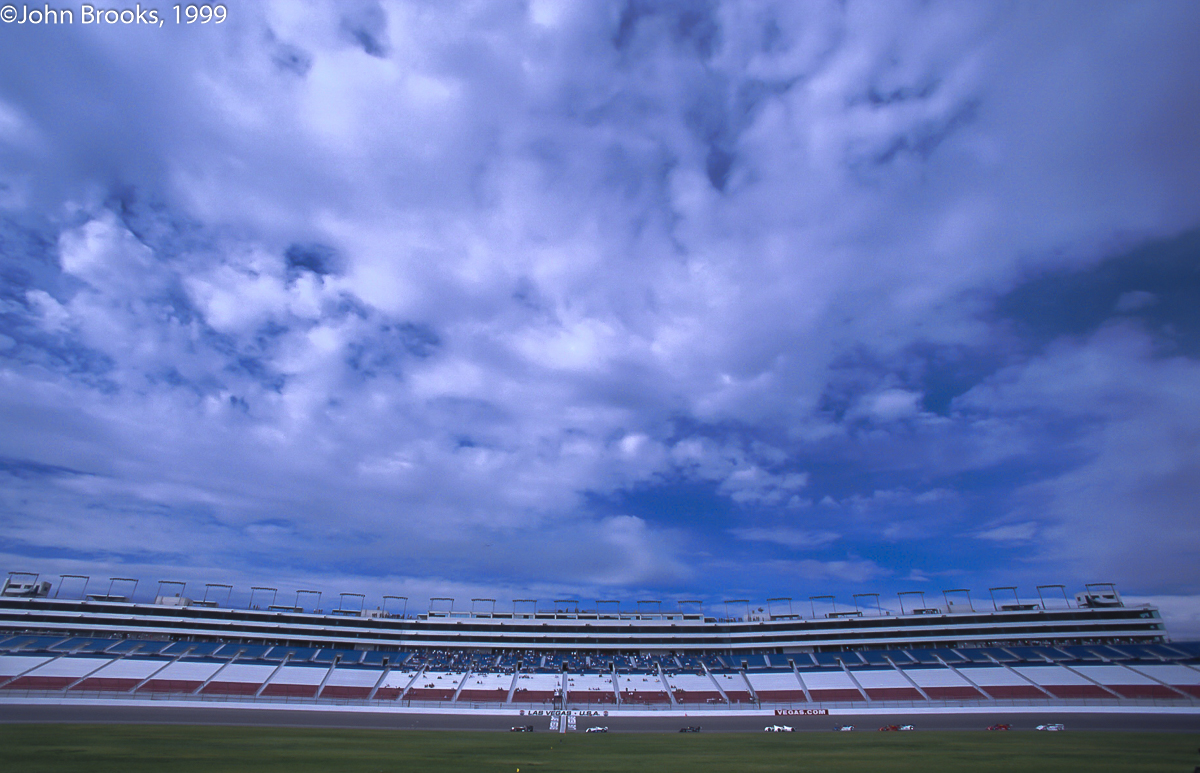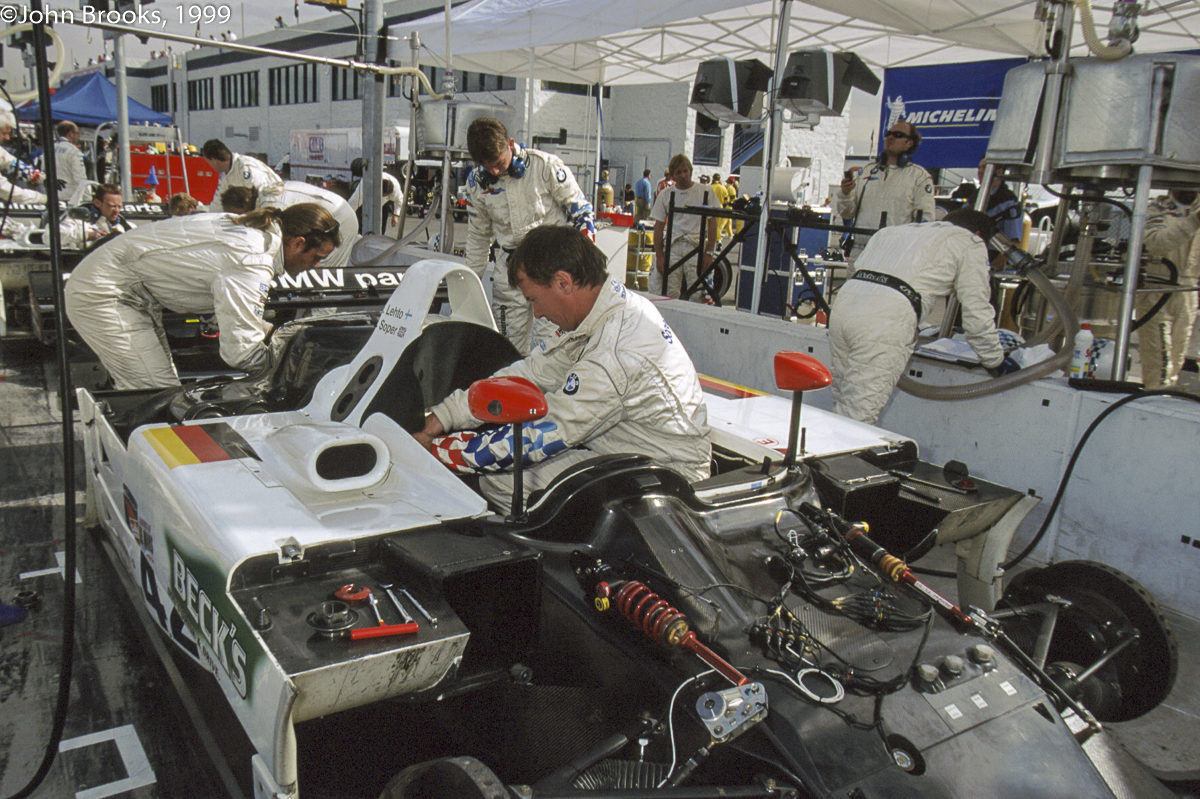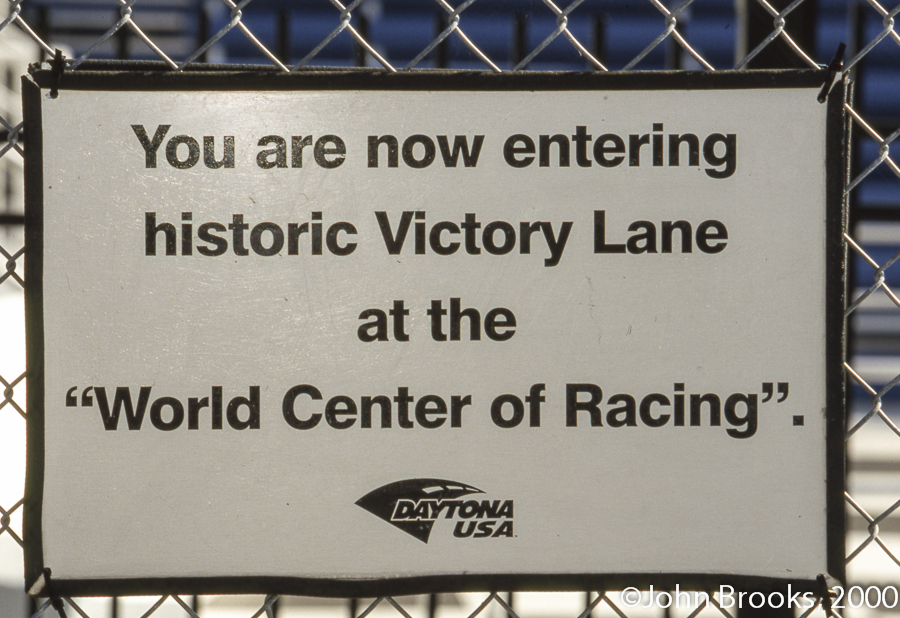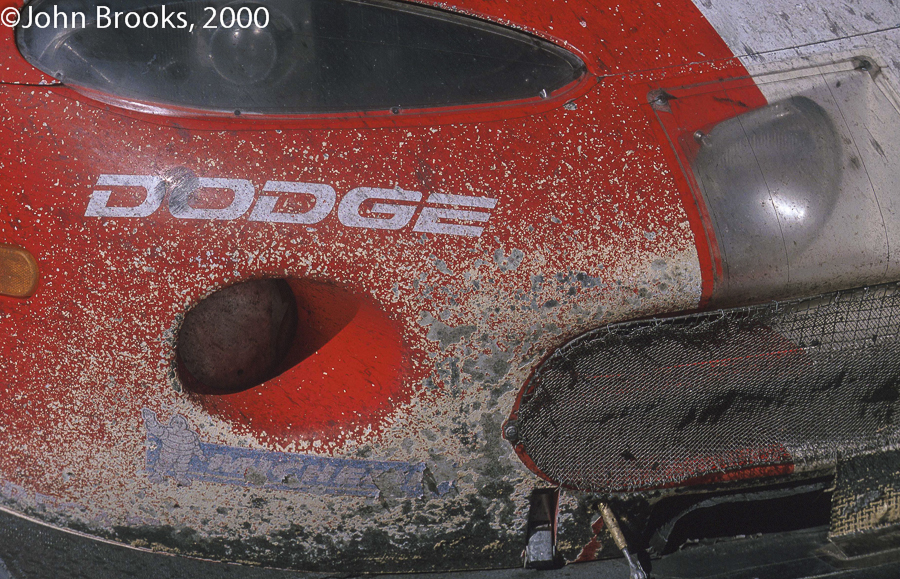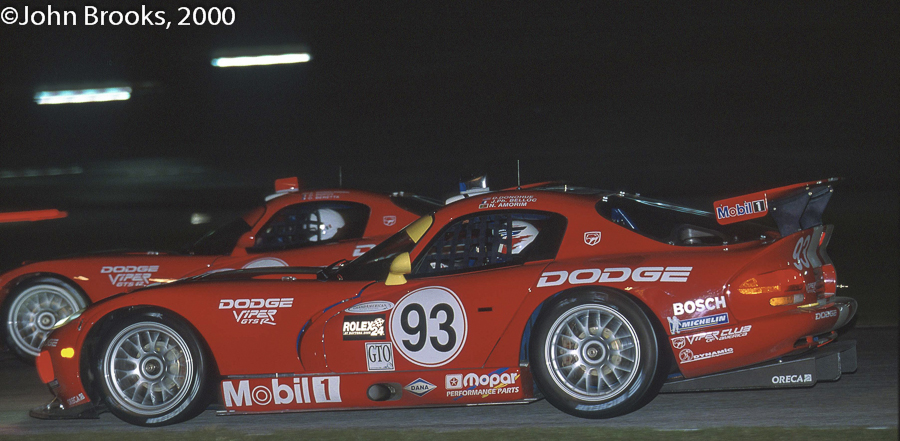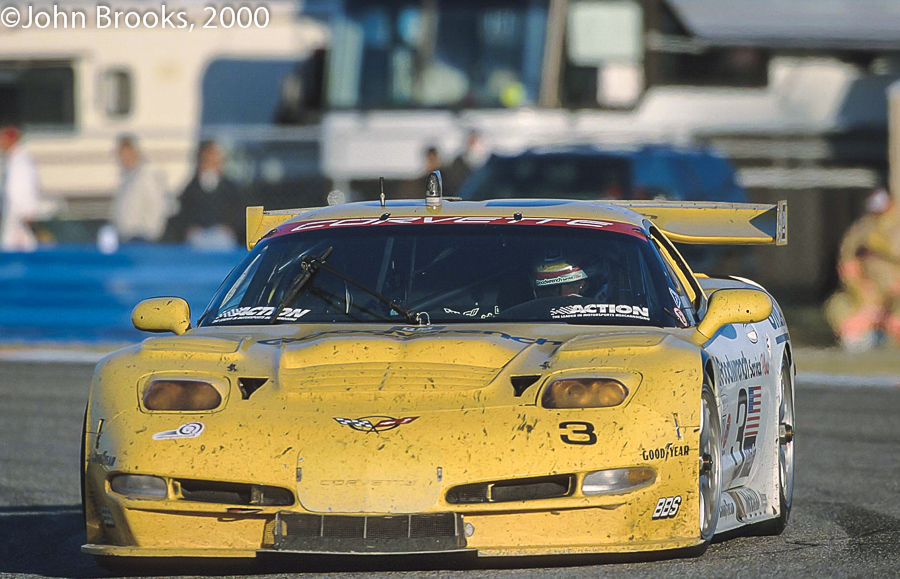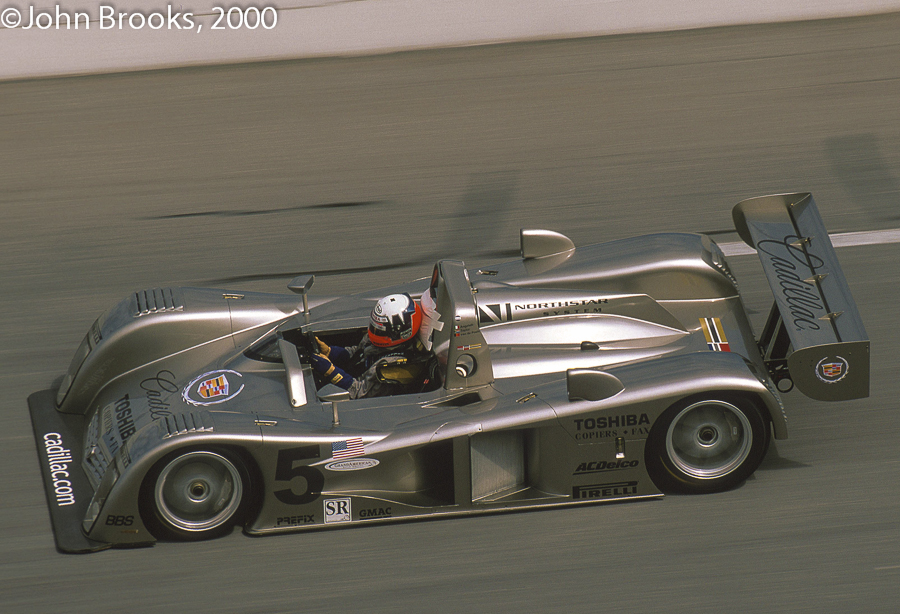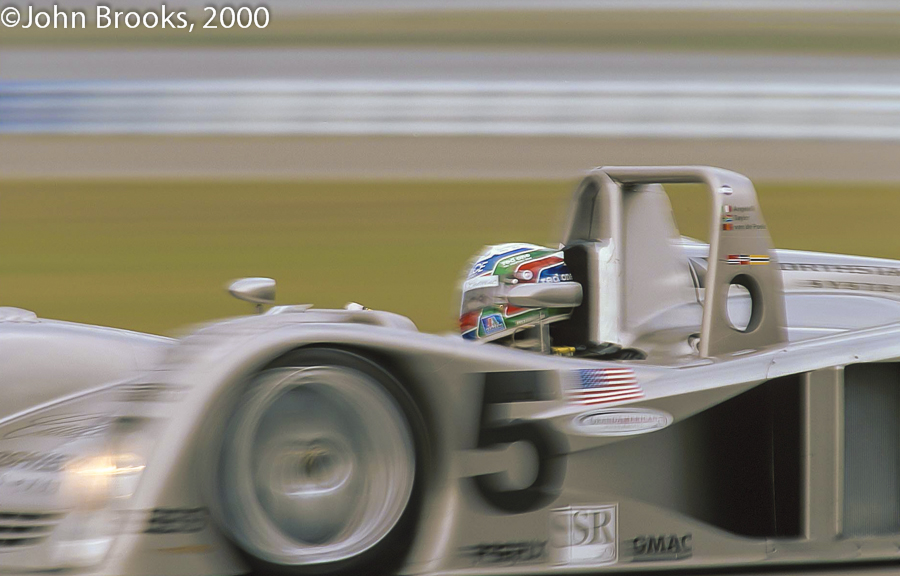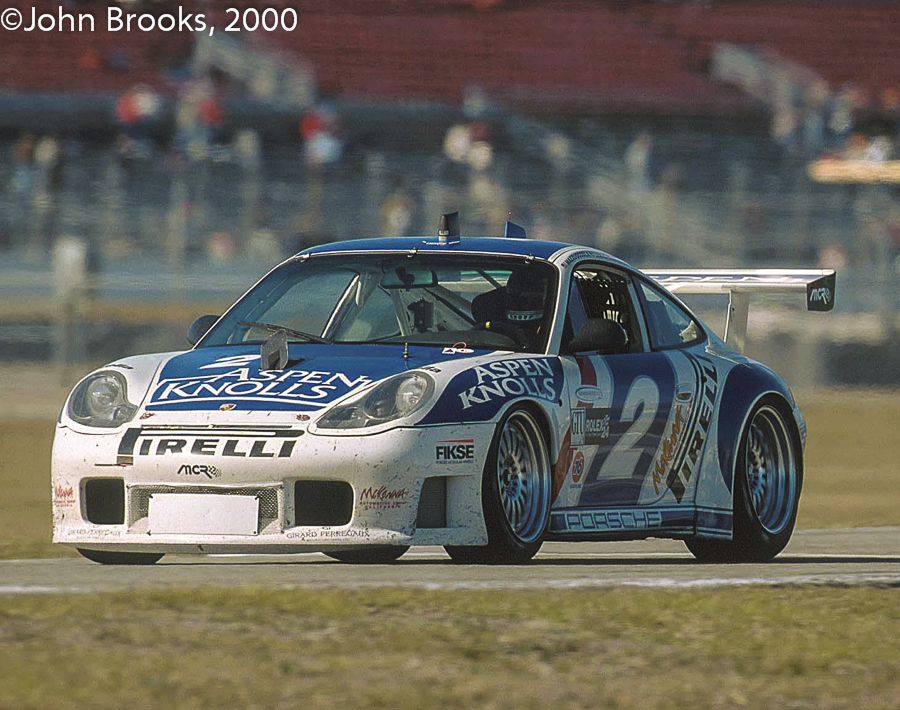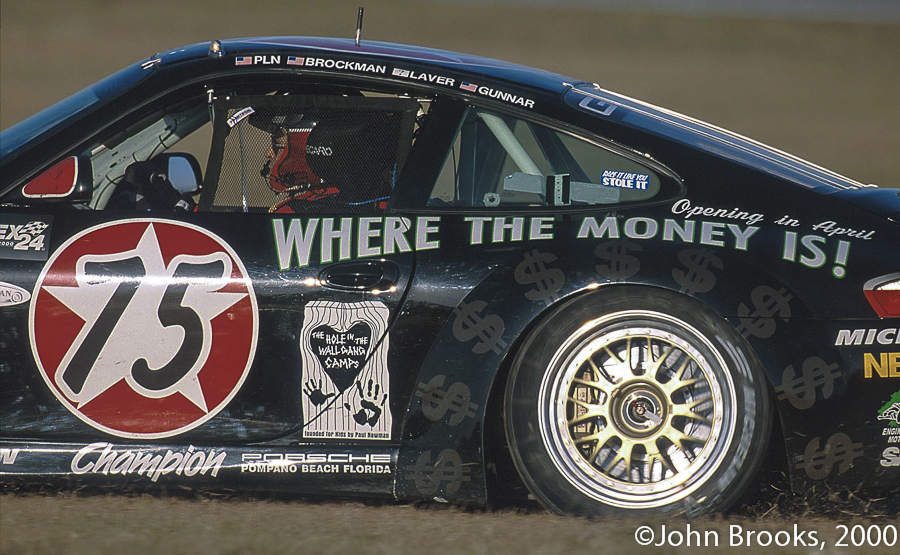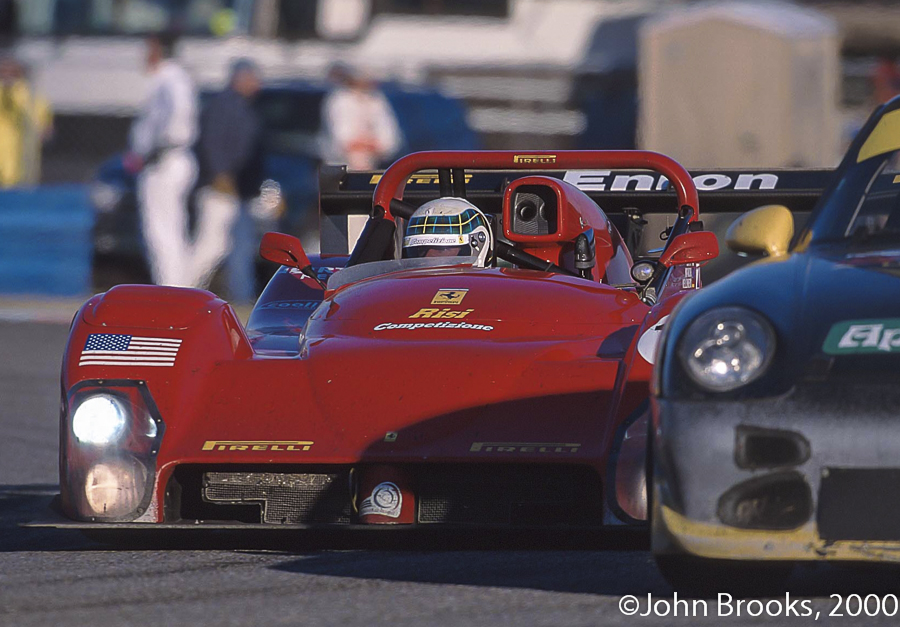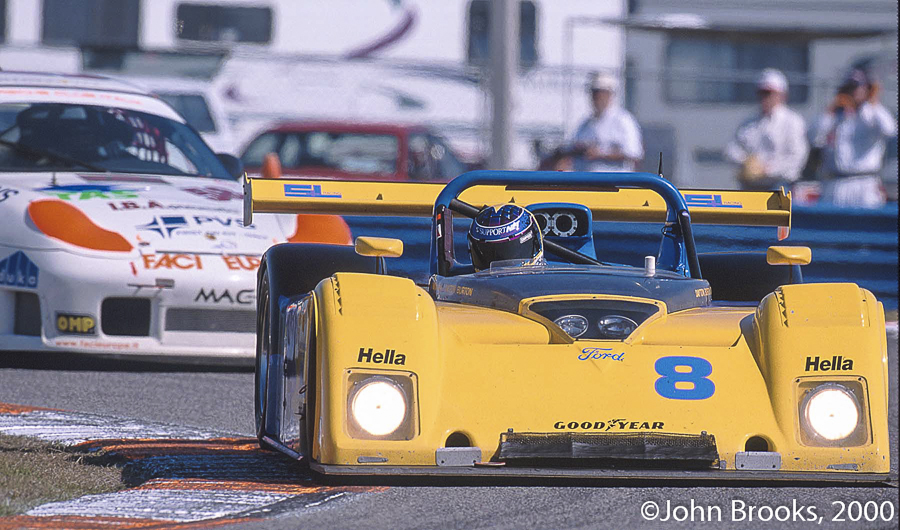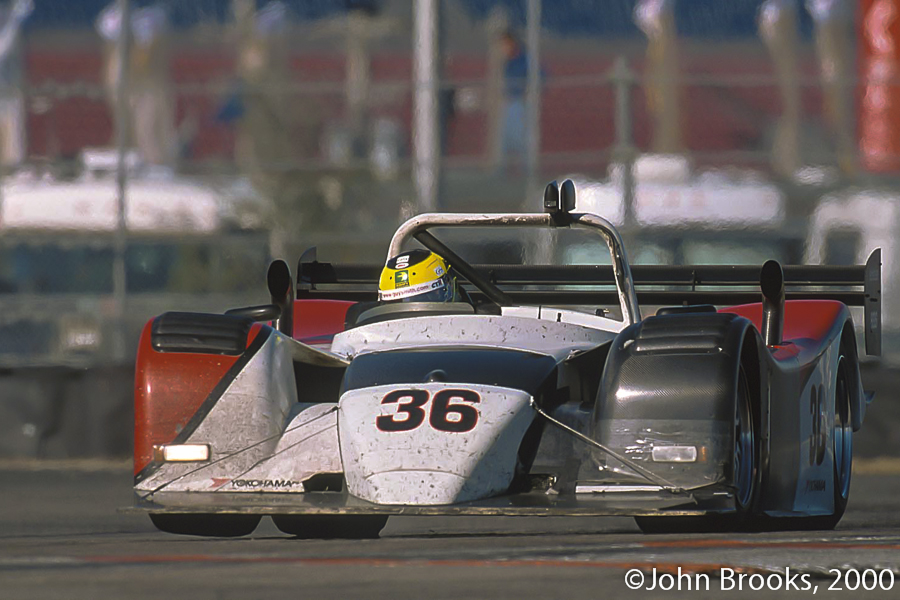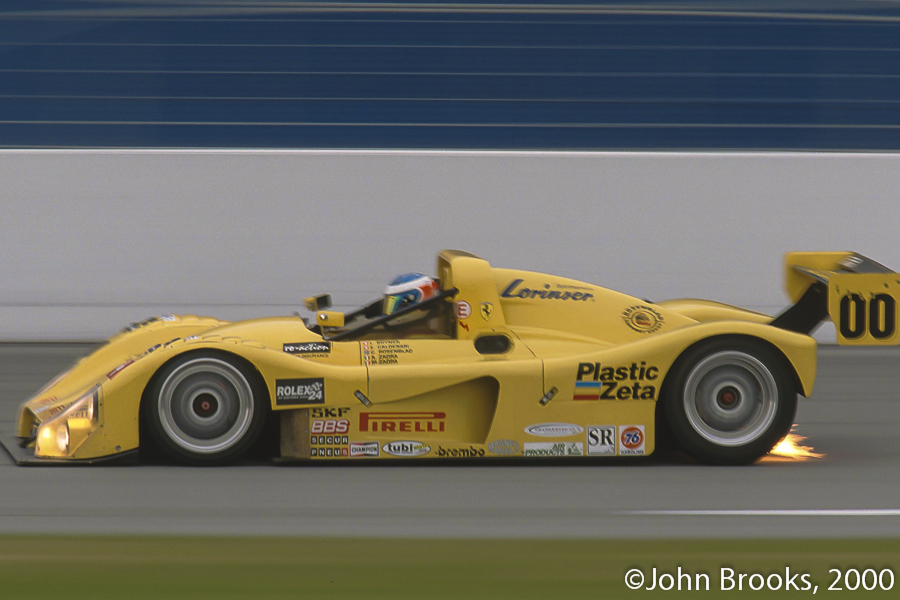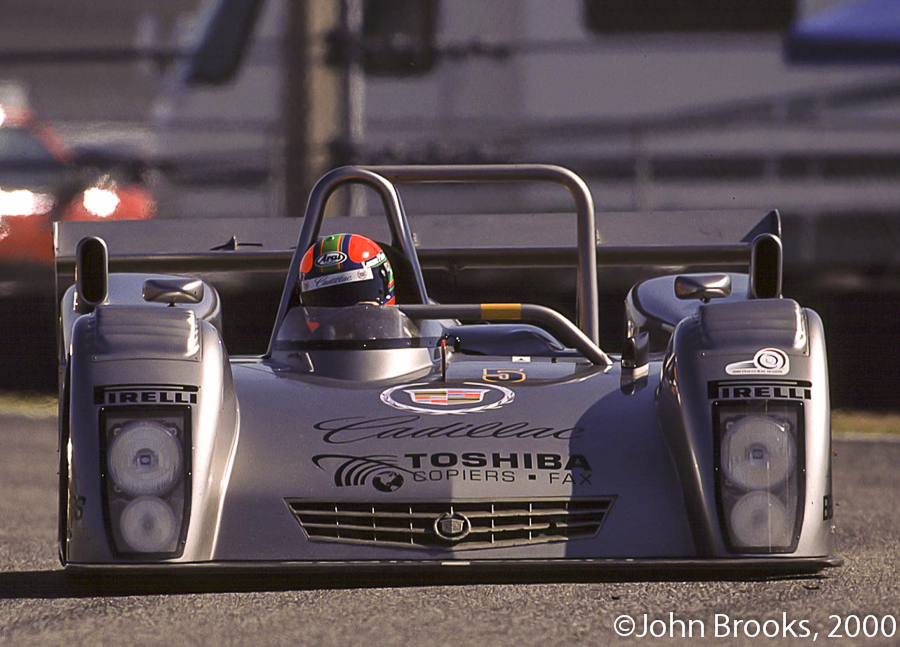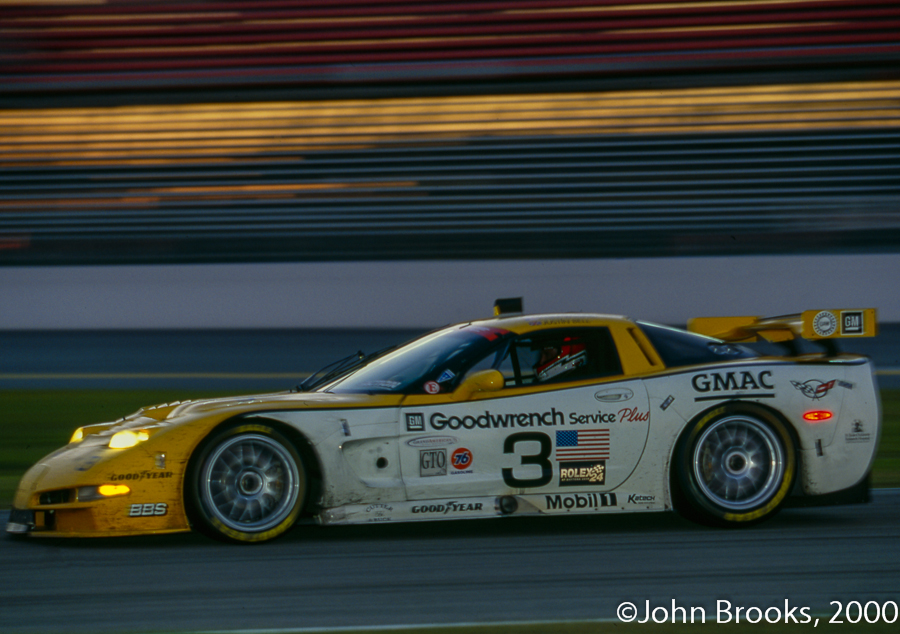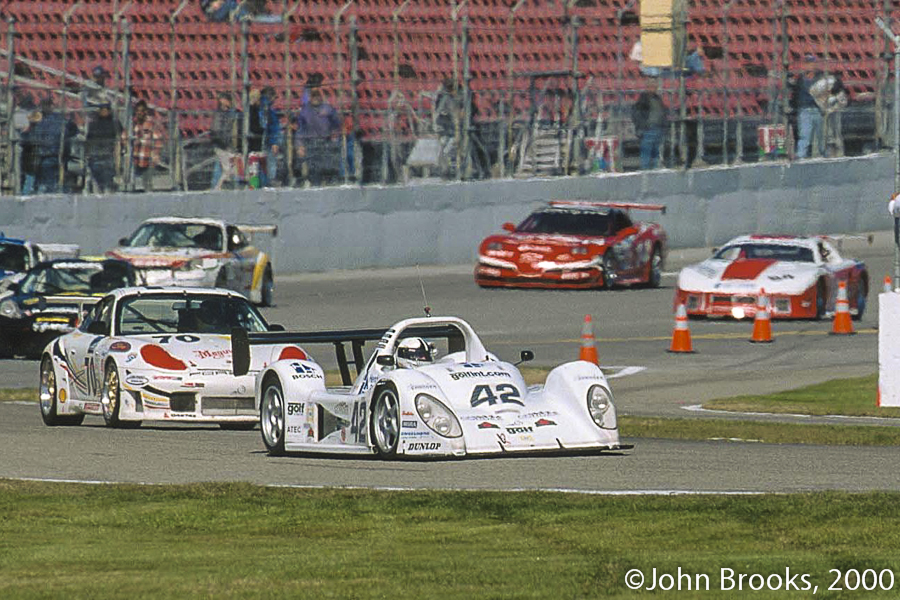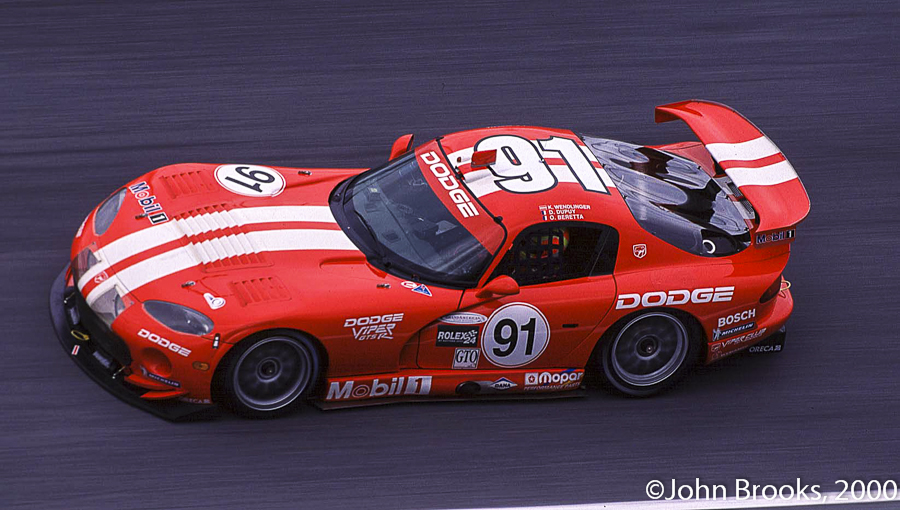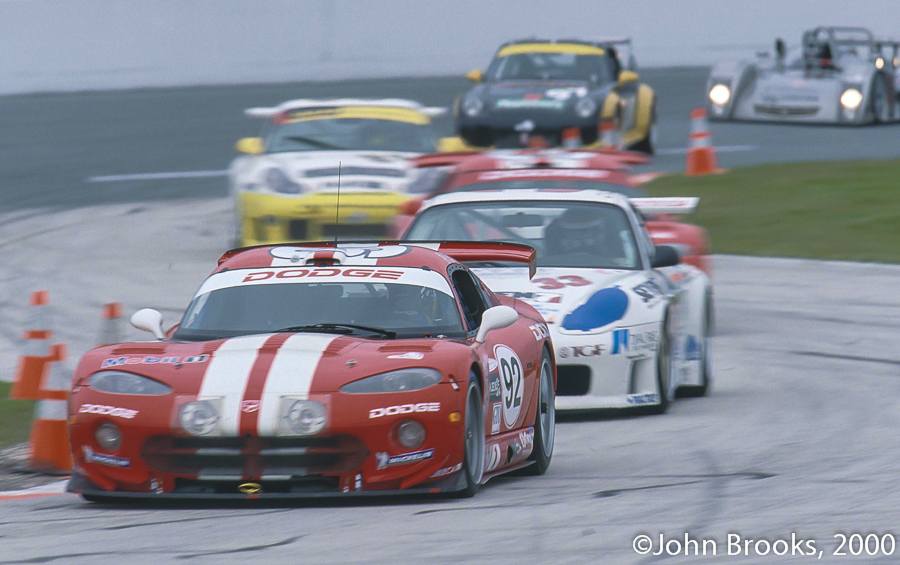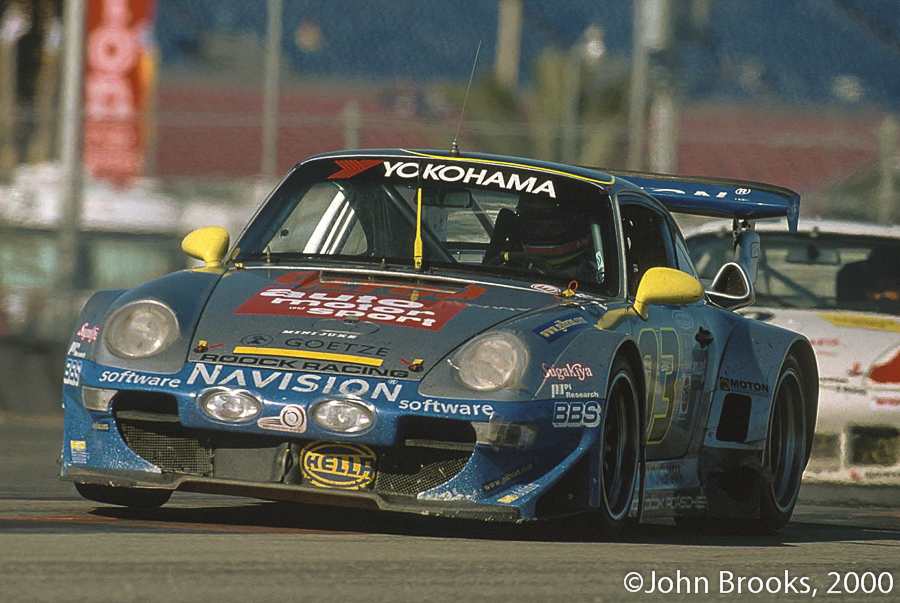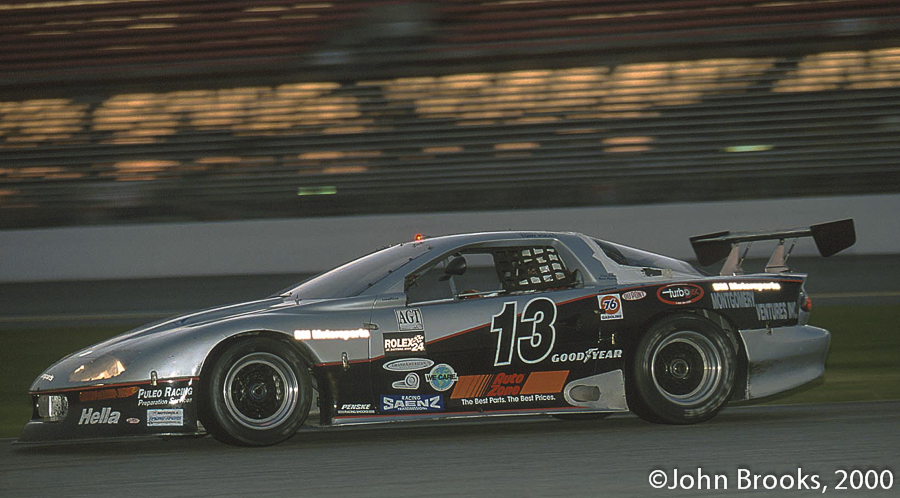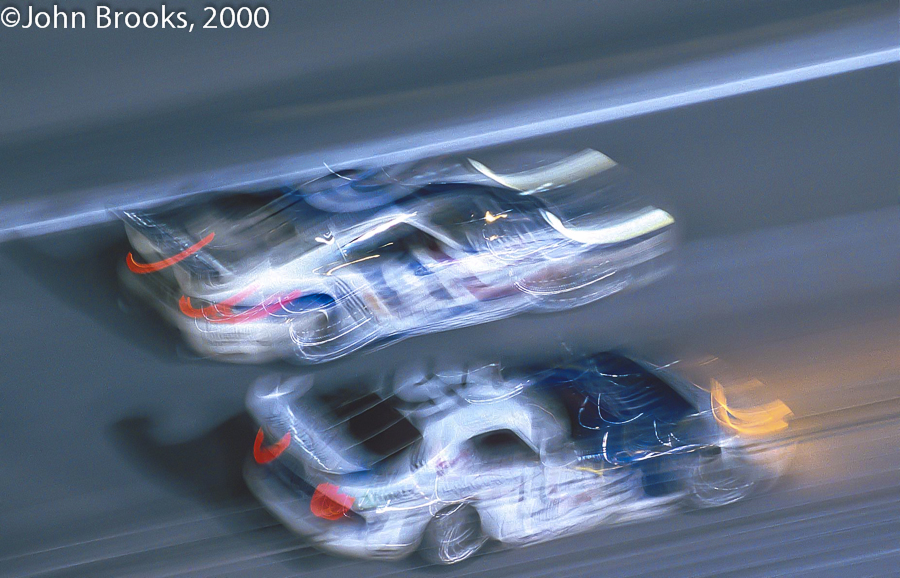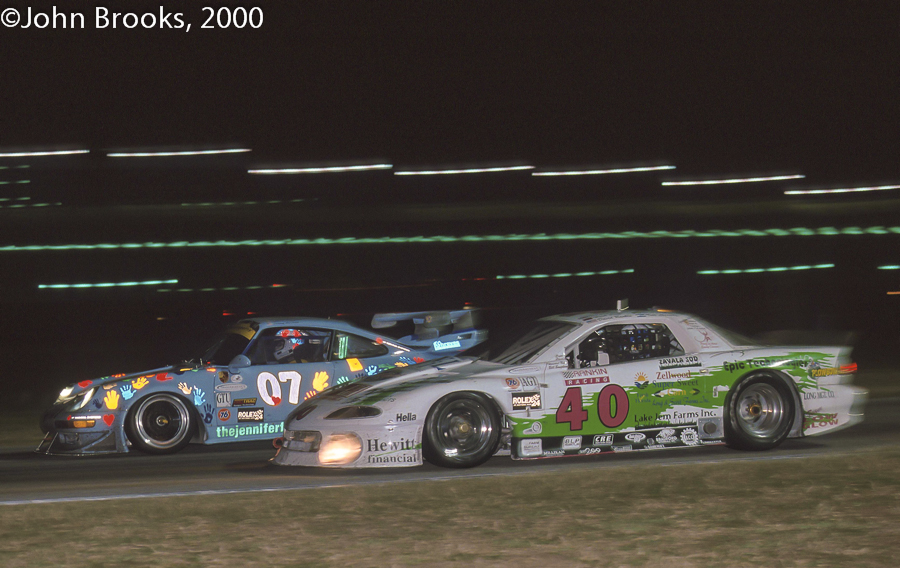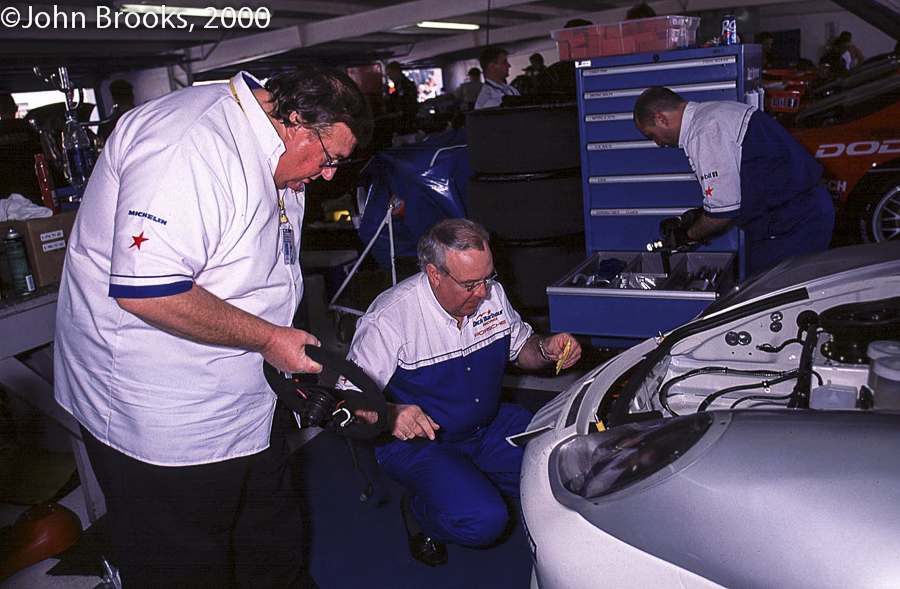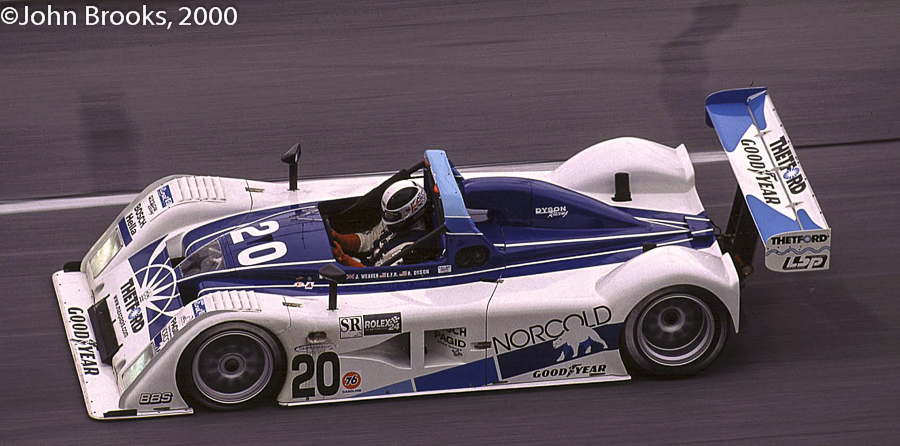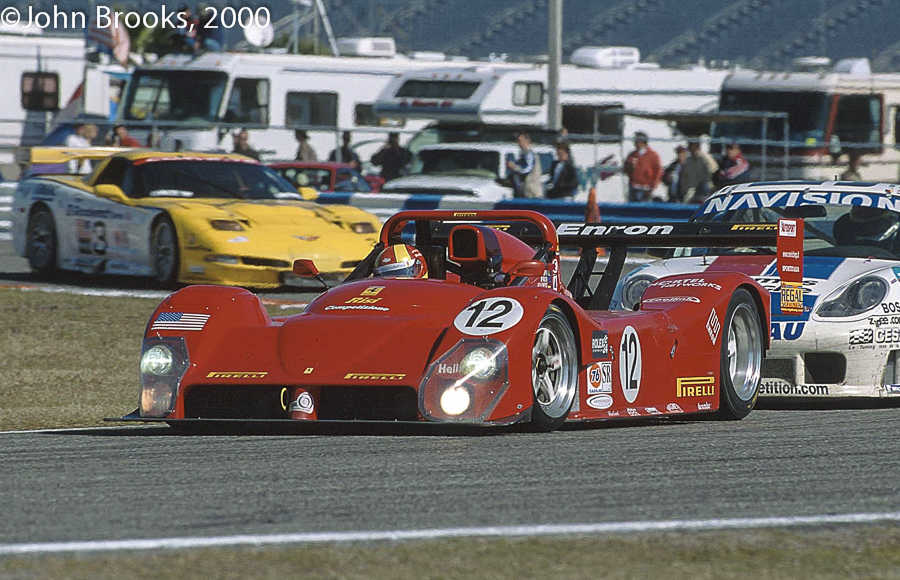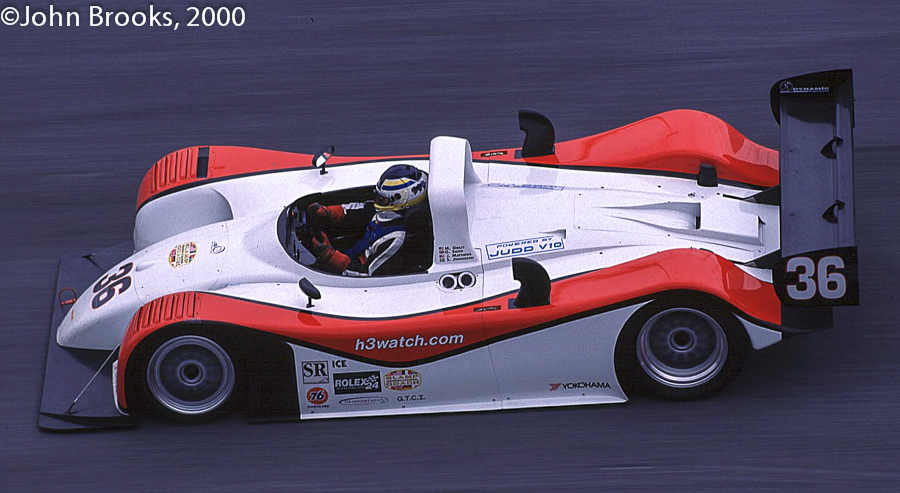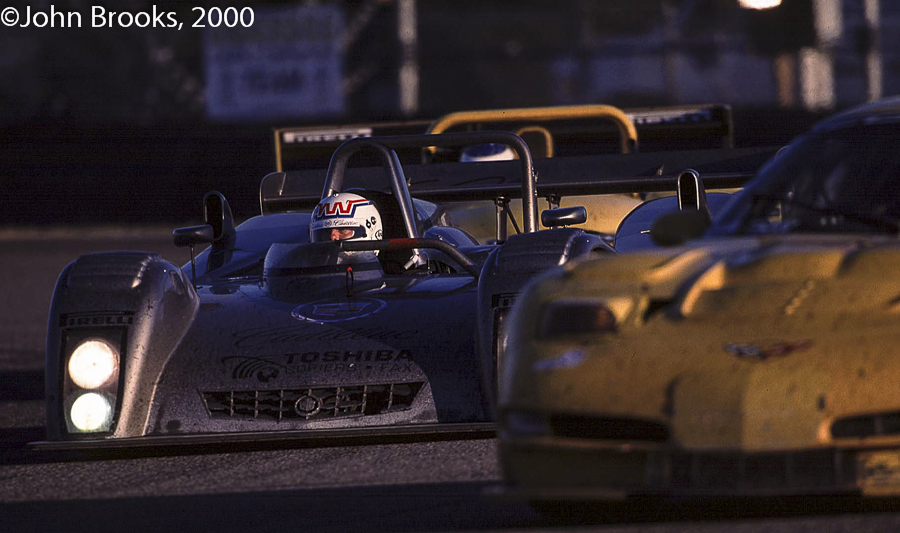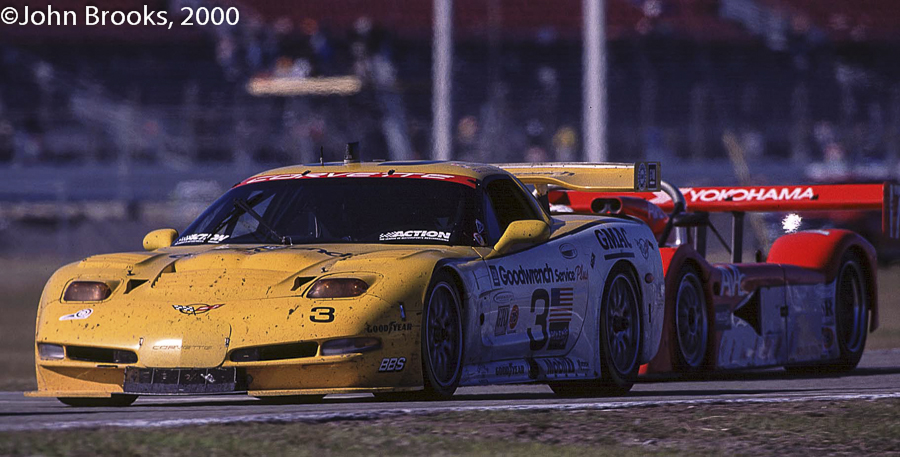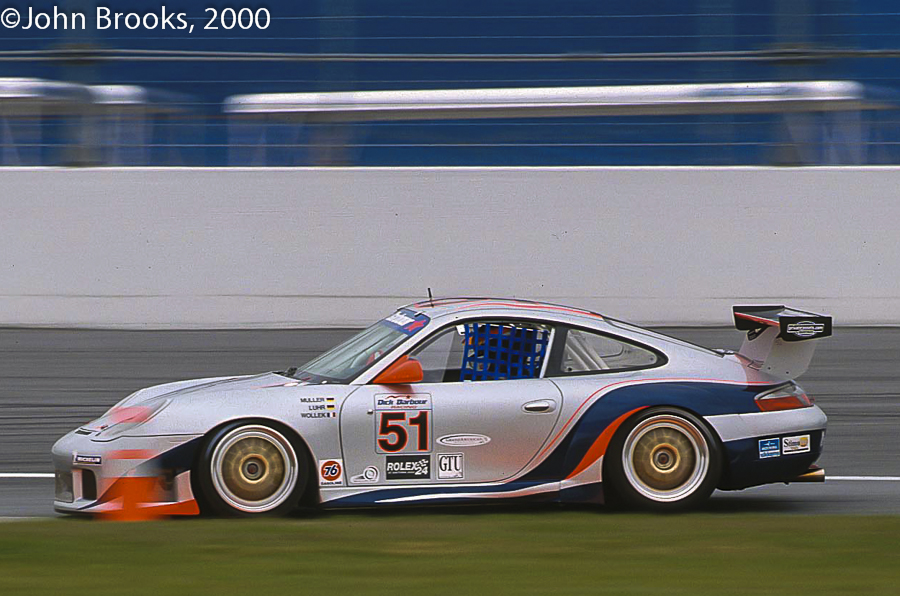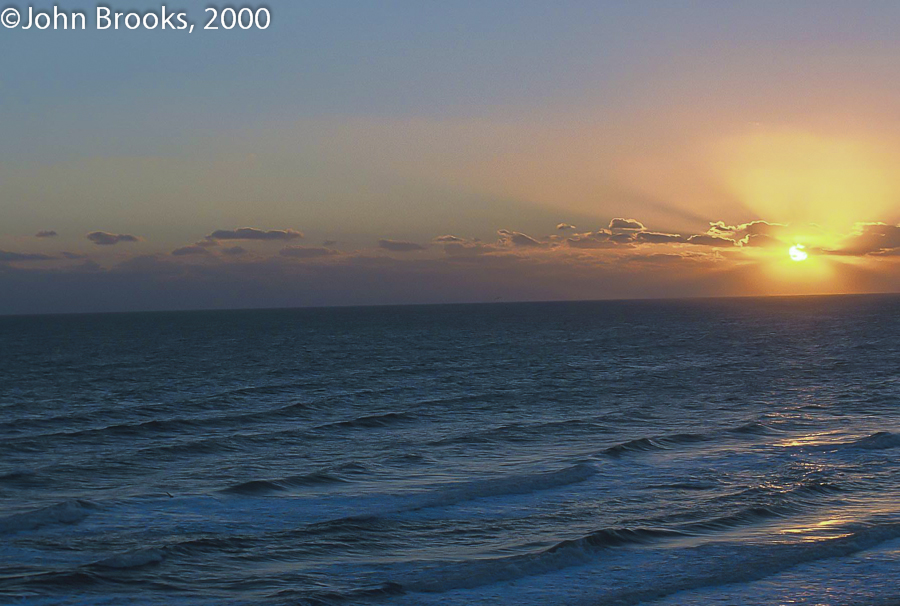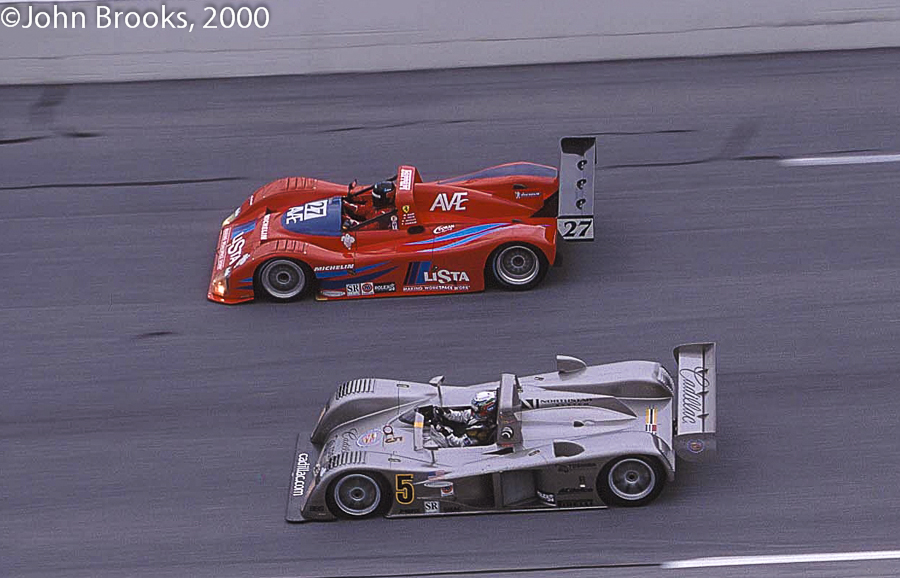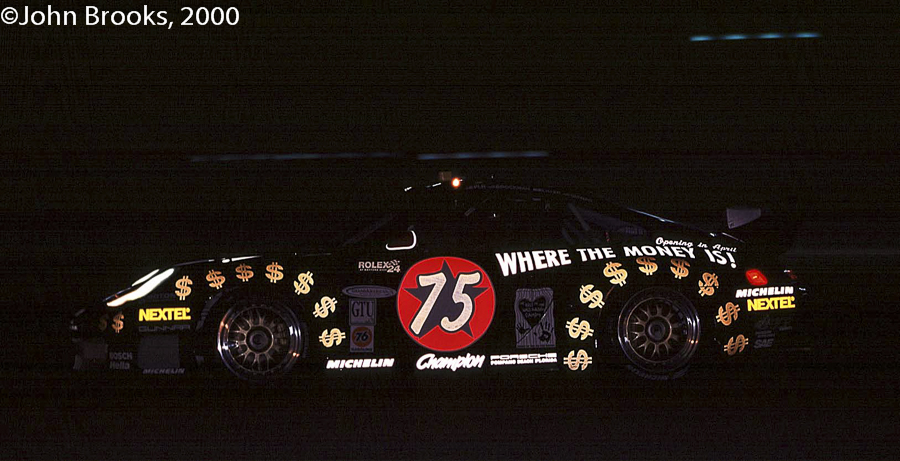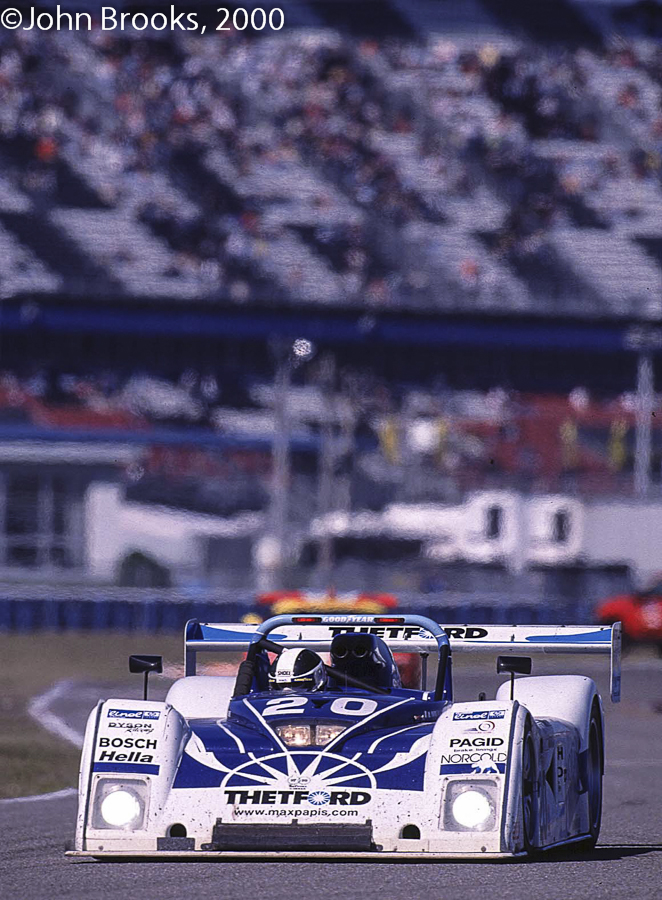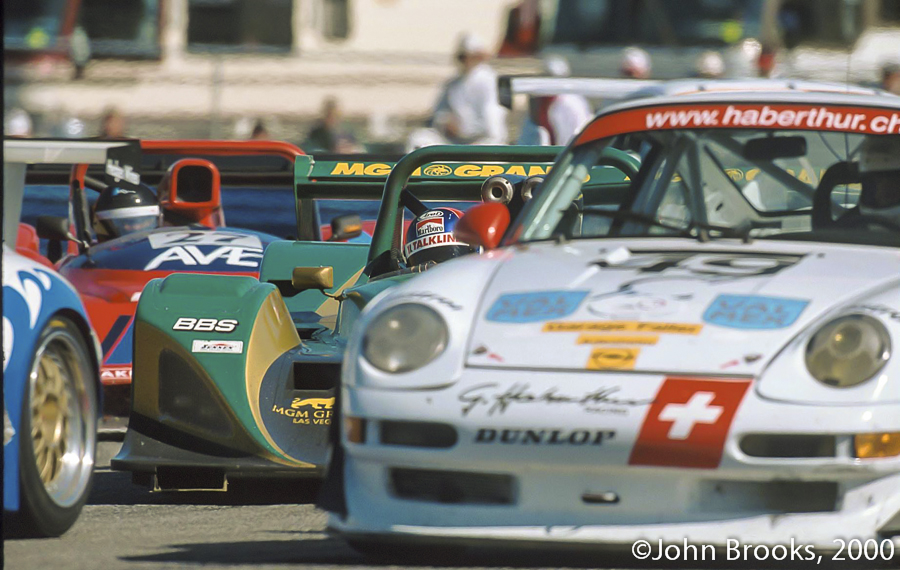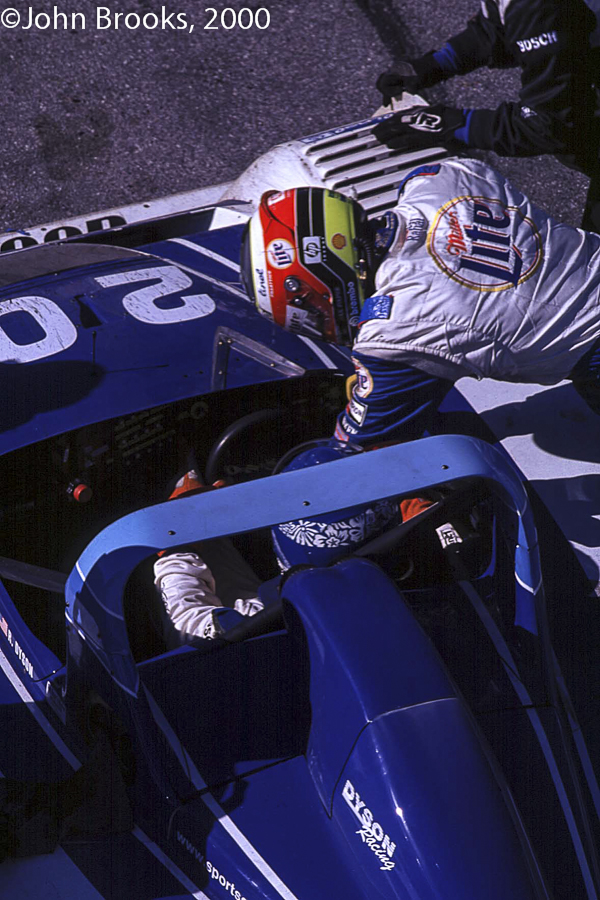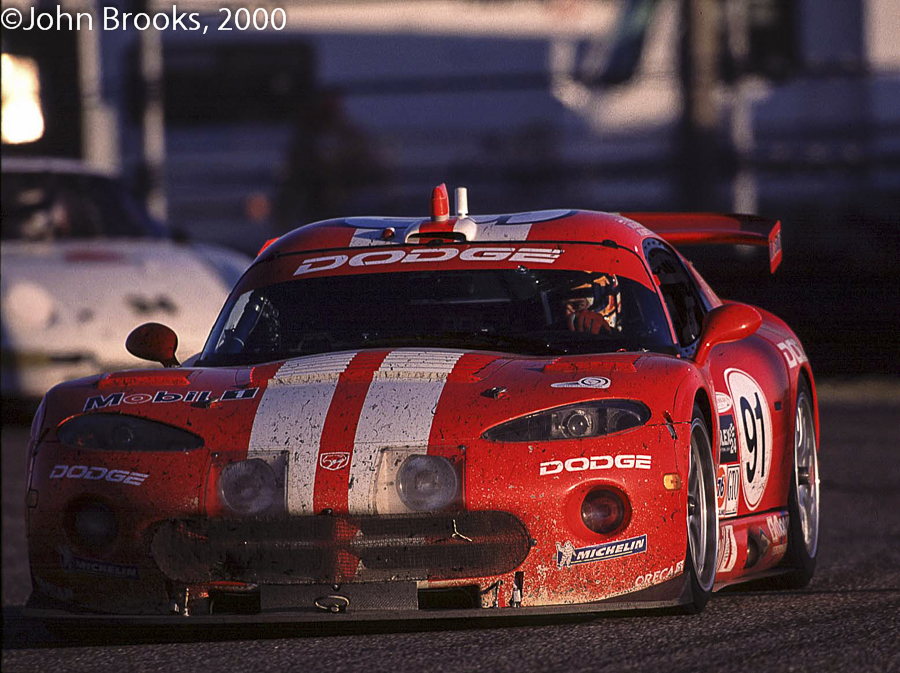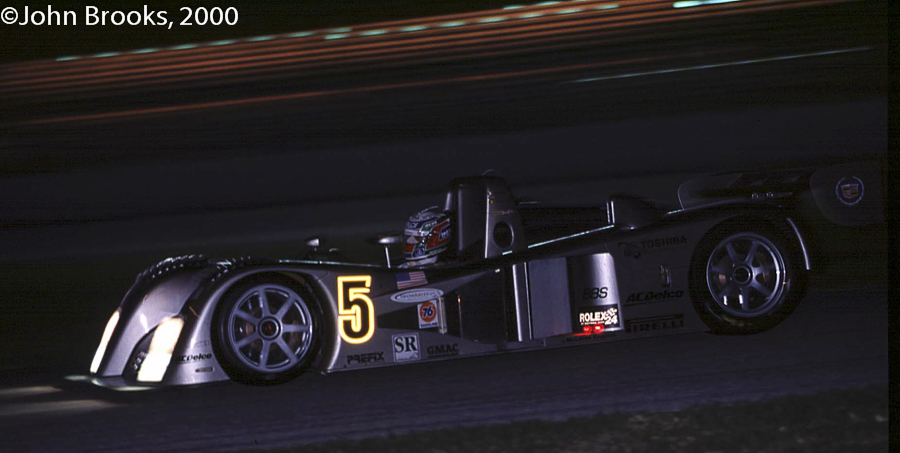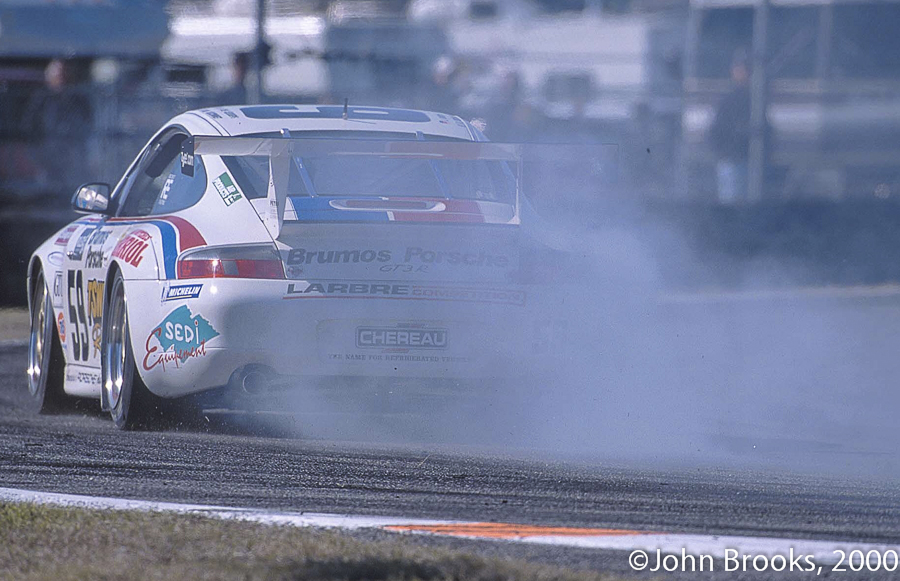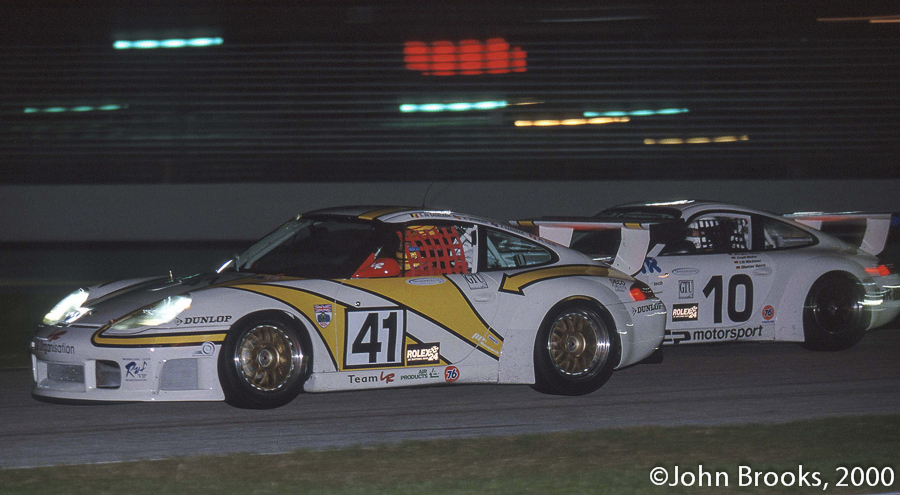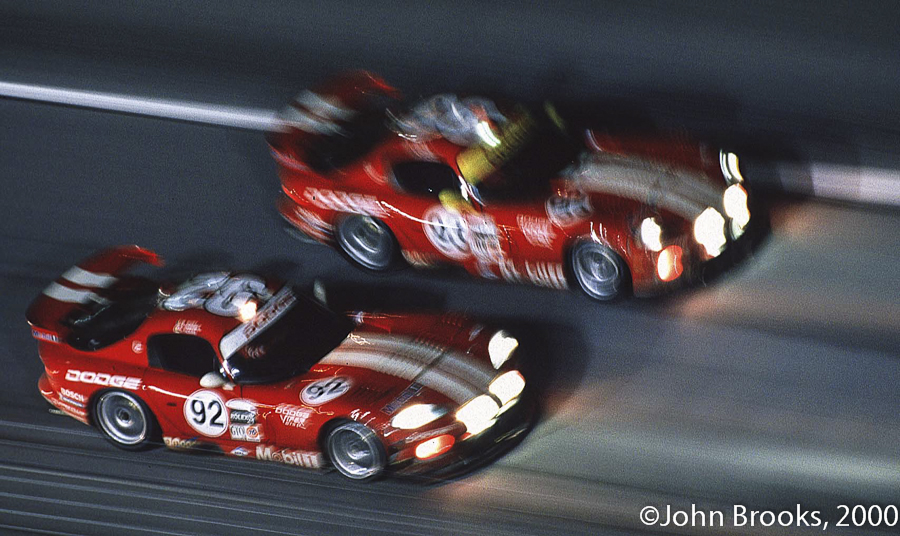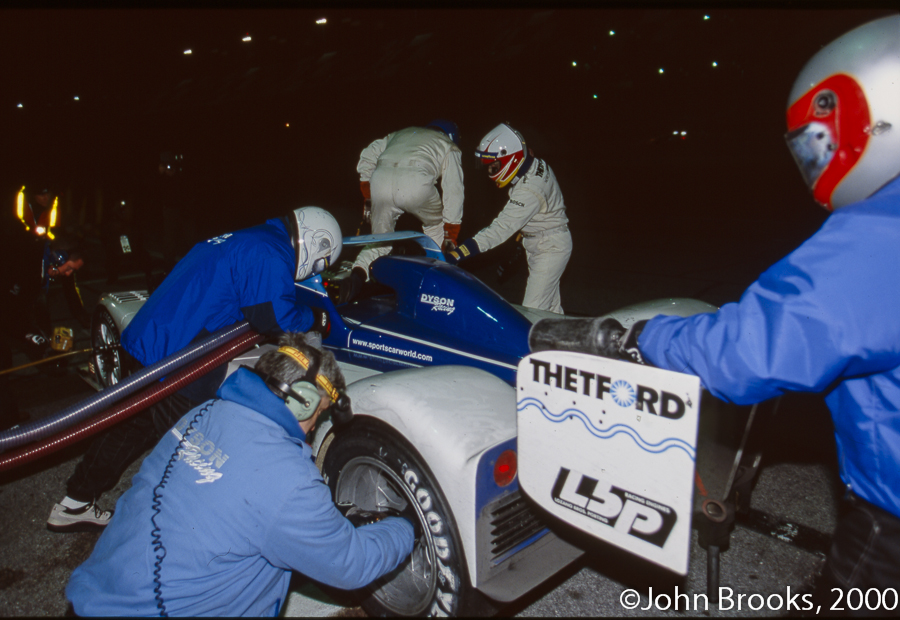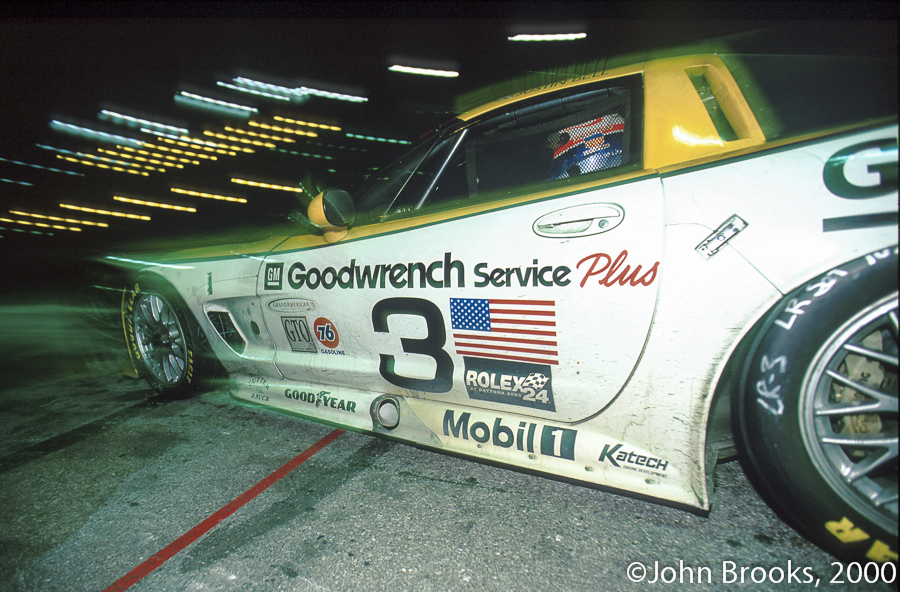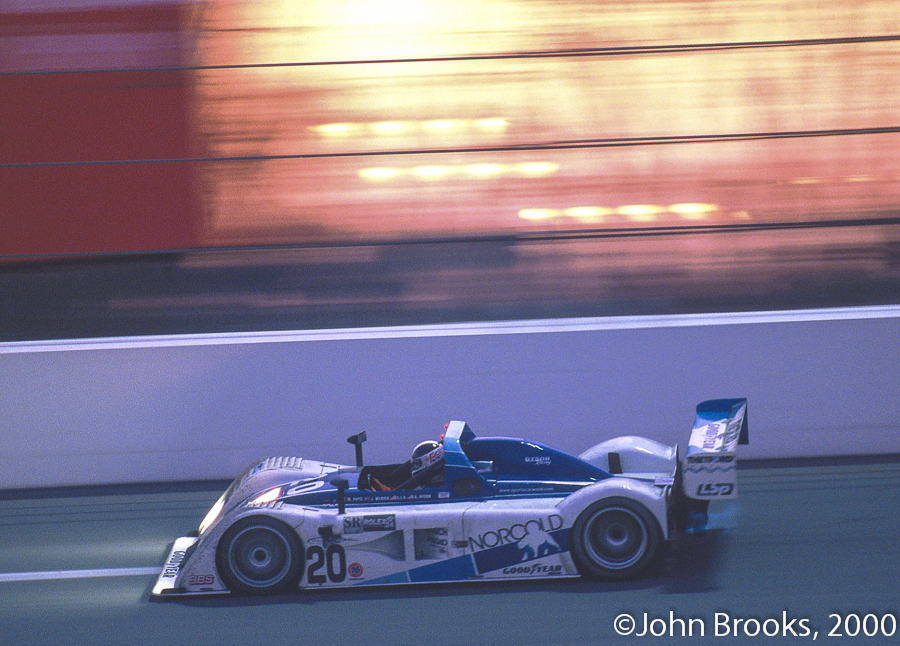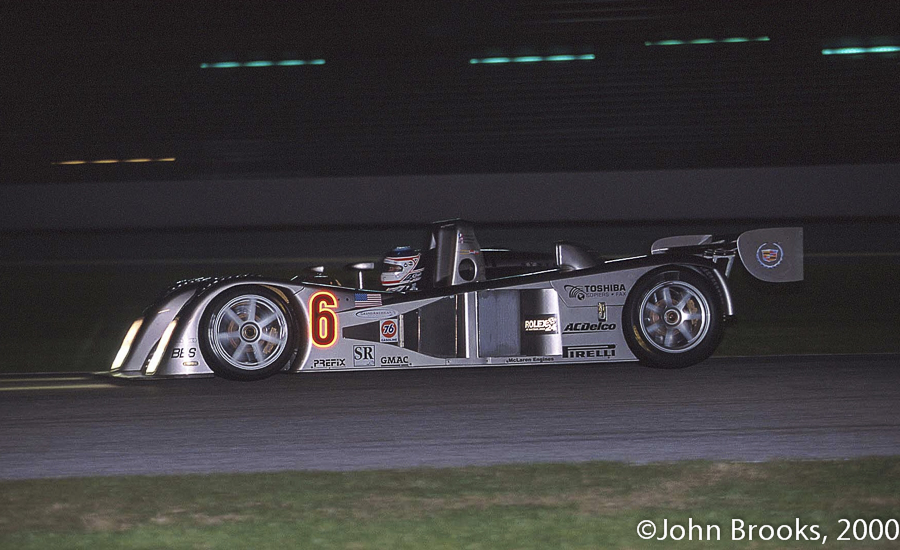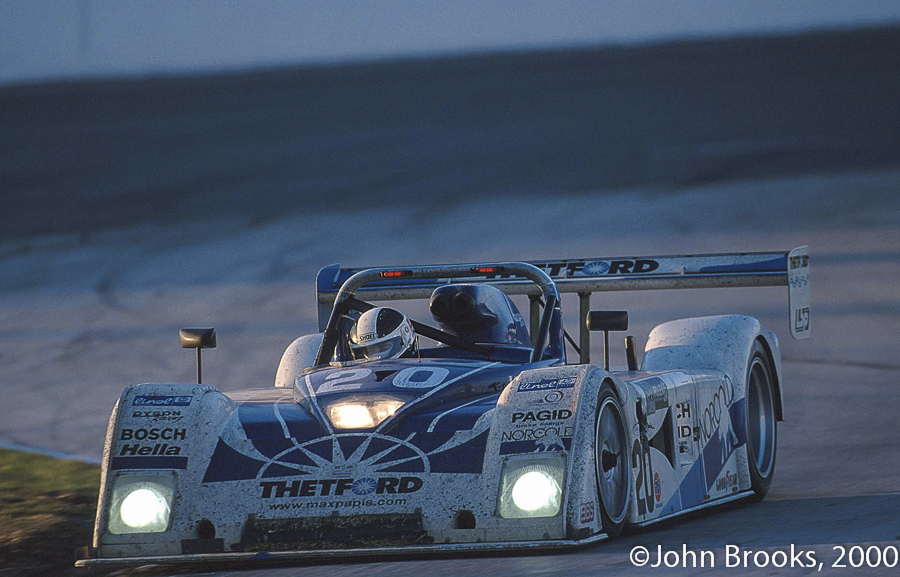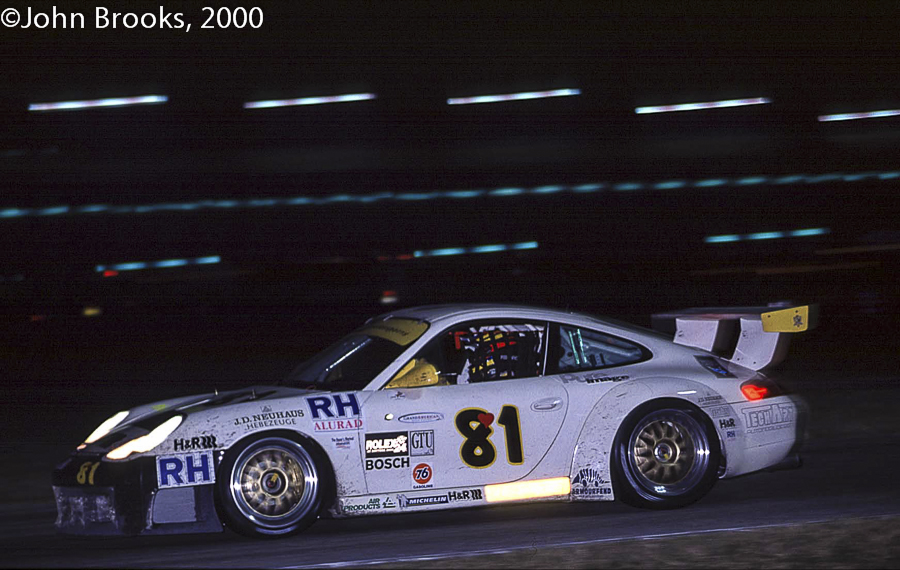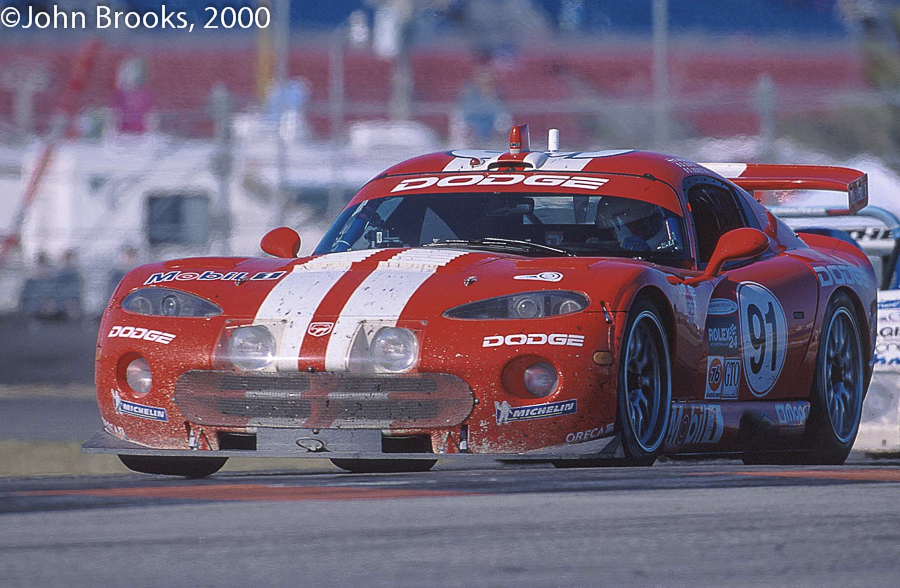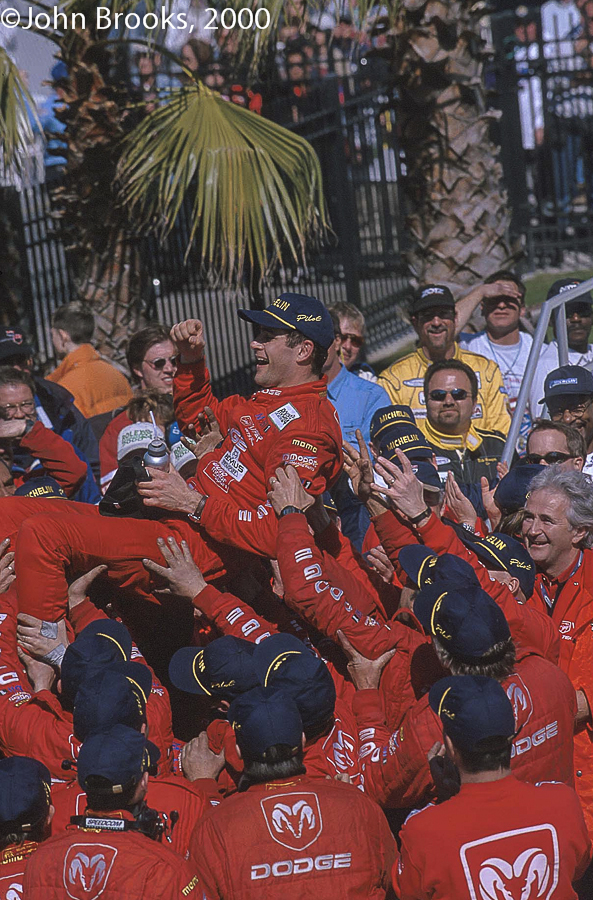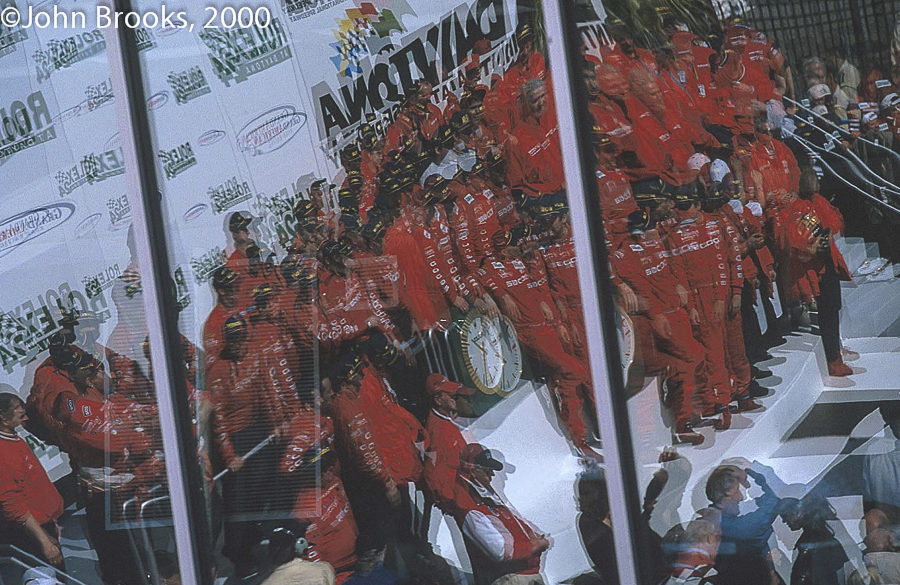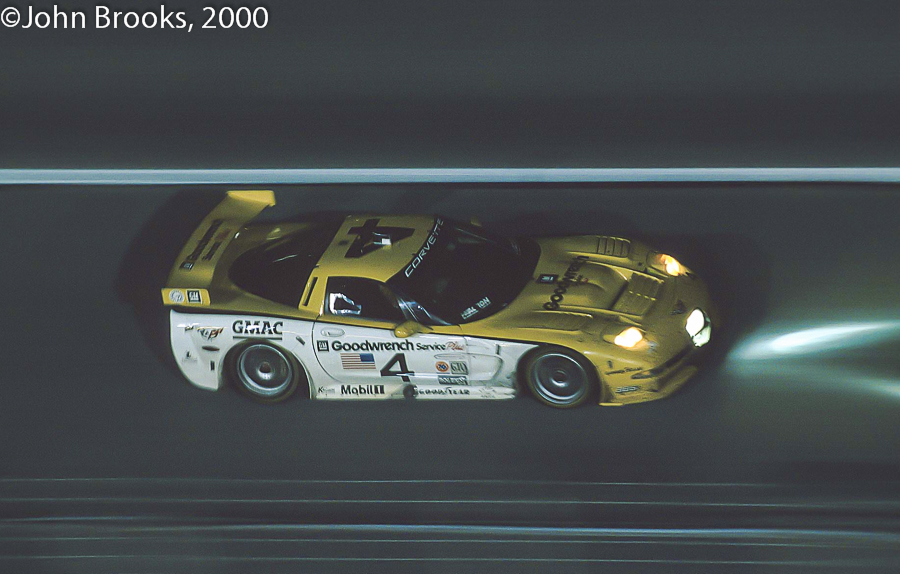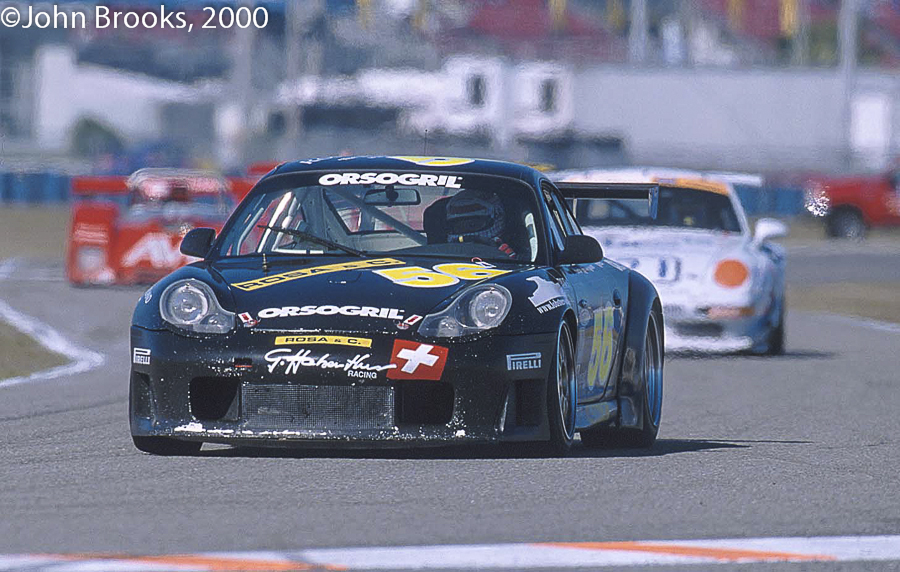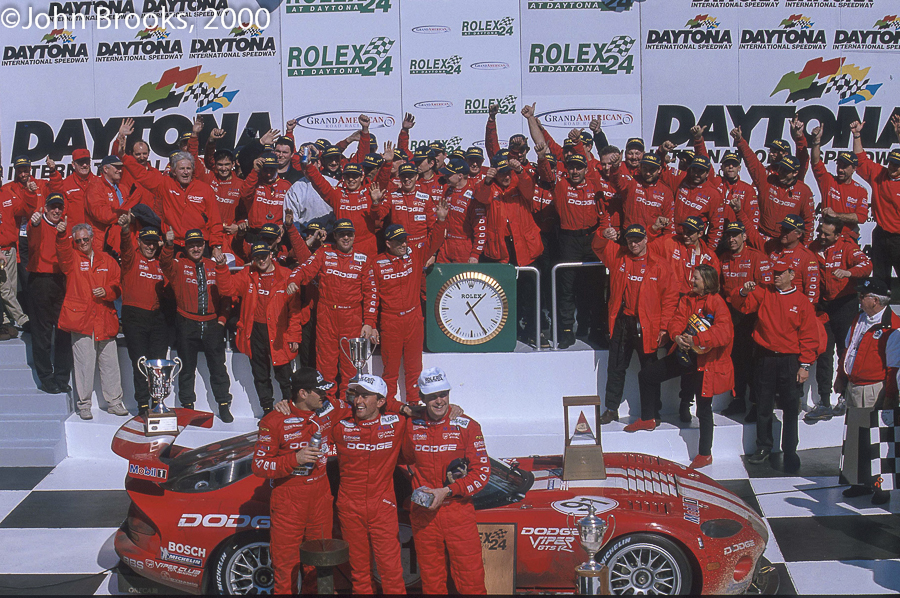The landscape of the American Le Mans Series had changed significantly for the 2000 season with the arrival of Audi and their second endurance sports car, the R8. This would blossom over the next six seasons to become one of the all time great race cars. The lessons of the shortcomings of the R8R had been […]
The post Going Round and Round – Part Two first appeared on DoubleDeClutch.com.
]]>The landscape of the American Le Mans Series had changed significantly for the 2000 season with the arrival of Audi and their second endurance sports car, the R8. This would blossom over the next six seasons to become one of the all time great race cars. The lessons of the shortcomings of the R8R had been absorbed so the R8 handled well, had good downforce and was quick in a straight line.
However it would not be a push over for the newcomers as both BMW and Panoz had well proven teams and cars. In reality both were at a disadvantage with compromises that they had to make to conform to the new aerodynamic regulations introduced in the wake of the Mercedes-Benz’ flying accidents at Le Mans in 1999. In addition to that BMW stopped development on the V12 LMR before the season commenced and began focusing their attention on their upcoming return to Formula One.
When the calendar was announced it contained three more visits to Oval Land……. the stadiums at Charlotte and Texas would join Las Vegas on the trail.
The first of these races was to be Charlotte in the heartland of NASCAR territory. The second round of the ALMS would be a tough event to sell to the Good ‘Ole Boys but the circuit itself was pretty good, a quick infield section with elevation changes, up to Daytona International Speedway standards other than the section taking the infield track back onto the banking at turn one and a silly chicane on the back straight.
The transition from infield to the banking caught out a few during the weekend, one of the first being Allan McNish in the Audi R8R, in the penultimate appearance of that car. The new R8 had crushed the opposition in the first round at Sebring but it was being kept in reserve for the Le Mans 24 Hours, so McNish had to push to the limit in the old car which he shared with Dindo Capello and Michele Alboreto. Spinning the Audi was bad enough but then seeing a grinning photographer with his 500mm lens lined up to record the indiscretion made things seem even worse.
Once we were all back in the paddock the Wee Scot forced a rueful smile when it was confirmed that the wanker he had spotted with the camera was indeed yours truly, his description, not mine.
Charlotte marked the low point the Audi campaign in 2000, the R8R was just about able to run with the Rafanelli Lola but not BMW or Panoz. These two teams would battle along in the race with the #42 BMW V12 LMR just shading the #1 Panoz LMP-1 Roadster S.
Charly Lamm’s boys just about out fumbled the Panoz guys in the pits and in traffic but the result could have gone either way. JJ was pleased though…………….
Brabham and Magnussen were just eight seconds down on the BMW lead car when the flag dropped with the Rafanelli Lola picking up the final spot on the podium.
The Audi of Emanuele Pirro and Frank Biela could only manage sixth place, the return of the R8 to the ALMS could not come soon enough.
GTS was reduced to a Viper parade, as Corvette kept their powder dry in anticipation of their first trip to Le Mans for the Test Day later that month.
The only opposition was a pair of venerable GT2 Porsches which were a long way off the pace, though troubles for #92 Viper meant that Zak Brown and Vic Rice Roock Racing 911 bagged runner up spot to Olivier Beretta and Karl Wendlinger.
The GT class had been invaded in 2000 by a horde of the new 911 GT3-Rs , nine examples of which were at Charlotte. Their début earlier in the season at the Rolex 24 had been marred by a series of engine failures, I looked at that race earlier HERE
They were opposed by two PTG BMWs, the E36 version almost pulling off a shock win after the Dick Barbour Racing ‘werks’ 911’s both hit problems early in the race.
Eventually the Bob Wollek/Sascha Maassen 911 recovered to take victory for Stuttgart rather than Munich.
The crowd numbered in the hundreds rather than Nevada’s tens but in the confines of the huge auditorium designed to take the huddled masses of NASCAR fans this looked pathetic, a problem experienced at all of the Ovals visited. Signs warning “NO THROWING, You will be Removed” stencilled onto the wall were not required………apparently it is a local sport to lob fast food and the like at passing cops, photographers etc., during quiet periods on the track……..a sort of Agincourt Experience with half chewed wings ‘n B-B-Q sauce rather than arrows……..no one much cared about the few clueless photographers like myself stumbling around in search of inspiration, we remained largely safe, a danger only to ourselves.
If Charlotte had been pleasant enough on April Fools’ Day then the furnace conditions encountered at Texas Motor Speedway in early September were not. Whoever signed up the circus to perform in this part of the world at the beginning of September kept a low profile during the weekend, if discovered he, she or it would have been lynched.
Those of us compelled to work outside in temperatures of 110F looked like extras from Lawrence of Arabia and as for the poor sods driving front-engined, closed cockpit crucibles such as the Viper and Corvette, words fail to describe the heroics required of the drivers just to last the race.
In recognition of the insanity of trying to run in the noon sunshine the race was timed to start at dusk…….about 2 degrees cooler………naturally not all Texans are mad despite what you may read and they stayed away in droves…….the rest of us were not so fortunate.
The grid lined up for what seemed forever, certain drivers getting dehydrated as the various pre-race ceremonies dragged on. One problem for the photographers was actually finding anywhere accessible during the race to shoot the cars, hence taking to the stadium’s roof.
The Audi R8 duo had the rest of the pack under control with McNish and Capello in search of a third win on the trot in the second part of the ALMS season.
BMW had managed to paper over the cracks in their operation but Texas would see their first failure to grab a podium place since their appearance in North America at the 1999 Sebring 12 Hours.
Even Jörg’s new hair style could not improve things.
The challenge to the Audis was led by the #1 Panoz crew who were a lap down by the end of the race, a podium was their reward. No one had an answer to the R8.
Lehto and Müller’s title aspirations were given a slight boost when the Schnitzer team ordered their sister car to crawl to the finish, letting #42 into a distant fourth.
There were celebrations in the Pratt & Miller pit as the Corvette of Ron Fellows and Andy Pilgrim took the first win in the ALMS against the Vipers. One of the ORECA cars ran out of fuel, the other had a malfunctioning cooling system which cooked Wendlinger in the first stint.
Similar stories were found in the GT class, I recall Rohan Skea staggering out of his Porsche after a single stint in a very bad way and being taken straight to Medical Centre. Most teams had personnel in and out of the doctors’ care, it was an extremely unpleasant place to be working at.
The race went to Pirro/Biela in spite of the superior pace of the McNish/Capello R8. Two yellow flag periods taking over a minute’s lead from the #77 car, then a problem with the radio meant a mix up with the final pit stop, it was that kind of a race. Most of us could not get away from the place quick enough and there were no spectators to impede our exit.
Two months and three races later we returned to Las Vegas Motor Speedway to continue the lacklustre pattern of holding ALMS events at this kind of venue………..as usual the on track stuff was OK but there was little or no interest locally and few in the way of spectators to be seen. Even the promise of the Steve Soper Experience could not tempt the punters away from the tables and slots.
Actually some off track action WAS exciting as nearby Nellis Air Force Base played host to all kinds of foreign exotic warplanes on some sort of Top Gun event. The pilots, being gearheads, would circle low over the stadium on their final approach to the base, giving us something new to argue about. Those who had been to Vegas before had scant enthusiasm for the place, a little of that town goes a long way.
Even Morse getting me the loan of a Lincoln TownCar – Cartier Edition of course, with white-walled tires, gold stripes and blacked out windows could not lift the mood that we were all in the wrong place.
It did however piss off David Price, who wondered how a low life like me got to ride around like a Rap Star or Vegas pimp, and he had to put up with some anonymous Camry, he grumbled to anyone who would listen………… P. Diddy Brooks anyone?
The event was the penultimate round of the series in 2000, there being a race scheduled in Adelaide on 31st December but Las Vegas still had an end of term feel with a few new entries joining in and some familiar faces about to leave. Tom Coronel impressing in Carsport Holland Viper he shared with Mike Hezemans.
The BMW V12 LMR was making its final appearance as there was no desire from Munich to go Down Under. The car, a collaboration with Williams Grand Prix, had a great racing record over two seasons, victory at Le Mans and six ALMS wins, including Sebring. Quality. Regrettably it also brought down the curtain on the sonorous BMW V12 engine which aurally entertained those track-side since 1995. For 2001 BMW would be running M3s in the GT class.
Another great combination that was making its final ALMS appearance in North America was ORECA and the Dodge Viper GTS-R. After five seasons the French team was headed into the ranks of prototype racing with a Dallara chassis and MOPAR power. The list of the Viper’s successes is almost to long to contemplate.
Reflecting the improvement in the Panoz’ performance as the season progressed Magnussen jumped McNish and Biela at the start of what would be a chaotic and incident packed race.
McNish restored the normal order of things but then the bumping and boring began…………..
Both Panoz entries were in the wars as was Müller’s BMW and Capello in the #77 R8, there were several incidents.
The upshot was a fortunate victory for #78 who had been largely off the pace, especially Biela, but you take the wins as they come.
As was the custom that year GTS honours went to the Viper of Beretta and Wendlinger with the GT class win going to the Dick Barbour Racing Porsche 911 GT3-R of Bob Wollek and Sascha Maassen. It was their fifth win of the year and would be Wollek’s final victory of his career, as he would be killed in a pointless road accident the following March while out cycling near Sebring. I have written about the mercurial Frenchman HERE HERE and HERE .
Another Roval, another failure to bring in the spectators, even someone with Don Panoz’ deep pockets would have to consider how long this strategy would be tried.
2001 would provide the answer and that is the topic for Part Three.
John Brooks, December 2014
The post Going Round and Round – Part Two first appeared on DoubleDeClutch.com.
]]>I wrote the majority of this post ten years ago this month, some of it came to pass, some did not. Who could have predicted that a decade later the business models of both Formula One and NASCAR would be under threat, both suffering falling audiences and both appearing to lose connection with the younger […]
The post Going Round and Round – Part One first appeared on DoubleDeClutch.com.
]]>I wrote the majority of this post ten years ago this month, some of it came to pass, some did not. Who could have predicted that a decade later the business models of both Formula One and NASCAR would be under threat, both suffering falling audiences and both appearing to lose connection with the younger generations? In F1’s case, the sheer amount of revenue that is leaving the sport is undermining the very existence of half of the grid, that is not sustainable. The lack of an obvious successor to Bernie Ecclestone is another issue that needs to be addressed sooner than later, even BCE cannot turn back the clock, there will be no settling a $100,000,000 deal with Father Time.
Endurance Racing has more hopeful signs than it did a decade ago, the rules package for the LM P1 category is a reflection of the technology driven solutions that we will all have to use in this era of reduced energy consumption and emissions. The FIA World Endurance Championship now has four manufacturers in its premier category, with others supposed to be in the wings, all pushing different solutions to the hybrid technology question. The Le Mans 24 Hours remains the pre-eminent event in motor-sport and the alliance between the ACO and FIA is working as well as can be expected. The question of how to fuse GTE and GT3 remains tricky, with a few vested interests keen to maintain the status quo and therefore undermining any progress, but the day will come, driven by budgetary considerations as much as common sense.
GT3 in Europe, under the leadership of Stéphane Ratel, continues to grow, with the Pirelli World Challenge in North America rivalling the Blancpain Endurance Series in terms of numbers of competitors.
The Tudor series endured more than a few hiccups in its inaugural season but in the longer term it was the only possible solution to the ALMS/GrandAm schism, I remain optimistic that the problems will be ironed out.
So let’s go back in time, when we were anticipating the Le Mans Series and reflecting on a cul-de-sac that the American Le Mans Series took in their early days. I have updated and corrected the text where necessary.
But before we do, I would like, on behalf of my loyal correspondents and myself, to wish all the readers of this little blog, Compliments of the Season. Roll on 2015.
John Brooks, December 2014
Do you remember the time that we sports-car folks were sampling the delights of racing at Super Speedways or Rovals, as they became known? Seems like another era.
OK the first flaw in this statement is that we still go down to Florida every January for the Rolex but that somehow feels different, nearly 50 years of 24 hours races on the Tri-Oval will do that. Frankly during the era of Daytona Prototypes the race was largely irrelevant in the eyes of the endurance community. Now, since the take over of the American Le Mans Series by NASCAR, there appears to be a way forward to bring some form of unity in regulations, technical and sporting. There is a way to restore the Rolex to its former glories.
The ALMS visited these temples of NASCAR/CART (remember them?) Korporate Racing some five times over the 1999-2001 seasons. This odd direction for a pure road racing series was part pragmatism, part opportunism. Pragmatic in that some of the traditional arenas for endurance racing in North America (Road America, Watkins Glen, Lime Rock and Mid Ohio) were signed up for the successor to the defunct USRRC Championship, Grand-Am. Opportunism came from two rich and powerful barons of motor-sport, Don Panoz and Bruton Smith; Don needed venues to give the ALMS credibility with the manufacturers that had embraced his series, back in 99 they already comprised of BMW, Chrysler, Corvette and Porsche with plans for others such as Audi, Cadillac and Mercedes-Benz to tap into the wallets of the North American sports-car fan base. The ovals with their vast capacities and demographic friendly locations seemed to be a ready made answer. For Smith it was a potential revenue goldmine getting into the wine and cheese crowd at no risk (Don no doubt underwrote the affair).
This sequence of races kicked off with the final round of the 1999 ALMS season when we headed for the Nevada desert and the city of Fear and Loathing, Las Vegas. At the time some of us expressed the hope that when aliens finally land on this planet that do not commence their exploration by starting at The Strip……..others felt that the aliens were here already and Area 51 is just down the ‘Extraterrestrial Highway’ and that is how Vegas came into being, but I digress.
I remember making the trip down to Las Vegas via LAX, as there were no direct flights back then from London. Picking a Ford press car courtesy of Morse I headed out into the desert, destination Barstow of HST fame, I would spend the night in some grubby motel. It became clear why Thompson kicked off his masterwerk thus:
“We were somewhere around Barstow on the edge of the desert when the drugs began to take hold.”
Well none of that kind of misbehaviour for me, no siree, I was on my way to the races, this was serious business. There was a title to be won or lost, and that was the main story. Veteran Elliot Forbes-Robinson in the Dyson Riley & Scott versus David Brabham and Eric Bernard in the Panoz. E F-R had ‘retired’ several seasons ago and was driving a car that had completed over 45,000 racing miles, at least that is what the press were told, who knows, Pat Smith might have been pulling our legs.
There should have been another contender in the shape of JJ Lehto in the BMW V12 LMR but a failure to complete the necessary paperwork at Sebring back in March meant no points from that victory and no possibility of the title. The Finn was not happy, grumbling to anyone who would listen.
There was an end of term feeling with many teams running their cars for the last time, Wayne Taylor would be leaving Doyle-Risi Racing and the Ferrari 333 SP behind, bound for the factory Cadillac project.
The DAMS Lola would also be having its final outing as the French team would represent the European arm of the Cadillac deal.
Champion would run its Porsche 911 GT1 EVO in Las Vegas but was planning for a Porsche-powered Lola in 2000.
Lola was also the chassis that Team Rafanelli would adopt in 2000, though with Judd engine, similar to the power-plant they used in their modified Riley & Scott Mklll.
There were two other titles to be decided at Las Vegas Motor Speedway GTS was almost in the hands of Viper and Olivier Beretta.
A late season charge from Cort Wagner in the Alex Job Porsche GT3-R had left him with the GT class title almost in his grasp.
The Panoz team looked to be strongest, especially after Steve Soper destroyed a BMW while testing and the two Braselton-based roadsters monopolised the front row.
The title looked to be heading the way of the Panoz lead pair but with under 30 minutes to go their engine cooked itself and that was the end of their hopes. E F-R was Champion.
David Brabham reacted in a sporting fashion, congratulating his rival despite his own disappointment, typical of the man. The race was won by the BMW of JJ Lehto and Steve Soper from their teammates Bill Auberlen and Jo Winkelhock………..Beretta and Wagner took their crowns as expected, the American Le Mans Series first season had come to a close. Everyone agreed it had been a roaring success.
Las Vegas Motor Speedway was better than anticipated, even if from a photographer’s perspective it was crap location to shoot at. That would be a common thread running through the ALMS’s visits to these stadiums. However the tiny crowd lured from the flashing lights of the slots meant that the event was on balance a failure. The lack of interest shown by the punters in the ALMS was illustrated by the findings of noted chassis plate fondler and author of the legendary endurance racing encyclopaedia, Time And Two Seats, Janos Wimpffen. During the race he ended up sitting with the few spectators that did show up to the facility on the day and discovered that most of them were patiently waiting for the sports cars to finish so that they could enjoy a ride in the Richard Petty Experience……..
Morse and I agreed they would have done better with the Steve Soper Experience…………
More later in the week.
The post Going Round and Round – Part One first appeared on DoubleDeClutch.com.
]]>It’s late January and a familiar yearning comes over me, there is a 24 Hour race about to happen but I am on the other side of the Atlantic. There are, of course, good reasons for this, mainly financial, as revenues fall and costs rise, so my current involvement with the Rolex 24 is confined […]
The post The Inauguration first appeared on DoubleDeClutch.com.
]]>It’s late January and a familiar yearning comes over me, there is a 24 Hour race about to happen but I am on the other side of the Atlantic. There are, of course, good reasons for this, mainly financial, as revenues fall and costs rise, so my current involvement with the Rolex 24 is confined to looking back over the years……………….
Now undisputed master of motorsport in North America, NASCAR entered the endurance arena just over a decade ago setting up the Grand-Am organisation to sanction and run its Blue Riband endurance event, the Daytona 24 Hours. This was of course the 2000 edition of Rolex 24 Hours held at Daytona International Speedway.
For most observers the first race was one of the high points in the whole story of Grand-Am, starting the project at the top level. There were big battles everywhere, in the various prototype and GT classes but nothing was more keenly anticipated than the fight in the GTO category between the Dodge Vipers and the Chevvy Corvettes.
Two full factory outfits pitted three French ORECA run Viper GTS-Rs against two American Pratt & Miller C5-Rs, each with top line drivers, it was a Detroit Heavyweight Championship of the World Contest. An automotive “Thrilla in Manila” – Beretta/Wendlinger/Dupuy/Donohue/Amorin/Archer/Belloc/Duez versus Fellows/Bell/Kneifel/Pilgim/Collins/Freon – enough to keep everyone on the edge of their seats.
That would be more than enough excitement for most races but there was more. After a gap of some 50 years Cadillac was back in competition running a Riley & Scott built prototype with victory at Daytona, Sebring and Le Mans the aim. Why, did this conservative marque feel the need to return to the tracks? While other automotive brands were at that time heading towards nostalgic retro-style designs like the Beetle, the Mini and Thunderbird, Cadillac had decided to march to a different drum. Under the rallying cry “Art & Science” the brand was launched on a path to develop their range to be the equal in every respect of the likes of Lexus and the German trio, Audi, BMW and Mercedes Benz.
Another point of view expressed to me at the time was that Cadillac had to change and aim at a younger market, their existing customer base was dying off………..and fast.
The 2000 Rolex 24 also witnessed the debut of the customer version of the Porsche 911 GT3-R, there were 23 examples that would take the Green Flag at the Rolex, all that dot.com money was burning holes in pockets, or so we speculated. The 996 GT3-R would be the car that would carry GT Racing forward around the world for the next few years. It had the first water cooled engine in a Porsche 911 based racing model.
Another GT3-R was in the hands of of the youngest driver in the race, 17 year old Gunnar Jeannette and the oldest, Paul Newman. Newman was utterly charming as long as you confined the talk to racing, when at the tracks he just wanted to be another driver and not the movie superstar. Newman won the GTO Daytona 24 title on his last attempt in 1995 and he said at the time, “When we won it in 1995, when I was seventy, well, I’ll give it another five years and come back again.” When asked why he would enter such a gruelling contest of speed and endurance, the 75 year old actor responded, “Just for the hell of it.”
There were five classes of cars that were eligible to run in the 2000 Rolex 24, two prototype and three GT. The prototype rules were based on John Mangoletsi’s Sports Racing World Cup and had SRP and SRP 2 categories depending on power, engine size and budget. One of the most popular models with the fans was the Ferrari 333 SP, here the Risi Competizione example with Allan McNish on a bus-man’s holiday from Audi duties. There were three 333 SPs on the grid, the howl of the 4 litre V12 was worth going a long way to hear.
The Ferraris were outnumbered by six Riley & Scott MKllls powered by either Ford and Chevrolet V8 engines. This is the Philip Creighton Motorsports entry.
Also making a first appearance was Johansson Matthews Reynard 2KQ Judd. This advanced customer programme was a new departure for the then world’s biggest race car constructor. The year before Reynard had acquired Riley & Scott who, aside from providing the MKlll cars, also built and ran the Cadillac programme. A tangled web.
The prototype scene was finely balanced in 2000, the workhorses of the past five or six years, the Rileys and the Ferraris, were getting long in the tooth but were expected run reliably at the notoriously tough combined infield and banking layout of Daytona International Speedway. Both models had success in the past and would form the foundation of plans to run combined Grand-Am events with the Sports Racing World Cup. The plan was for John Mangoletsi to bring the cream of European prototype racing over to create a set of world class events. A truly Cunning Plan worthy of Baldrick at his finest.
In the background however was the the American Le Mans Series, running to ACO Le Mans rules, that allowed full factory participation, specifically outlawed in SRWC land. Well, not so much outlawed as price capped. The top class of the category, SRP, had an on the track price limit of $640,000 including engine, SRP 2 was pegged at $201,000. The logic being that no constructor such as Lola or Reynard would sell cars at a loss. However a manufacturer like Cadillac could just factor any excess costs into their overall project budget and still sell cars under the price limit to any customers well heeled enough to afford them. A bit of a hole in the rules then.
After a promising first season in 1999, the ALMS was set to expand with Audi due to bring their latest car, the R8, to the tracks of North America to take on BMW and Panoz. Would that prove to be a bigger draw than watching privateers in Grand-Am? The attractions of keeping onside with the ACO, organisers of Le Mans, and the halo effect of the top class factory battle meant that both Viper and Vette would direct their attention to the ALMS.
Mention of the SR2 class? Well only the Pilbeam of Martin Henderson turned up, a bit disappointing but given that these cars were not originally designed or engineered to survive 24 hour races it was not wholly a surprise.
There were three GT classes, GTO translating roughly to the Le Mans LM GTS class. Top of the list were three Chrysler Vipers from Oreca, full factory supported entries. Based on the Viper GTS the GTS-R was one of the most successful GT cars in history. Oreca had achieved back to back domination in the GT world during 1998 and 1999, winning the FIA GT Championship, and taking class wins in the Le Mans 24 Hours plus the American Le Mans Series Drivers’ and Manufacturers’ titles in ‘99. The French team were going to be very difficult to beat.
The Viper had first appeared on the tracks back in 1994, powered by a V10 8 litre engine, which not surprisingly produced power and torque in abundance. The chassis had originally been massaged and built by our old friends, Reynard, but by this stage in the project, Oreca had taken things in house.
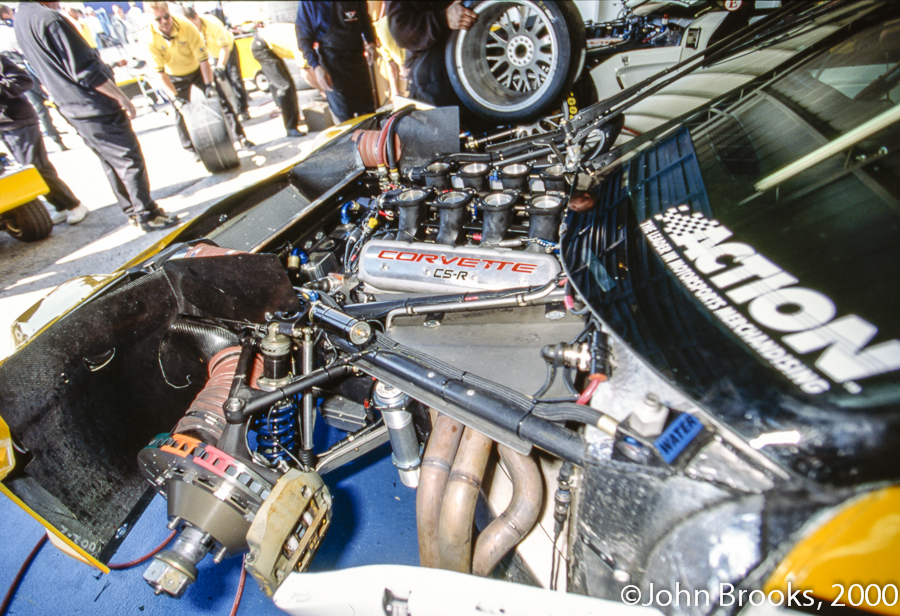
The main competition would be two Corvette C5-Rs run by Pratt & Miller on behalf of General Motors. During the 1999 season the Vettes had gradually got closer to the Viper squad, going into the Floridian classic they were quietly confident of coming out on top. The Corvette, first raced in 1999 at the Rolex 24, had 7 litres of Detroit V8 muscle to propel them along, it would be a mighty contest.
But if some disaster befell the factory squads then the out-gunned but still fearsome Porsche 911 GT2 would be around to pick up the pieces but that outcome was not expected.
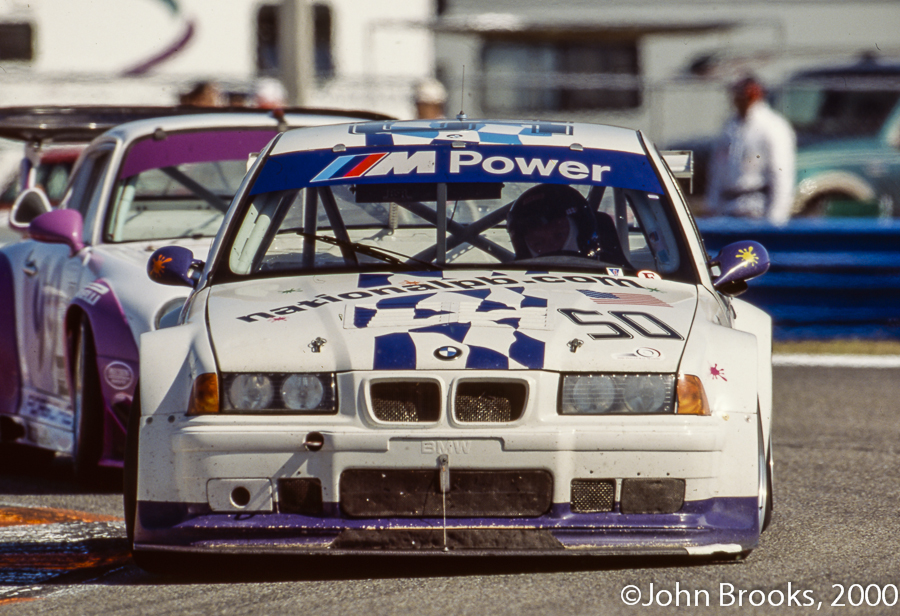
The second rank of GTs, GTU was expected to be a walk over for the phalanx of new Porsches but they would face determined opposition from the successful PTG BMW M3 squad, previous class winners at the Rolex.
The ‘Run What You Brung’ brigade were catered for in the A-GT class. They were tube framed, home built specials, regarded by the leading lights as mobile chicanes and not expected to feature in the grand scheme of things.
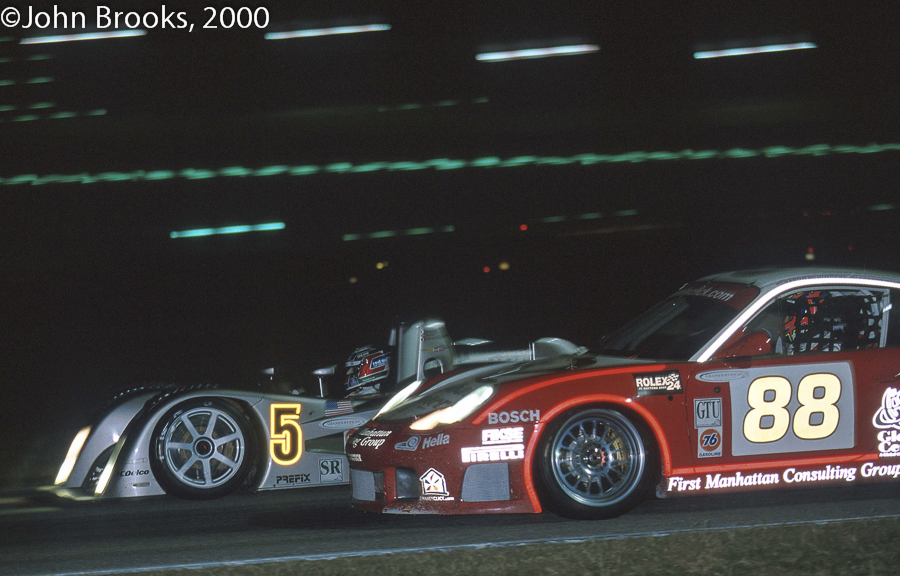
Practice and qualifying dragged on through Thursday and Friday, giving everyone a chance to get back into the groove after the winter break and especially to get used to running in close proximity with 79 other cars.
Traffic on the banking was manageable but on the infield and at the Bus Stop chicane at NASCAR Three great care had to be taken to avoid problems arising out of speed differentials between the quick guys and the not so quick.
During the night sessions the problem was even more acute. Somehow the drivers sorted it all out.
Meanwhile down in the garage areas the teams were racing against the clock to prepare their cars for the struggle ahead. Here Dick Barbour and Tony Dowe try to fettle what was widely regarded as the leading Porsche GT3-R.
The European teams are always pleased to find that the strict curfew regulations enforced at Daytona International Speedway meant no all-nighters, no matter what sociopaths who tend to run teams wanted. The Shark Lounge and Molly Brown’s had their Siren Call……………
Pole position went to James Weaver in the old faithful #20 Riley & Scott MK lll Ford who rattled round in 1:41.002. Actually the Dyson team entered their No. 20 car as being Lincoln powered. The team’s Ford engines were prepared by Lozano Brothers Racing Engines. “We’re just trying to work with our engine builders and engine developers to see what we can create, and maybe we’ll create something,” said team owner Rob Dyson. “You never know.”
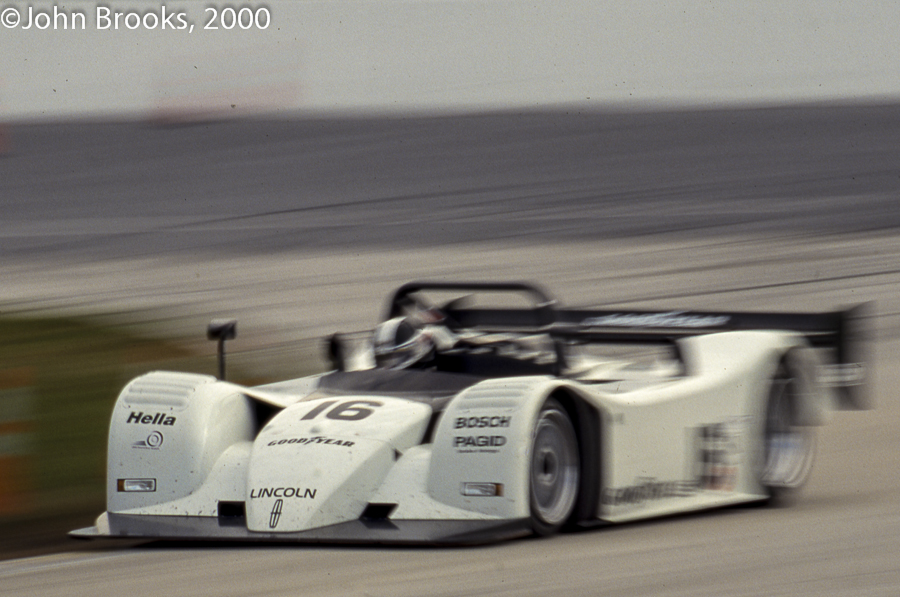
This was trying tempt the Ford owned brand to come and fight with their American rival, Cadillac. Perhaps Dyson should have painted that car black with gold piping and called it a Cartier Town Car………white-walled, Goodyear slicks please for P Diddy Weaver……….Yo!
Dyson had run one of the new Reynards at the early January test sessions at Daytona but reverted to their Rileys for the race itself. “We were planning to have two Reynards,” said Dyson. “Due to a number of problems, we were not able to get even one chassis working. Right after our test here we had to make the decision to run the Riley and Scott. Our objective is to win races. We just felt that we had a better chance of winning the race with the Riley & Scott rather than the Reynard. This is the Super Bowl of sports car racing. This is a race where we’ve been fortunate to win it, and that’s our objective this time.”
“We’ve got high hopes for the Reynard, I think any new car takes three or four months to get sorted out. I think Cadillac need a little more time as do Reynard,” Weaver added.
The Ferrari of Alex Caffi was second on the grid just a tad slower than Master James. A battle royal was in prospect.
The Italian, nicknamed “The Disco Kid” during his F1 days, was typically lyrical about his prospects, “This is a big event, I raced in Formula One, the top of racing cars, but this is a beautiful day in my life because Daytona is very famous, also in Europe. Especially in Italy, nobody forgets the finish of the three Ferraris in the late Sixties. This is one of the most famous races and I’m very happy to be here.” A local newspaper reporter’s dream.
Also pretty content with the way things were panning out was the Reynard team, lining up fourth on the grid. They were confident of being on the race pace and felt that they could be dark horses in the hunt for victory.
The lead Cadillac was one place down on the Reynard, it was clear that there was plenty of work to do on these elegant cars.
GTO pole and first blood to Ron Fellows and the Corvette with a lap of 1:45.889. Ron, one of the smartest drivers you will ever meet, was pleased. “This is our first pole with the Corvette so we’re pretty happy. We really didn’t do much since the test. We found a pretty good set up there. This morning we made one little change to the back and off we went to qualify. Right at the end of the second set of tires, I had a perfectly clear lap. The guys sent me out exactly at the right time. I was able to maximize the grip we had with the tires for one or two laps right at the end.”
Corvette 1, Viper 0 but still all to play for.
Fellows was still realistic about the race, “We’re still the underdogs here at the Rolex 24, these guys have won two straight Le Mans’ titles and we’re still chasing them. But we’ve got the package together to race for 24 hours. It’ll be a long race and the fastest car doesn’t necessarily always win, anything can happen. You’ve got to be smart with so many cars. It really won’t thin out until 1:00 or 2:00 in the morning. The biggest thing is traffic, just staying out of trouble.”
Prophetic words, indeed.
1:52.028 was good enough to secure pole in GTU class with Dirk Müller on qualifying duties for Dick Barbour Racing’s GT3-R. The loudspeakers were ringing out Friday at 6.30pm telling the faithful all to leave “The World Centre for Motorsport” for the day and head off to get rested in preparation for the race day. What would the Green Flag bring?
Saturday morning and the Sun punched its way West across the Atlantic, for those of us with business at Daytona International Speedway it was time stop admiring the colours over the ocean and head to the track. The weather was forecast to remain dry but it would get cold, even by European standards.
There were three clear contests in prospect, SR1 prototypes would head the field and all things being equal win the race. GTO would be a vicious bar brawl between the Detroit duo but if the boys up front did not watch it the Viper-Vette combo could get close, a podium for the fast and reliable GTs was a distinct possibility. GTU was almost certainly a Porsche walkover, numbers and speed would see to that.
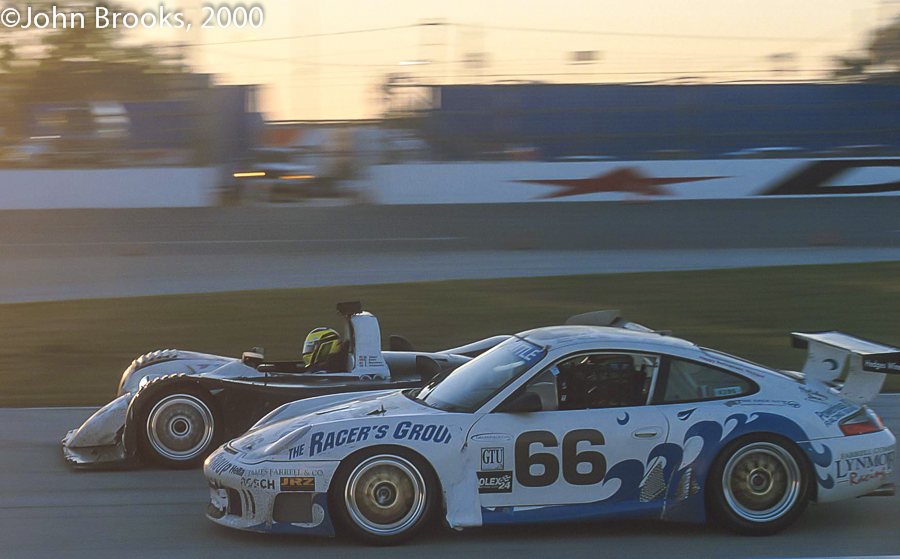
There were, and possibly still are, two schools of thought about how to approach competing in the Rolex 24 Hours. The question is simply, is this a race or an endurance? Flat out racing or stroke it round looking after the car and hope to finish?
Some driven by bitter experience favour the latter approach.
Take Mike Brockman, Paul Newman’s teammate in 1995, who was back to help his friend attempt to win again. “I’ve done this race a lot of times, I led it once for 13 hours, unfortunately it was the first 13 hours. It took me 15 attempts before I won it, and that was in 1995. Jack Roush, who we drove for in 1995 said it best, we were talking in the morning before the race, and we were talking about race strategy, he said, ‘there will be no racing here until the sun comes up, and not until I say so. ‘If we make it, and the sun comes up, and we’re still alive, then we’ll talk about racing.'”
Well that’s one way of going about things.
The other strategy is go flat out and devil take the hindmost.
James Weaver, who was as hard and fast a driver as ever graced the tracks, expressed it this way.
“The top sports cars, they’re more than strong enough to race flat out for 24 hours. There’s not much you can do to nurse one of these cars along. If you’ve got a good driver in it, you might as well drive it as fast as you can because you won’t break it. When you’ve got to race against people like Alex (Caffi), they’re going to be going flat out, we’ll take the fight to them, and they’ll be coming after us. It’s just a question of, don’t get too hot headed in traffic. That’s always the game here.”
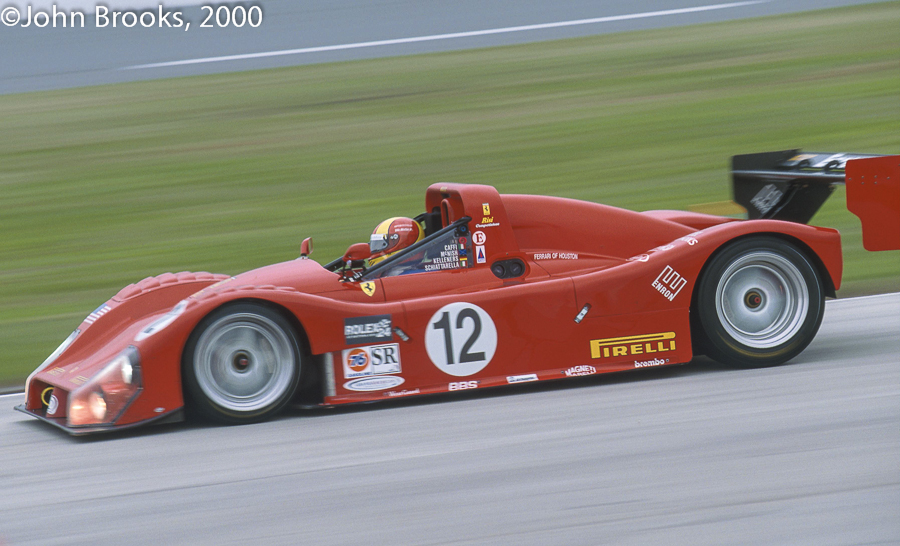
Anyhow, all the planning in the world usually goes out the window as soon as the Green Flag drops and the field of prototypes were soon flat out on the banking. The initial pace was set by the Lista Ferrari 333 SP driven forcefully as ever by Didier Theys. Almost from the start one of the main contenders for victory, the Risi Ferrari, ran into problems, Caffi spinning to the back of the field on lap 2, then within the hour there were transmission issues and fitting a new gearbox was the time consuming cure. Scratch one top prototype from the race victory.
With 79 cars starting from the grid, traffic, and how the leaders managed it, was always going to be a major factor. Given the disparity in speed and performance between the classes especially into the braking zones it was vital that the top drivers balance out ultimate pace with due circumspection. The best drivers really embrace the challenge of threading their way through the maze of cars in front of them.
Once again, James Weaver, explains things in his own, unique way. “Personally, the traffic element at Daytona, I find tremendously exciting and a real challenge. It’s like a high-speed video game or racing back from the pub through Piccadilly Circus in the rush hour. It’s just tremendously exciting. You try to judge all the closing speeds, what the other guy is going to do, see if you can recognize the helmet, determine who it is. When a car goes off line in front of you, you see if it’s throwing up dust, so you can tell if you can go off line. There are a thousand and one tricks you can do to make the race work for you.”
The battle raged up front between the Lista Ferrari and the Lola Ford of Konrad Motorsports with the evergreen Jan Lammers leading the charge. This conflict continued for the first three hours until an oil leak delayed the Lola. The #20 Dyson Riley & Scott took up the challenge shadowed by the leading Cadillac.
The gradual erosion of the lead prototypes propelled the GTO class battle into the the top ten positions overall. The #3 Covette of Ron Fellows, Justin Bell and Chris Kneifel pushing the #91 Viper of Olivier Beretta, Karl Wendlinger and Dominic Dupuy very hard and in case they stumbled there were the three support cars from the the Detroit duo in close attendance.
The only sign of weakness in the ORECA camp was that Olivier Beretta was ill with the after effects of chicken pox, which meant that Wendlinger in particular would have to take up the slack. He rose to the occasion in a champion’s style.
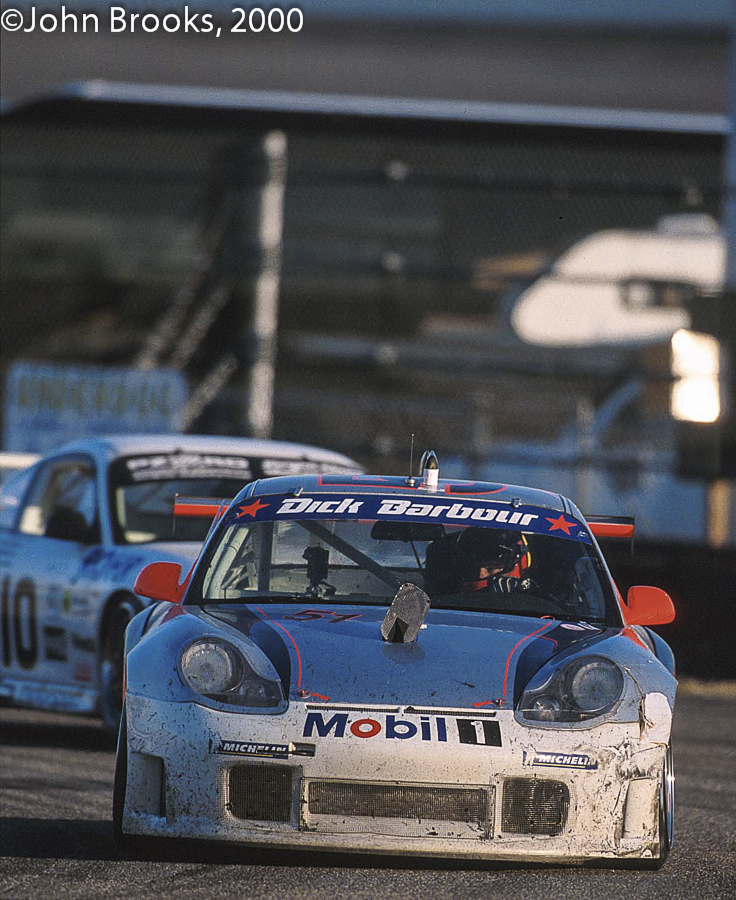
GTU was, as predicted, a walk over for the Porsche 911 GT3-R armada with the head of the pack being the Barbour Racing example with Lucas Luhr, Bob Wollek and Dirk Müller behind the wheel.
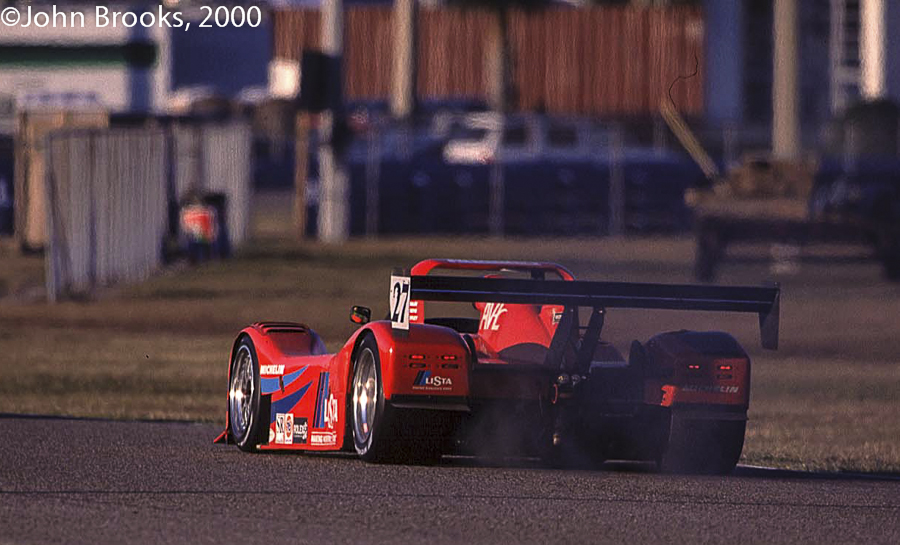
Around 6.00pm, just before sunset the leader slowed up with smoke coming from the engine bay. The Doran-Lista Ferrari limped back to the pits but their race was run.
“We had an air box fire,” said team manager Kevin Doran. “It’s kind of a documented problem with the Ferraris. It’s happened six or eight times before with different teams. It happened to us once before, at Portland last year. In a downshift deceleration mode you get an over-run of fuel in the air box, and for some odd reason, you get a backfire out of an air trumpet, and it ignites it, and all that excess fuel burns, and it takes out the injection wiring harness.”
The engine had ingested some of the debris so even re-wiring would be in vain as there was damage to the pistons. Didier Theys reflected on a race win that had got away. “The engine caught fire. We had a backfire and the backfire burned the wire harness, it melted a couple of trumpets, it even melted one of the butterflies. Too much fuel was going into the engine. I don’t know what happened. We’ve had one problem like this in the past, but that was after a pit stop. When you do a pit stop and you don’t clean up the engine properly, too much fuel goes into the engine and it starts to burn.”
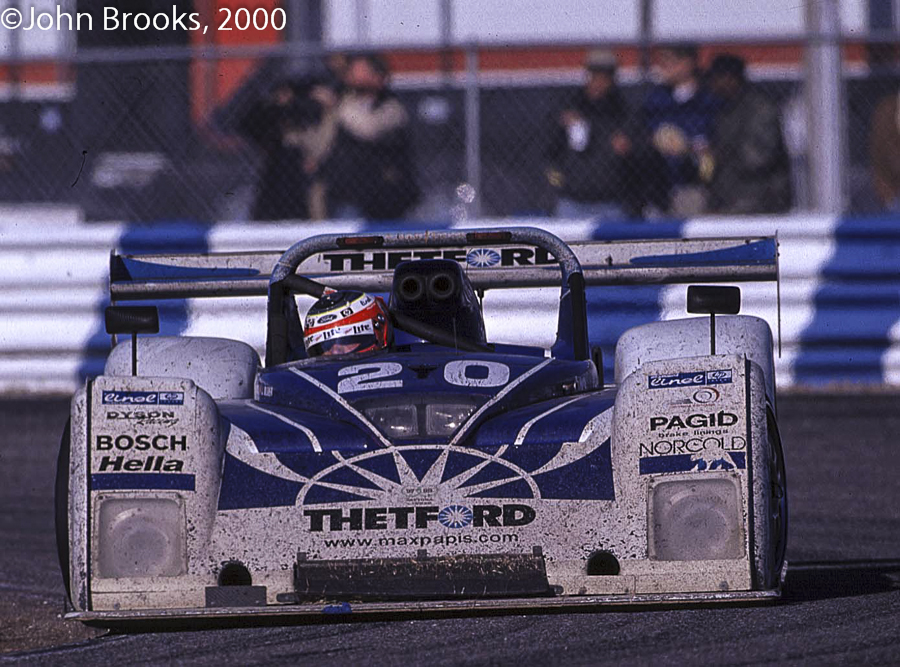
The misfortune that had struck the Ferraris meant that the #20 Dyson Riley & Scott Ford of James Weaver, Rob Dyson, Elliot Forbes-Robinson and Max Papis assumed the lead but the big surprise was the pace of the #5 Cadillac.
Indeed at the 6 hour point the #5 car was at the head of the field with a 30 second advantage over the Dyson Racing Riley & Scott but it was not to last. A series of problems with transmission, brakes and suspension blunted the Cadillac challenge, but the team just kept repairing the cars and sending them back out, retirement was not even contemplated.
The head of the field was not the only place that problems were found. Porsche was having something of a nightmare with their new GT3-Rs. Water pumps and consequently engines were failing and in numbers. This was not the way that Porsche does things, “Excellence was Expected” was something of a company motto right from the early days, so to introduce the first water cooled 911 based racer and then have water pump failures caused extremely red faces throughout the paddock.
Bob Wollek summed up the situation ” There was no warning, no light, no temperature going up, it just went ‘BANG’ on the straight.”
The explanation was simple enough, sand that had been used in the engine block casting process had not been fully cleaned out and the residue was clogging the water pumps causing them to seize and then the engines to fail. In short order entries from Dick Barbour Racing, Larbre, MAC Racing, Racers Group, Skea, Seikel, MCR, PK Sport, Reiser Callas and Haberthur all retired as a result of engine problems. Not good.
During the long hours of darkness the race stabilised with the Dyson Riley & Scott having a ten lap lead over the chasing pack of Vipers and Vettes.
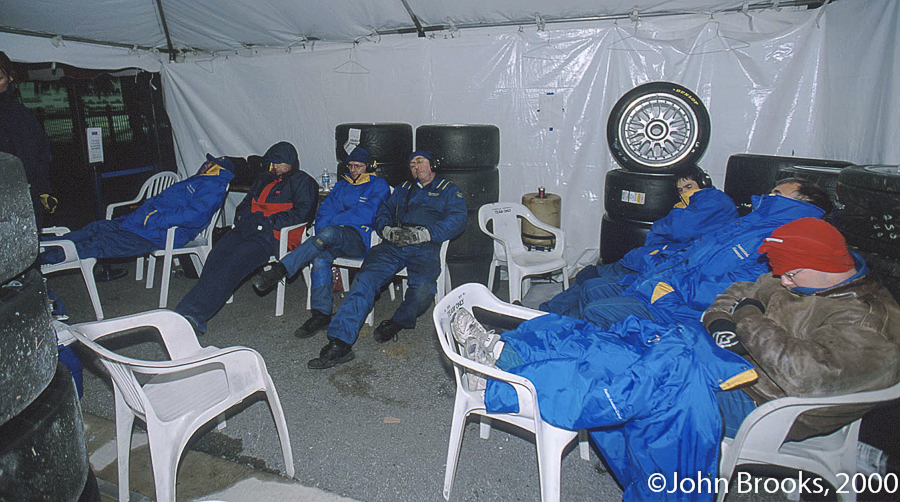
The 2000 Rolex 24 was run under unusually cold conditions with the temperature hovering just above freezing for most of the night. This put extra strain on the already exhausted crews who would take whatever rest they could between pitstops.
A routine stop for the leader, EFR out, Rob Dyson in. Behind the Dyson car and the factory Vipers and Vettes the privateer Chamberlain Vipers ran strongly, moving into the top ten overall as the Porsches failed.
The Corvette #3 ran flat out to keep up the pressure on the leading Vipers but could not quite close the gap. Here Justin Bell heads out for another stint in the dark.
Around 3.00am point the race changed course again. The #20 was 13 laps up on the #93 Viper but trouble was on the way as the leader started to slow. A pitstop to investigate led to the team removing the valve covers in order to find what has become a persistent but slight misfire. No broken rockers or valve springs were discovered but the restriction in pace and the unscheduled time spent in the pits cut the lead over the pack of GTO cars to 8 laps.
Another strong performer was the #6 Cadillac of Butch Leitzinger, Franck Lagorce and Andy Wallace. Early race problems had dropped them down the order to 69th but by 5.00am they were up to second place overall. They were seven laps down on the Dyson lead car and were scrapping with #91 and #93 Vipers. Then problems with the gearbox meant a complete change of transmission which cost them around 30 laps and any chance of victory for Cadillac.
The sun came up to a sick Riley & Scott up against a charging pack of Vipers and a lone Vette, would Dyson make it to the finish line and score a third win in the Rolex 24 Hours?
GTU class was firmly in the grasp of the G&W Motorsports GT3-R but shortly after 18 hours they too suffered the dreaded Porsche engine failure. Uwe Alzen was not happy, “We were more than 10 laps ahead and the car was running perfectly. The only problems we had were with a broken seat and something wrong with the jacking system.”

A surprise at sunrise was to see the Johansson Matthews Reynard still running. Four gearbox changes plus numerous other repairs had seen the crew exhaust themselves. However the warming rays of the Sun gave fresh hope to the survivors still running.
For the Dyson team the agony continued as the leading Viper and Vette chipped away at their lead till they slipped behind with just two hours of the race to go. The team could see this fate coming as they lost around ten seconds a lap to the GTO pursuers. Rob Dyson was philosophical about the situation, “Specifically, what happened was an exhaust valve had a crack in it starting about one in the morning. We had a high-speed misfire that was due to a crack in an exhaust valve, and those things don’t heal themselves.”
#91 held an advantage over #3 of around a lap but Pratt & Miller were not done yet. There would be a sprint to the finish.
The #3 Corvette got back on to the lead lap with an aggressive pit strategy and was really pushing in the final hour. Ron Fellows rung the neck out of the Vette but Karl Wendlinger was up to the task in hand and was 32.7 seconds in front when the Chequered Flag dropped at 1.00pm Sunday. Victory, the closest margin in the race’s history, for Viper and Oreca.
The team had remained calm even during the late onslaught from the #3, “Before I left the pits for the last half hour of the race, I knew the Corvette could be very fast, and that Ron Fellows was a very fast driver,” said Wendlinger. “But I also knew that throughout the race we’d learned how fast our car could run, and that we could win the race with the pace we’d set.”
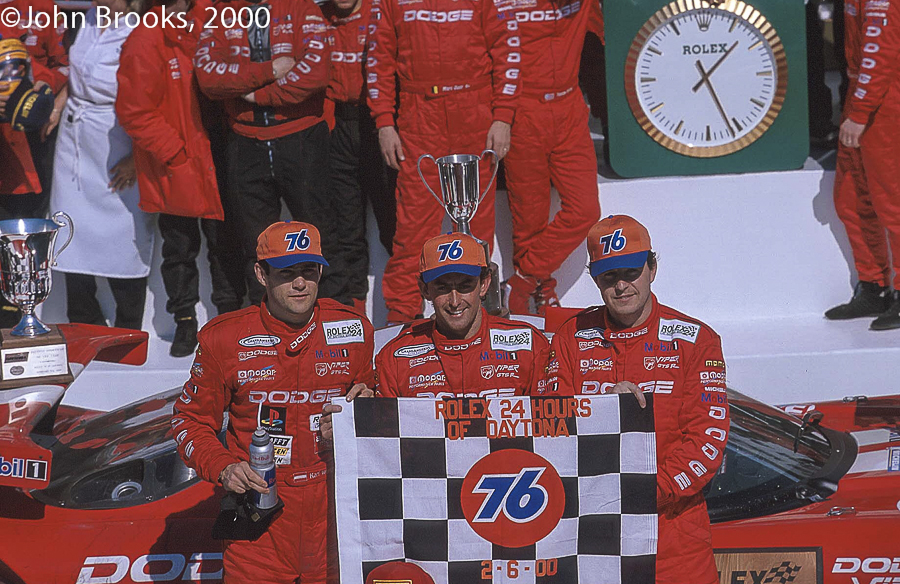
Celebrations then in Victory Lane for the French team and much later in the Shark Lounge………………….Hughes de Chaunac, Team Principal of Oreca, was ecstatic, “It is hard to imagine you can win a 24-hour race by 36 seconds. The entire Oreca team did a fantastic job all weekend, Dodge gave us a tremendous racecar and it was our job to perform. The Corvette proved to be a tremendous challenge to the Viper and we respect their programme. It sets up an epic battle for when we race Le Mans.”
Beaten by the narrowest of margins, the Corvette team was disappointed but rightly proud of their performance, it was the first of many such displays in the following seasons.
Surviving the carnage in the Porsche GTU ranks was the Haberthur 911 GT3-R driven by Fabio Babini, Luca Drudi, Gabrio Rosa and Fabio Rosa. They finished 8th overall and were worthy class winners.
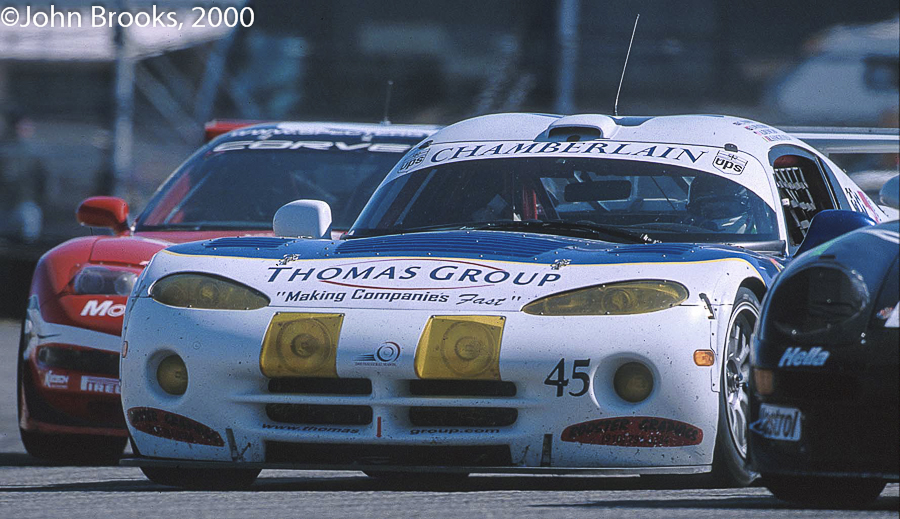
Adding to joy in the Dodge camp was the top ten finish for two of the customer cars run by Chamberlain Motorsport.
The top brass at Chrysler were very pleased, John Fernandez, Director of Engineering and Speciality Vehicles, had this to say. “This is a historical moment. An outright win in one of the world’s most prestigious endurance races by a production-based car like the Dodge Viper GTS-R is rare and hard-earned. In fact, the Dodge Viper GTS-R – now a Le Mans and Daytona 24-hour race winner – is remarkably like the Vipers that you can buy from your neighborhood Dodge Dealer. Not only does it look the same, but it uses the same basic engine, chassis, transmission and suspension. If push came to shove and we needed to, we could have gone out to the Viper Owners’ Club Parking Paddock in the Infield and swapped parts with our customers’ cars. The only significant differences are a full roll cage for safety, a carbon fiber body (versus composite plastic bodywork on the street cars), a dry-sump engine and racing slicks. But having a great production car to start with gives us the edge on the track. And conversely, having a great racing car makes our street cars better.”
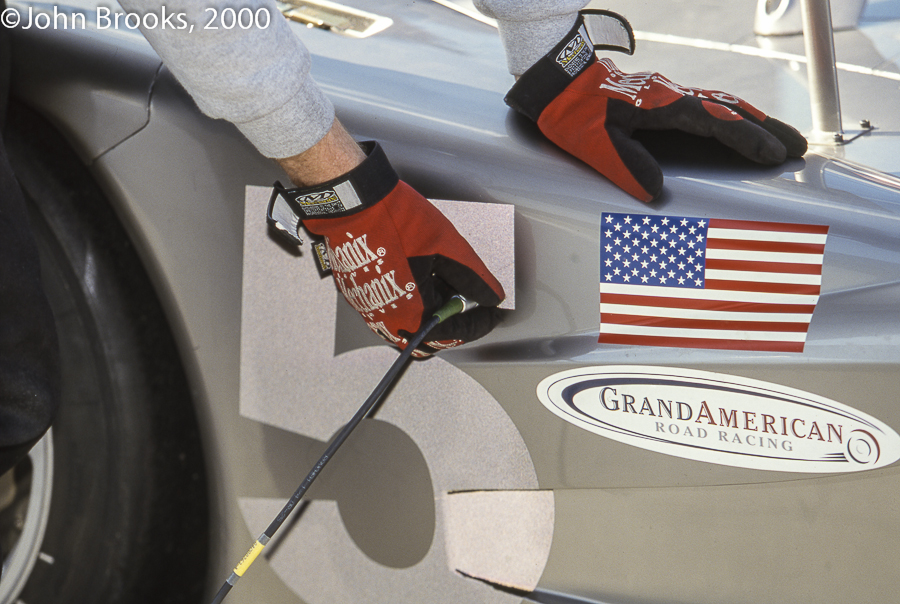
Grand-Am had kicked off their existence and what a way to start.
Grand-Am President, Roger Edmondson and his team were overjoyed with the first event, ” The Rolex 24 at Daytona was not just a great first race for Grand-Am, it was an outstanding motorsport event by any basis of judgement.”
Those of us who had shivered our way through the cold Floridian night would agree whole heartedly. Grand-Am was on its way.
John Brooks, January 2013
The post The Inauguration first appeared on DoubleDeClutch.com.
]]>